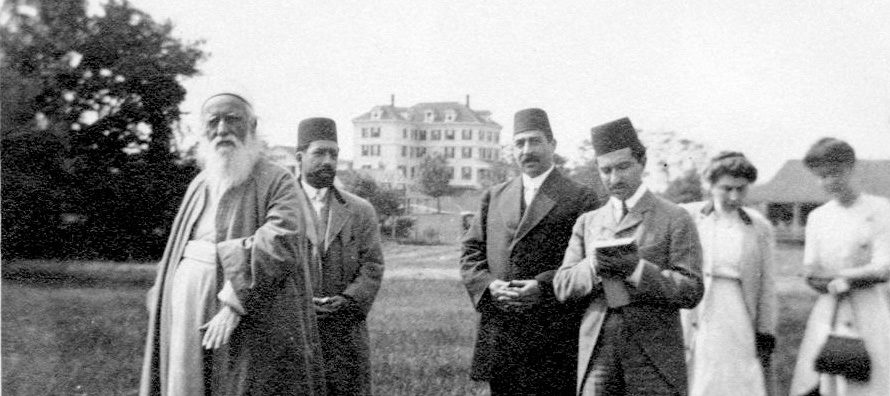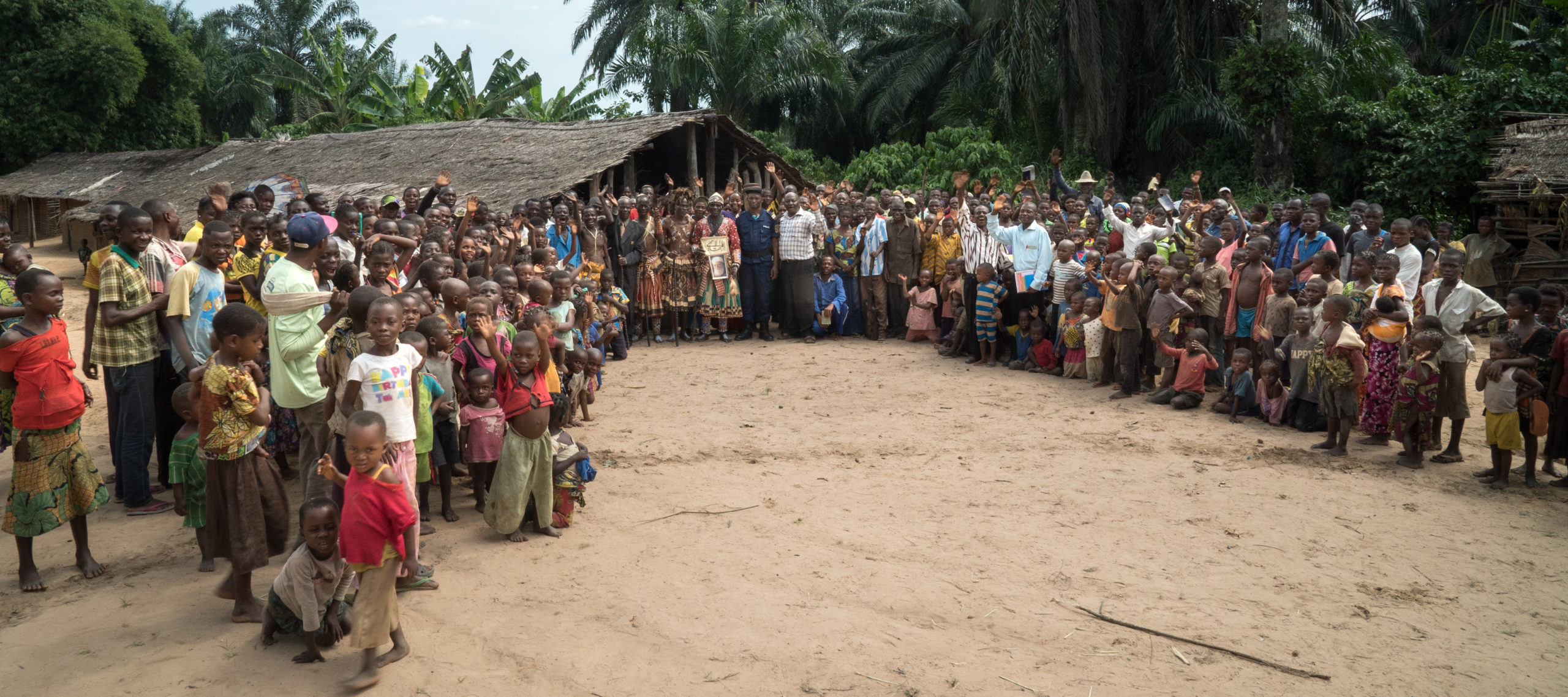‘Abdu’l-Bahá’s Reading of Social Reality
‘Abdu’l-Bahá is a figure unique in religious history. Understanding His critical role is essential to understanding the workings of the Bahá’í Faith – in its past, present, and future.
For forty years ‘Abdu’l-Bahá was a prisoner of the Ottoman Empire, having been exiled as a nine-year-old child, when members of Bahá’u’lláh’s family were expelled from Iran to the Ottoman domains. Undeterred by the restrictions to His freedom and the challenges of daily life, ‘Abdu’l-Bahá directed His attention to administering the affairs of the growing Bahá’í community and to easing the plight of humanity by actively promoting a vision of a just, united, and peaceful world.
Keenly aware of the events transpiring in the world at large, ‘Abdu’l-Bahá viewed the establishment of universal peace as one of the most critical issues of the day. His writings and public talks outline the Bahá’í approach to peace and methods for its attainment and explain and illuminate the teachings of Bahá’u’lláh. They reflect a profound and sensitive understanding of the state of the world and demonstrate the relevance of the Bahá’í teachings to the alleviation of the human condition. The Bahá’í approach stresses a reliance on the constructive power of religion and on the forces of social and spiritual cohesion as a way to impact the world.1For a detailed discussion of the Bahá’í teachings on peace, see Hoda Mahmoudi and Janet A. Khan. A World Without War: ‘Abdu’l-Bahá and the Discourse for Global Peace (Wilmette, IL: Bahá’í Publishing, 2020).
‘Abdu’l-Bahá saw in World War I a harrowing lesson of the human necessity for peace – and of the darkness that can ensue without peace. He knew and wrote extensively that nothing short of the establishment of the spiritual foundations for peace could result in lasting peace and security for humanity. In His written works, ‘Abdu’l-Bahá repeatedly draws our attention to the need for establishing the spiritual prerequisites for peace, requisites which, in turn, remove the barriers to peace, such as racial prejudice, sexism, economic inequalities, sectarianism, and nationalism.
That remarkable time in the history of the world provides the backdrop to the Tablets of the Divine Plan, a series of letters ‘Abdu’l-Bahá addressed to the Bahá’ís of North America. A study of these letters together with two detailed letters2Tablets to the Hague. Available at www.bahai.org/r/188605710 on peace addressed to the Executive Committee of the Central Organization for a Durable Peace at The Hague provides an opportunity to better understand the nature of universal peace as envisioned in the Bahá’í writings, the prerequisites of peace, and how peace can be waged. The Tablets of the Divine Plan set out a systematic strategy aimed at strengthening embryonic Bahá’í communities, founded on the principle of the oneness of humankind, and mobilizing their members to engage in activities associated with spreading the values of peace. The Tablets to The Hague are examples from among ‘Abdu’l-Bahá’s tireless efforts to contribute to the most relevant discourses of His time and to engage like-minded individuals and groups throughout the world in the pursuit of peace.3Mahmoudi and Khan, World Without War.
A Power of Implementation
‘Abdu’l-Bahá’s caveat that “the power of thought” depends on “its manifestation in action,”4‘Abdu’l-Bahá. Paris Talks. Available at www.bahai.org/r/361617663 is particularly relevant to the idea of peace. Consider! Nearly 20 million men, women and children were killed during the four years of World War I!
‘Abdu’l-Bahá took the principles of global peace revealed by Bahá’u’lláh and shaped them into a practical grand strategy for how to understand, practice, and pursue peace. Among the voluminous writings of ‘Abdu’l-Bahá, the fourteen letters of the Tablets of the Divine Plan outlined detailed instructions and systematic actions for the spread of the spiritual teachings of the Bahá’í Faith throughout the world. Their aim was the establishment of growing communities throughout the world that would embody the values of peace, would comprise the diverse populations of the human family, and would contribute to the spiritualization of the planet—a vision that was being promoted as the world was witnessing the horrors and sufferings of the war:
Black darkness is enshrouding all regions… all countries are burning with the flame of dissension…the fire of war and carnage is blazing throughout the East and the West. Blood is flowing, corpses bestrew the ground, and severed heads are fallen on the dust of the battlefield.5‘Abdu’l-Bahá. Tablets of the Divine Plan. Available at www.bahai.org/r/713519310
‘Abdu’l-Bahá called on the recipients of the Tablets to arise and take action, establishing throughout the planet new communities founded on the spiritual principles of love, goodwill, and cooperation among humankind. Through such calls for acts of sacrificial service that arising to spread the divine teachings would entail, ‘Abdu’l-Bahá was promoting an antidote to the social and spiritual illnesses that contribute to the conditions of war. He reminded the recipients of His letters of the power of spiritual forces to transform hatred, division, war, and destruction into love, unity, dignity, and the nobility of every human being. “Extinguish this fire,” He wrote, “so that these dense clouds which obscure the horizon may be scattered, the Sun of Reality shine forth with the rays of conciliation, this intense gloom be dispelled and the resplendent light of peace shed its radiance upon all countries.”6‘Abdu’l-Bahá. Tablets of the Divine Plan. Available at www.bahai.org/r/577240123
‘Abdu’l-Bahá explained that if we desire peace in the world, we must begin by planting peace in our own hearts. This principle can be found throughout the writings of Bahá’u’lláh:
What is preferable in the sight of God is that the cities of men’s hearts, which are ruled by the hosts of self and passion, should be subdued by the sword of utterance, of wisdom and of understanding. Thus, whoso seeketh to assist God must, before all else, conquer, with the sword of inner meaning and explanation, the city of his own heart and guard it from the remembrance of all save God, and only then set out to subdue the cities of the hearts of others. 7Bahá’u’lláh. The Summons of the Lord of Hosts. Available at www.bahai.org/r/581531547
While ‘Abdu’l-Bahá sought to mobilize the Bahá’ís of North America to spread the unifying message of Bahá’u’lláh throughout the world, He also pursued numerous opportunities to introduce into the discourses of His time essential concepts and principles that would help the thinking of His contemporaries to evolve and assist humanity to move towards the realization of peace.
Indeed, in His letters to the Central Organization for a Durable Peace, written in 1919 and 1920 after the war’s conclusion, ‘Abdu’l-Bahá gently but unequivocally challenged His audience to broaden its conception of peace. Specifically, in His first letter, ‘Abdu’l-Bahá explored “many teachings which supplemented and supported that of universal peace,” such as the “independent investigation of reality,” “the oneness of the world of humanity,” and “the equality of women and men.” Some other related teachings of Bahá’u’lláh that were explained by ‘Abdu’l-Bahá included the following: “that religion must be the cause of fellowship and love,” “that religion must be in conformity with science and reason,” “that religious, racial, political, economic and patriotic prejudices destroy the edifice of humanity,” and “that although material civilization is one of the means for the progress of the world of mankind, yet until it becomes combined with Divine civilization, the desired result, which is the felicity of mankind, will not be attained.”8‘Abdu’l-Bahá. First Tablet to the Hague. Available at www.bahai.org/r/551373700 ‘Abdu’l-Bahá then reiterated His point, stating:
These manifold principles, which constitute the greatest basis for the felicity of mankind and are of the bounties of the Merciful, must be added to the matter of universal peace and combined with it, so that results may accrue. 9‘Abdu’l-Bahá. First Tablet to the Hague. Available at www.bahai.org/r/376814060
In the Second Tablet to the Hague, ‘Abdu’l-Bahá observed that for peace to be realized in the world, it would not be enough that people were simply informed about the horrors of war. “Today the benefits of universal peace are recognized amongst the people, and likewise the harmful effects of war are clear and manifest to all,” wrote ‘Abdu’l-Bahá.
But in this matter, knowledge alone is far from sufficient: A power of implementation is needed to establish it throughout the world.… It is our firm belief that the power of implementation in this great endeavour is the penetrating influence of the Word of God and the confirmations of the Holy Spirit.10‘Abdu’l-Bahá. Second Tablet to the Hague. Available at www.bahai.org/r/705335105
Abdu’l-Bahá asserted that it is through this power of implementation that “the compelling power of conscience can be awakened, so that this lofty ideal may be translated from the realm of thought into that of reality.” “It is clear and evident,” He explained, “that the execution of this mighty endeavour is impossible through ordinary human feelings but requireth the powerful sentiments of the heart to transform its potential into reality.” 11‘Abdu’l-Bahá. Second Tablet to the Hague. Available at www.bahai.org/r/705335105
Spiritual Foundations of Peace
Understanding ‘Abdu’l-Bahá’s approach to peace also demands we understand Bahá’u’lláh’s direct engagement with the world and His doctrinal declarations concerning the Bahá’í Faith. Bahá’u’lláh’s writings describe a “progressive revelation” of religion in which individual religions arise to meet the need of their times. Bahá’u’lláh stated that particular religions were entrusted with a message and a spirit that “best meet the requirements of the age in which” that religion appeared.12Bahá’u’lláh. Gleanings from the Writings of Bahá’u’lláh. Available at www.bahai.org/r/757983498 In this context, religions are viewed as the gradual unfolding of one religion that is being renewed from age to age. The variations in the teachings of these religions are attributable to a world that is constantly changing and needing spiritual renewal and spiritual principles. Because “ancient laws and archaic ethical systems will not meet the requirements of modern conditions,” then, as a new religion takes shape, new sets of laws and principles are revealed to humanity and new spiritual beliefs must always emerge.13‘Abdu’l-Bahá. The Promulgation of Universal Peace. Available at www.bahai.org/r/841894042
Bahá’u’lláh’s Revelation calls on individuals to internalize spiritual principles and express them through actions. He proclaimed “to the world the solidarity of nations and the oneness of humankind.”14‘Abdu’l-Bahá. The Promulgation of Universal Peace. Available at www.bahai.org/r/955162073 He described “a human race conscious of its own oneness.”15Bahá’í International Community, Who is Writing the Future? (New York: Office of Public Information, 1999), V.2. Complex concepts such as human oneness and the global order were transformed from utopian ideals to spiritual commands of the highest order; the Bahá’í writings unfold and clarify how such commands might be fulfilled. Bahá’u’lláh’s vision also details the need for the construction of a World Order, an order comprising administrative institutions at the local, regional, national, and international levels. Such institutions, among other things, serve as channels for the application of spiritual principles. As the institutions evolve over decades and centuries, a new world order will eventually produce the conditions conducive to global peace. Yet, even as the Bahá’í writings envision a long-term process of global transformation and maturation of the human race, they also assert that change will also arise from individual and collective efforts at the grassroots of society. In exploring the creative Word and learning to apply it to their individual and collective lives, individuals are spiritually transformed from the inside-out, and they contribute to the transformation of communities, institutions, and society at large.
In describing the Bahá’í Faith’s strong prohibition on waging war, ‘Abdu’l-Bahá, stated that Bahá’u’lláh “abrogated contention and conflict, and even rejected undue insistence. He exhorted us instead to ‘consort with the followers of all religions in a spirit of friendliness and fellowship.’ He ordained that we be loving friends and well-wishers of all peoples and religions and enjoined upon us to demonstrate the highest virtues in our dealings with the kindreds of the earth….What a heavy burden was all that enmity and rancour, all that recourse to sword and spear!” ‘Abdu’l-Bahá wrote of the impact of war on humanity. “Conversely, what joy, what gladness is imparted by loving-kindness!”16‘Abdu’l-Bahá. Light of the World. Available at www.bahai.org/r/408465671
‘Abdu’l-Bahá viewed peace as a central facet of the work of the Bahá’í Faith. There was no separating peace from the Bahá’í Faith, nor was there any separation between the Faith and peace. Peace was both medium and message, and the Bahá’í Faith itself was the vehicle for establishing peace. He explained, in His Second Tablet to the Hague, that the followers of Bahá’u’lláh were actively engaged in the establishment of peace, because their
desire for peace is not derived merely from the intellect: It is a matter of religious belief and one of the eternal foundations of the Faith of God. That is why we strive with all our might and, forsaking our own advantage, rest, and comfort, forgo the pursuit of our own affairs; devote ourselves to the mighty cause of peace; and consider it to be the very foundation of the Divine religions, a service to His Kingdom, the source of eternal life, and the greatest means of admittance into the heavenly realm.”17‘Abdu’l-Bahá, Tablets to the Hague. Available at www.bahai.org/r/749353064
Strategic Plan for the Achievement of Peace
‘Abdu’l-Bahá dedicated His life to the advancement of the Cause of Bahá’u’lláh and to the establishment of universal peace. His peace activities in the West include many talks given in Europe and North America. He had close contact with civic leaders and social activists and participated in the 1912 Lake Mohonk Conference on Peace and Arbitration in upstate New York attended by over 180 prominent people from the United States and other countries. He addressed a variety of American women’s organizations, gave presentations at universities and colleges, spoke in Chicago at the NAACP’s annual conference, and gave lectures at churches and synagogues.
Yet for all His courageous activities, and all the efforts of the Bahá’ís, ‘Abdu’l-Bahá was greatly saddened by the world’s apparent indifference to Bahá’u’lláh’s call for global peace and to the efforts He Himself had made in the course of His travels. Shoghi Effendi, ‘Abdu’l-Bahá’s grandson and His appointed successor, wrote: “Agony filled His soul at the spectacle of human slaughter precipitated through humanity’s failure to respond to the summons He had issued, or to heed the warnings He had given.”18Shoghi Effendi. God Passes By. Available at www.bahai.org/r/986414751
Given the turbulent condition of the world and the dangers facing humankind, He devised a detailed strategic plan to address the situation and to assign responsibility for its implementation. His plan, devised in 1916 to 1917 and set out in fourteen letters, known collectively as the Tablets of the Divine Plan, was entrusted to the members of the Bahá’í community in the United States and Canada. The pivotal goal of the Tablets of the Divine Plan is directly associated with the long-range process that will lead to the achievement of peace in the world as envisaged in Bahá’u’lláh’s writings.
Designated as “the chosen trustees and principal executors of ‘Abdu’l-Bahá’s Divine Plan,”19Shoghi Effendi. This Decisive Hour. Available at www.bahai.org/r/194317153 the North American Bahá’ís were called upon to assume a prominent role in taking the message of Bahá’u’lláh to all the countries of the world and for effecting the transformation in values necessary for the emergence of a world order characterized by justice, unity, and peace. This great human resource – the body of willing believers in the West – was notable for its enthusiasm, determination, and deep commitment to Bahá’u’lláh’s vision for change. These communities were ideal incubators for the processes of peace.
At the time the messages of the Tablets of the Divine Plan were being written, North American Bahá’ís comprised but a small percentage of the total Bahá’ís in the world (though many had met ‘Abdu’l-Bahá in 1912). Commenting on ‘Abdu’l-Bahá’s choice of the North American Bahá’ís and the link between World War I and the Tablets of the Divine Plan, Shoghi Effendi indicated that the Divine Plan “was prompted by the contact established by ‘Abdu’l-Bahá Himself, in the course of His historic journey, with the entire body of His followers throughout the United States and Canada. It was conceived, soon after that contact was established, in the midst of what was then held to be one of the most devastating crises in human history.”20Shoghi Effendi. This Decisive Hour. Available at www.bahai.org/r/257510249 Shoghi Effendi offered further comment concerning the historic bond between ‘Abdu’l-Bahá and the North American community: “This is the community,” he reminded us,
which, ever since it was called into being through the creative energies released by the proclamation of the Covenant of Bahá’u’lláh, was nursed in the lap of ‘Abdu’l-Bahá’s unfailing solicitude, and was trained by Him to discharge its unique mission through the revelation of innumerable Tablets, through the instructions issued to returning pilgrims, through the despatch of special messengers, through His own travels at a later date, across the North American continent, through the emphasis laid by Him on the institution of the Covenant in the course of those travels, and finally through His mandate embodied in the Tablets of the Divine Plan.21Shoghi Effendi. God Passes By. Available at www.bahai.org/r/256927469
It is clear that ‘Abdu’l-Bahá was aware of the potential capacity of the North American Bahá’ís to carry out the task with which they had been entrusted. His extensive travels in North America afforded the opportunity to assess, at first hand, the spiritual, social, and political environment of the continent and to appreciate the freedoms – intellectual, artistic, political, and, particularly, the religious freedom—inherent in North American society. And it is also apparent that He understood the spiritual possibilities of the West and the desire of women and men to seek a fuller expression of all things – of themselves, of their society, of the world.
Significance of the Tablets of the Divine Plan
As described above, the Tablets of the Divine Plan constitute the charter for the propagation of the Bahá’í Faith and outline ‘Abdu’l-Bahá’s plan for the spiritual regeneration of the world. The letters therein set out the prerequisites for peace and assign responsibility to the North American believers “to plant the banner of His Father’s Faith . . . in all the continents, the countries and islands of the globe.”22Shoghi Effendi. God Passes By. Available at www.bahai.org/r/552193552 They focus on the work of promulgating and implementing Bahá’u’lláh’s salutary message of unity, justice, and peace in a systematic and orderly manner. They represent a strategic intervention put in place by ‘Abdu’l-Bahá to ensure the ongoing and systematic dissemination of the values of peace and the promotion of activities associated with moral and social advancement. They describe a spiritually based approach to peace that is pragmatic, long-term, flexible, and durable.
In those darkest days of World War I, the means of communication between ‘Abdu’l-Bahá in Palestine (then under the rule of the Ottoman Empire) and the community of His followers around the world were disrupted and, for a period, severed. The first eight Tablets were written in the spring of 1916, and the second group was penned during the spring of 1917. The first group did not arrive in North America until the fall of 1916, while the delivery of the remaining Tablets was delayed until after the cessation of hostilities.23Amin Banani. Foreword to Tablets of the Divine Plan. (Wilmette, IL: Bahá’í Publishing Trust, 1993), xxi.
The Great War of 1914-1918 rocked the very foundations of society and dramatically changed the shape of the world. The historian Margaret MacMillan provides a telling summary of the impact of the War:
Four years of war shook forever the supreme self-confidence that had carried Europe to world dominance. After the western front Europeans could no longer talk of a civilizing mission to the world. The war toppled governments, humbled the mighty and overturned whole societies. In Russia the revolutions of 1917 replaced tsarism, with what no one yet knew. At the end of the war Austria-Hungary vanished, leaving a great hole at the centre of Europe. The Ottoman empire, with its vast holdings in the Middle East and its bit of Europe, was almost done. Imperial Germany was now a republic. Old nations—Poland, Lithuania, Estonia, Latvia—came out of history to live again and new nations—Yugoslavia and Czechoslovakia—struggled to be born.24Margaret MacMillan. Peacemakers: Six Months that Changed the World. (London: John Murray, 2001), 2.
The Tablets captured the mood of the day—the complex fusion of anxiety and despair, the burning desire to end a war more brutal than any the world had ever known, and a desire for a new approach to peaceful existence. Addressing this heartfelt yearning, ‘Abdu’l-Bahá offered a contrasting vision of how the world might be if it lived in harmony:
This world-consuming war has set such a conflagration to the hearts that no word can describe it. In all the countries of the world the longing for universal peace is taking possession of men. There is not a soul who does not yearn for concord and peace. A most wonderful state of receptivity is being realized. This is through the consummate wisdom of God, so that capacity may be created, the standard of the oneness of the world of humanity be upraised, and the fundamental of universal peace and the divine principles be promoted in the East and the West.25‘Abdu’l-Bahá. Tablets of the Divine Plan. Available at www.bahai.org/r/500285326
In another Tablet, ‘Abdu’l-Bahá reflected on the impact of World War I on humankind and offered a context for understanding the “wisdom of this war”:
In short, after this universal war, the people have obtained extraordinary capacity to hearken to the divine teachings, for the wisdom of this war is this: That it may become proven to all that the fire of war is world-consuming, whereas the rays of peace are world-enlightening. One is death, the other is life; this is extinction, that is immortality; one is the most great calamity, the other is the most great bounty; this is darkness, that is light; this is eternal humiliation and that is everlasting glory; one is the destroyer of the foundation of man, the other is the founder of the prosperity of the human race.26‘Abdu’l-Bahá. Tablets of the Divine Plan. Available at www.bahai.org/r/828798977
‘Abdu’l-Bahá’s response to war, as set out in the Tablets of the Divine Plan, went far beyond providing an alternative vision. He called for constructive mobilization consistent with the local situation. For example, tapping into peoples’ receptivity to new ideas resulting from the sufferings associated with war, He directed the Bahá’ís to take steps to spread Bahá’u’lláh’s teachings, and He set out other concrete actions that could be immediately taken. These activities aimed not only to enlarge the Bahá’í community but were considered essential to spreading the values of peace in the wider society. To this end, He invited “a number of souls” to “arise and act in accordance with the aforesaid conditions, and hasten to all parts of the world.…Thus in a short space of time, most wonderful results will be produced, the banner of universal peace will be waving on the apex of the world and the lights of the oneness of the world of humanity may illumine the universe.”27‘Abdu’l-Bahá. Tablets of the Divine Plan. Available at www.bahai.org/r/998358260
The Tablets of the Divine Plan underlined the contribution of religion to individual and social development. ‘Abdu’l-Bahá stated:
Consider how the religions of God served the world of humanity! How the religion of Torah became conducive to the glory and honor and progress of the Israelitish nation! How the breaths of the Holy Spirit of His Holiness Christ created affinity and unity between divergent communities and quarreling families! How the sacred power of His Holiness Muḥammad became the means of uniting and harmonizing the contentious tribes and the different clans of Peninsular Arabia—to such an extent that one thousand tribes were welded into one tribe; strife and discord were done away with; all of them unitedly and with one accord strove in advancing the cause of culture and civilization, and thus were freed from the lowest degree of degradation, soaring toward the height of everlasting glory!28‘Abdu’l-Bahá. Tablets of the Divine Plan. Available at www.bahai.org/r/191427232
Within this context, ‘Abdu’l-Bahá affirmed that the Bahá’í community’s historic mission was at heart a spiritual enterprise, and He illustrated the capacity of the community to unite peoples of different background. He wrote:
Consider! The people of the East and the West were in the utmost strangeness. Now to what a high degree they are acquainted with each other and united together! How far are the inhabitants of Persia from the remotest countries of America! And now observe how great has been the influence of the heavenly power, for the distance of thousands of miles has become identical with one step! How various nations that have had no relations or similarity with each other are now united and agreed through this divine potency! Indeed to God belongs power in the past and in the future! And verily God is powerful over all things!29‘Abdu’l-Bahá. Tablets of the Divine Plan. Available at www.bahai.org/r/205096335
The community-building activities initiated by the Bahá’ís at the behest of ‘Abdu’l-Bahá and the diversity of the Faith’s emerging community constitute a powerful means to engage the interest and attract the collaboration of like-minded people who are also committed to the cause of enduring social change and are willing to work for the creation of a culture of peace.
The vision of the Tablets of the Divine Plan is a vision that regards all human beings as being responsible for the advancement of civilization. The Bahá’í Faith looks to ensure such advancement is possible by highlighting the pathways of unity. To initiate the processes of individual and social transformation, ‘Abdu’l-Bahá calls on his followers to embrace a series of tasks – in a sense, to get to work – so that they might
occupy themselves with the diffusion of the divine exhortations and advices, guide the souls and promote the oneness of the world of humanity. They must play the melody of international conciliation with such power that every deaf one may attain hearing, every extinct person may be set aglow, every dead one may obtain new life and every indifferent soul may find ecstasy. It is certain that such will be the consummation.30‘Abdu’l-Bahá. Tablets of the Divine Plan. Available at www.bahai.org/r/258989901
Humankind is asked to flee “all ignorant prejudices” and work for the good of all. In the West, individuals are charged to commit to “the promulgation of the divine principles so that the oneness of the world of humanity may pitch her canopy in the apex of America and all the nations of the world may follow the divine policy.”31‘Abdu’l-Bahá. Tablets of the Divine Plan. Available at www.bahai.org/r/785288640
The great changes described in the Tablets will evolve slowly. For though the Tablets call for a time when “the mirror of the earth may become the mirror of the Kingdom, reflecting the ideal virtues of heaven,”32‘Abdu’l-Bahá. Tablets of the Divine Plan. Available at www.bahai.org/r/904315062 translating this poetic vision into a concrete plan will take time. But this delay is not cause for slowing the activities of peace, rather the scale of change demands a systematic approach to peace.33‘Abdu’l-Bahá. Tablets of the Divine Plan. Ibid 3.3 For instance, ‘Abdu’l-Bahá lists countries by name and specifies the order in which tasks are to be completed.34‘Abdu’l-Bahá. Tablets of the Divine Plan. Ibid., ¶6.11, ¶6.4, and ¶6.7.
But along with all His specificity, ‘Abdu’l-Bahá also describes a lofty vision meant to inspire. He calls upon His followers to become “heavenly farmers and scatter pure seeds in the prepared soil,” promises that “throughout the coming centuries and cycles many harvests will be gathered,” and asks followers to “consider the work of former generations. During the lifetime of Jesus Christ, the believing, firm souls were few and numbered, but the heavenly blessings descended so plentifully that in a number of years countless souls entered beneath the shadow of the Gospel.”35‘Abdu’l-Bahá. Tablets of the Divine Plan. Available at www.bahai.org/r/434173994
Looking Ahead
Written just over a century ago during one of humanity’s darkest hours, the Tablets of the Divine Plan “set in motion processes designed to bring about, in due course, the spiritual transformation of the planet.”36Universal House of Justice. From a letter to the Bahá’ís of the World dated 21 March 2009. Available at www.bahai.org/r/288100650 These letters continue to guide Bahá’ís as they pursue the current Divine Plan under the authority of the Universal House of Justice, the international governing council of the Bahá’í Faith, and they serve as an inspiration to many others who study them. In fourteen letters, ‘Abdu’l-Bahá laid out a charter for the teaching, building, and communal activities that define the Bahá’í theatre of action. While its long-term vision encompasses all humanity, the Divine Plan’s execution is tied to the Bahá’í community’s spiritual evolution and the development of its administrative institutions. It is also tied to humanity’s receptivity and willingness to pursue peace.
Today, Bahá’ís throughout the world are actively engaged in the application of the Divine Plan through a long-term process of community building inspired by the principle of the oneness of humankind. Embracing an outward-looking orientation, Bahá’ís maintain that to systematically advance a material and spiritual global civilization, the contributions of innumerable individuals, groups, and organizations is required for generations to come. The process of community building that is finding expression in Bahá’í localities throughout the world is open to all peoples regardless of race, gender, nationality, or religion.
In these communities, Bahá’ís aspire to develop patterns of life and social structures based on Bahá’u’lláh’s principles. Throughout the process they are learning how to strengthen community life based on spiritual principles including the prerequisites for the establishment of global peace as identified in the Bahá’í writings. The Plan, in both urban and rural settings, is comprised of an educational process where children, youth, and adults explore spiritual concepts, gain capacity, and apply them to their own distinct social environment. As individuals participate in this ongoing process of community building, they draw insights from science and religion’s spiritual teachings toward gaining new knowledge and insights.
The acquisition of new knowledge is continually applied to nurturing a community environment that is free from prejudice of race, class, religion, nationality, and strives to achieve the full equality of women in all the affairs of the community as well as the society at large. A natural outcome of this transformative learning process of spiritual and material education is involvement in the life of society. In this regard, Bahá’ís are engaged in two interconnected areas of action: social action and participation in the prevalent discourses of society. Social action involves the application of spiritual principles to social problems in order to advance material progress in diverse settings. Second, in diverse settings, Bahá’í institutions and agencies, in addition to individuals and organizations, whether academic or professional, or at national and international forums, also participate in important discourses prevalent in society with the goal of exploring the solutions to social problems and contributing to the advancement of society. Aware of the complex challenges that lie ahead of them in this work, Bahá’ís are working jointly with others, convinced of the unique role that religion offers in the construction of a spiritual global order.37For more detailed information please refer to message dated 18 January 2019 from the Universal House of Justice to the Bahá’ís of the World. Available at www.bahai.org/r/537332008 ; Riḍván 2021 message from the Universal House of Justice to the Bahá’ís of the World. Available at wwww.bahai.org/r/750707520
Stressing the vital significance of striving to enhance the learning processes associated with the implementation of peace, a recent message addressed to Bahá’ís and their collaborators, observed that
none who are conscious of the condition of the world can refrain from giving their utmost endeavour… The devoted efforts that you and your like-minded collaborators are making to build communities founded on spiritual principles, to apply those principles for the betterment of your societies, and to offer the insights arising—these are the surest ways you can hasten the fulfillment of the promise of world peace.38Universal House of Justice. From a message to the Bahá’ís of the World dated 18 January 2019. Available at www.bahai.org/r/276724432
The Divine Plan continues to unfold over the decades as the collective capacity of the Bahá’í community grows in tandem with the world’s openness to change. Implementation of the Plan continues and will continue so that the world might achieve “the advent of that Golden Age which must witness the proclamation of the Most Great Peace and the unfoldment of that world civilization which is the offspring and primary purpose of that Peace.”39Shoghi Effendi. Citadel of Faith: Messages to America, 1947-1957. Available at www.bahai.org/r/688620126
In October 1911, as the world teetered towards collapse and the prospects of war loomed large, ‘Abdu’l-Bahá delivered a speech in Paris to a group of individuals who were seeking creative solutions to the issues of the day. He spoke about the pragmatic relationship between “true thought” and its application. “If these thoughts never reach the plane of action,” ‘Abdu’l-Bahá explained, “they remain useless: the power of thought is dependent on its manifestation in deeds.”40‘Abdu’l-Bahá. Paris Talks. Available at www.bahai.org/r/184033132
In this paper we explore ‘Abdu’l-Bahá’s active promotion of the broad vision of peace set out in the teachings of the Bahá’í Faith and examine His contributions to mobilizing widespread support for the practice of peace. The realization of peace, as outlined in the Bahá’í writings and elucidated by ‘Abdu’l-Bahá, is dependent on spiritual thoughts based on spiritual virtues expressed through human deeds.
By 1914, ʻAbdu’l-Bahá was well known in many parts of the globe for His life of service to humanity. In the Holy Land, where He had lived most of His adult life, He was revered for His service to the poor and needy in the community and for His engagement in the discourses of the day with local and regional dignitaries. His lengthy sojourns in Egypt before and after His historic visits to Europe and North America also attracted considerable attention, earning Him even more admirers from all walks of life. His travels in the West, from which He had only recently returned in early 1914, have been particularly well-documented; in both formal and informal settings and to diverse audiences, His explications of the Teachings of His Father, Bahá’u’lláh, in the context of the urgent promotion of global peace, made Him a unique Figure on the world stage. In the war years, He would win widespread acclaim for helping to avert a famine in His home region of Haifa and ‘Akká. And for many around the world, the example of His life and His voluminous Writings were and continue to be sources of guidance and elucidation.
However, rather less well known today is ‘Abdu’l-Bahá’s sustained promotion of modern education in the Middle East. Perhaps most striking in this regard is how, over a period of several years, ‘Abdu’l-Bahá encouraged and nurtured a group of Bahá’í students in Beirut to pursue higher education in a way that was coherent with the students’ identities as Bahá’ís.
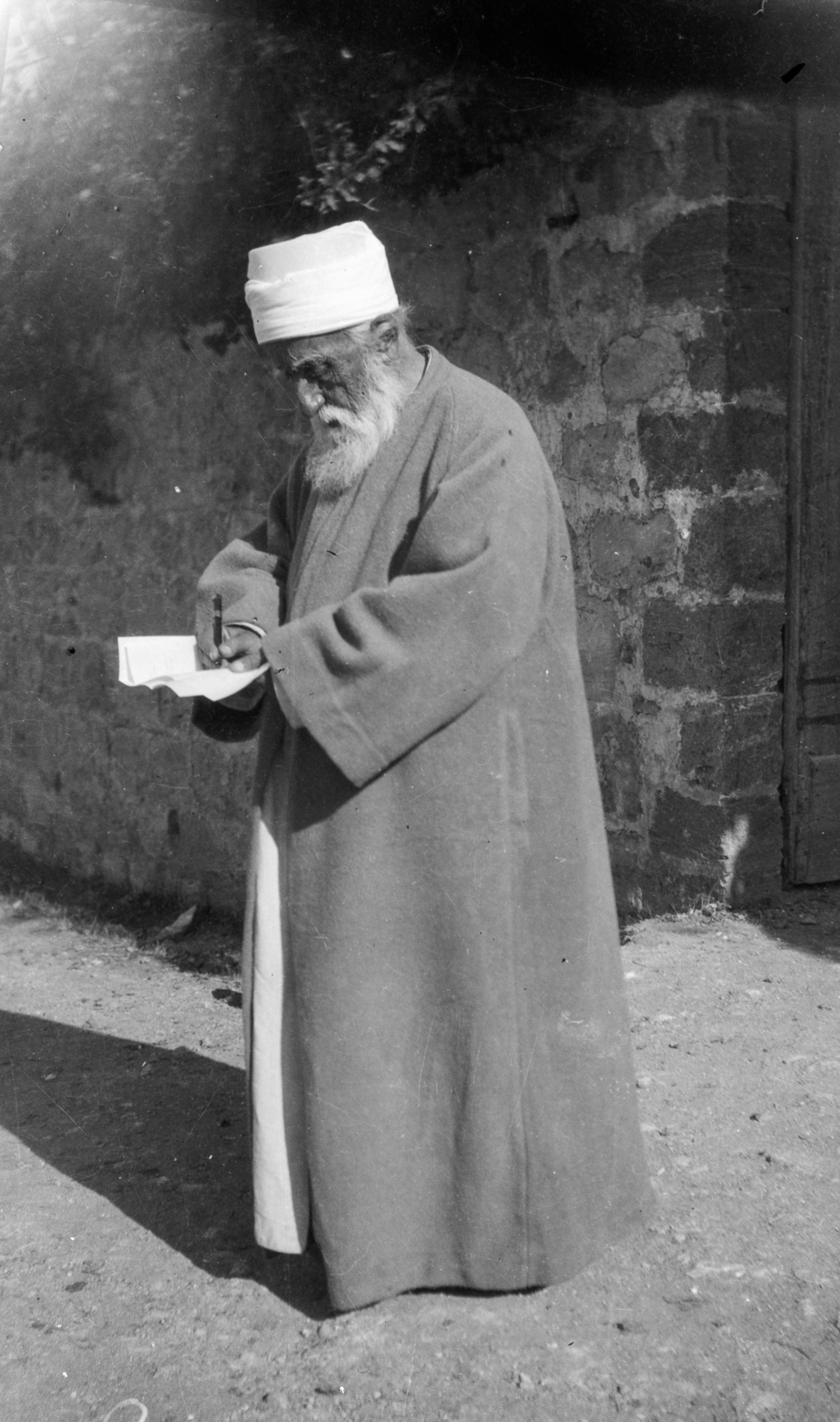
Among ʻAbdu’l-Bahá’s many visitors in early 1914 was Howard Bliss, the president of the Syrian Protestant College (SPC), an institution with which ʻAbdu’l-Bahá had maintained a longstanding relationship and at which a group of Bahá’í students had become an established presence by the time of Bliss’s visit that February.1H.M Balyuzi, ‘Abdu’l-Bahá: The Centre of the Covenant of Bahá’u’lláh (Oxford: George Ronald, 1973), 405. Bliss, an American who had grown up on the campus of the college in Beirut (his father, Daniel Bliss, was the college’s first president) and who spoke fluent Arabic, was visiting, in part, to arrange for the Bahá’í students to spend their upcoming spring break in Haifa in the vicinity of the Shrines of Bahá’u’lláh and the Báb, affording them an opportunity to meet and learn from ʻAbdu’l-Bahá. But the conversation between ʻAbdu’l-Bahá and Bliss extended to topics of pressing concern for the former. Much as He had done on numerous occasions during His travels, ʻAbdu’l-Bahá encouraged Bliss to foster in his students “principles” such as the “oneness of the world of humanity,” among others, so that their education could be directed toward “universal peace.”2Star of the West 9, no. 9 (20 August 1918): 98, http://sotwbnewsinfo.s3-website-us-east-1.amazonaws.com/sotw/searchable_pdfs/SotW_Vol-01%20(Mar%201910)-Vol-10%20(Mar%201919).pdf See also “Zeine on Modern Education,” Al-Kulliyah, Winter 1973, 15, American University of Beirut/Library Archives.
Bliss’s receptivity to ʻAbdu’l-Bahá’s remarks and encouragement was evident in a speech Bliss gave just ten days later. On 25 February, in a meeting with a group of students that was representative of the school’s rich diversity, Bliss urged it to include the “establishing of universal peace” as one of its “missions.”3Al-Kulliyah, March 1914, No. 5, 151, American University of Beirut/Library Archives ʻAbdu’l-Bahá and Bliss’s exchange, indeed, was emblematic of the larger conversation the Bahá’í community and the college had been having for several years, a conversation centering on the college’s self-styled “experiment in religious association” to which the Bahá’í students had been striving to contribute.
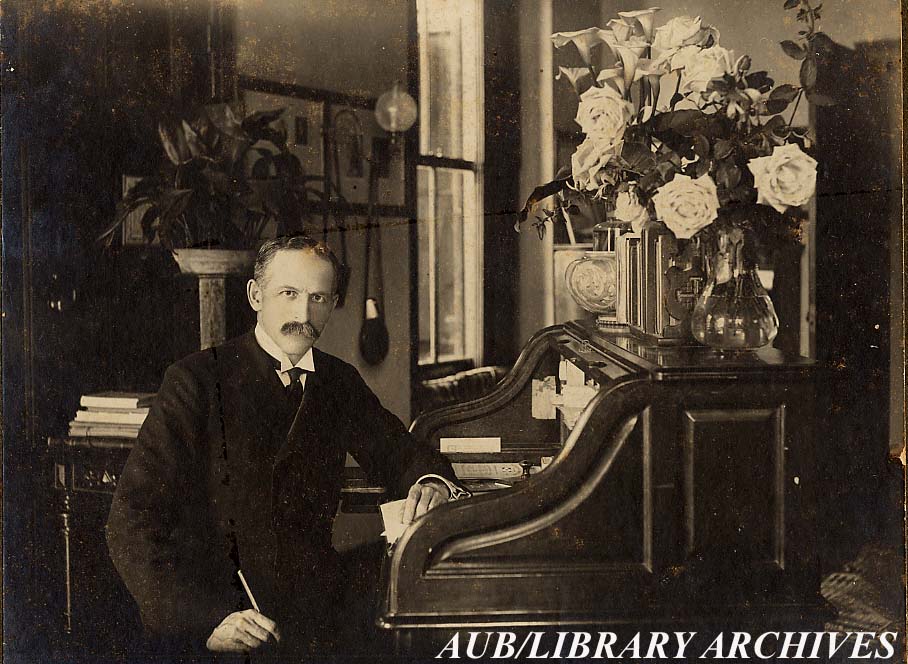
ʻAbdu’l-Bahá and Modern Education
The Syrian Protestant College was founded in 1866 and formally renamed the American University of Beirut (AUB) in 1920. Long before any Bahá’í students had enrolled there, ʻAbdu’l-Bahá in an 1875 treatise known today as The Secret of Divine Civilization4Available at www.bahai.org/r/093729958 encouraged the establishing of modern schools in His native Persia, advocating for the “extension of education, the development of useful arts and sciences, the promotion of industry and technology.” 5‘Abdu’l-Bahá. The Secret of Divine Civilization. Available at www.bahai.org/r/568414401 Education, ‘Abdu’l-Bahá asserted, should uplift individuals for the ultimate purpose of benefiting society. Over the following decades, ʻAbdu’l-Bahá was instrumental in the establishment of dozens of schools throughout His native land; notably, these schools, including many for girls, welcomed students of all faiths.6See Soli Shahvar, The Forgotten Schools: The Baha’is and Modern Education in Iran, 1899-1934 (London: Taurus Academic Studies, 2009).
‘Abdu’l-Bahá personally supervised such initiatives in His local community in ‘Akká as well. In 1903, for example, about twenty children from the Bahá’í community were assembled for classes in English, Persian, math, and other subjects including practical instruction in trades like carpentry, shoemaking, and tailoring.7Youness Afroukhteh, Memories of Nine Years in ‘Akká, Trans. by Riaz Masrour (Oxford: George Ronald, 2003), 159-60. Many of these students continued their studies at local schools, such as a French one in Haifa.8Riaz Khadem, Shoghi Effendi in Oxford and Earlier (Oxford: George Ronald, 1999), 2. ʻAbdu’l-Bahá encouraged students such as these, including His own grandchildren, to continue their education at colleges and universities, the closest of which was SPC; Shoghi Effendi, His eldest grandson and successor as Head of the Bahá’í Faith, graduated from SPC in 1917.
ʻAbdu’l-Bahá repeatedly qualified his support of such schools with the condition that they attend to the whole student and produce graduates who had progressed not only scientifically but also morally. During his visit to North America in 1912, ‘Abdu’l-Bahá spoke at Columbia and Stanford universities, praising the value of the scientific education they provided while also emphasizing the necessity of “spiritual development…the most important principle [of which] is the oneness of the world of humanity, the unity of mankind, the bond conjoining East and West, the tie of love which blends human hearts.”9‘Abdu’l-Bahá. The Promulgation of Universal Peace: Talks Delivered by ‘Abdu’l-Bahá during His Visit to the United States and Canada in 1912. Available at www.bahai.org/r/650712298
By this time, Bahá’í students from Haifa and ‘Akká, as well as Persia, Egypt, and Beirut, had attended SPC for about a decade, in increasing numbers over the previous few years. There were no comparable institutions in their own countries, and attending universities in Europe or America was not yet practical for most. As SPC became a popular choice, the prospect of joining an existing group of Bahá’í students was an additional attraction. A sizable group of students as well attended the Université Saint-Joseph (USJ), also in Beirut. Together, they constituted a single coherent group, meeting together, visiting each other, and collaborating, for example, in the activities of the “Society of the Bahá’í Students of Beirut,” which was formed in 1906.10Zeine N. Zeine, “The Program of the Society of Bahá’í Students of Beirut 1929-1930” (unpublished report, n.d.) ‘Abdu’l-Bahá Himself visited SPC during at least one of his visits to Beirut in 1880 and 1887.11Necati Alkan, “Midhat Pasha and ‘Abdu’l-Bahá in ‘Akka: the Historical Background of the Tablet of the Land of Bā,” Baha’i Studies Review 13 (2005): 6-7, https://bahai-library.com/pdf/a/alkan_midhat_pasha_abdulbaha.pdf
The Bahá’í students’ engagement with educational institutions like SPC was very much framed in the terms ʻAbdu’l-Bahá had been setting forth for many years, perspectives inspired by the Teachings of His Father, Bahá’u’lláh. One such Teaching was the harmony of science and religion; as noted, ʻAbdu’l-Bahá was calling for education to attend to the building of character as well as the shaping of intellects. This was a matter of intense interest at the college as well. While colleges in America had moved away from direct religious instruction, at SPC, there was still an effort to provide it.12Betty S. Anderson, The American University of Beirut: Arab Nationalism and Liberal Education (Austin: University of Texas Press, 2011), 38. Around the time of ʻAbdu’l-Bahá’s first visit, the faculty and missionaries associated with SPC had become sharply divided over just how to reconcile this religious education with the school’s scientific training. This rift had only deepened over the decades even as the younger Bliss had taken the college in increasingly “secular,” or liberal, directions. By 1908, the college’s course catalogue framed its approach in decidedly liberal terms, asserting that the “primary aim” of the curriculum is to “to develop the reasoning faculties of the mind, to lay the foundations of a thorough intellectual training, to free the mind for independent thought.”13Anderson, American University of Beirut, 52. ʻAbdu’l-Bahá was supportive of the college’s efforts in this regard. As He Himself recorded in conversation with other visitors a week after Bliss’s visit:
The American College at Beirut is carrying on a sacred mission of education and enlightenment and every lover of higher culture and civilization must wish it a great success…Years ago I went to Beirut, and visited the College in its infancy. From that time on I have praised the liberalism of this institution whenever I found an opportunity.14Earl Redman. Visiting ‘Abdu’l-Bahá, Vol. 2: The Final Years, 1913-1921 (Oxford: George Ronald, 2021), 24-5.
Yet Bliss and others were intent on maintaining the Christian identity of the college. Heavily influenced by the Social Gospel and Progressive movements, Bliss’s conception of religious education “melded religion, character, and social service”15Anderson, American University of Beirut, 67. and, in his words, sought to “set so high, so noble, so broad, so ecumenical a type of Christianity before our students” as to inspire their education and future services to society.16Anderson, American University of Beirut, 64.
Howard Bliss presumably had this project in mind when, on 15 February 1914, he asked ʻAbdu’l-Bahá for His thoughts on “ideal” education.17“Zeine,” Al-Kulliyah, 15. ‘Abdu’l-Bahá’s response set forth “three cardinal principles.” These principles affirm the need for unfettered intellectual inquiry in education; however, they also call for the moral and ethical development of students and their reorientation toward a broadly conceived mission of service to humanity. ʻAbdu’l-Bahá’s comments were as follows:
In this age the college which is dominated by a denominational spirit is an anomaly, and is engaged in a losing fight. It cannot long withstand the victorious forces of liberalism in education. The universities and colleges of the world must hold fast to three cardinal principles.
First: Whole-hearted service to the cause of education, the unfolding of the mysteries of nature, the extension of the boundaries of pure science, the elimination of the causes of ignorance and social evils, a standard universal system of instruction, and the diffusion of the lights of knowledge and reality.
Second: Service to the cause of morality, raising the moral tone of the students, inspiring them with the sublimest ideals of ethical refinement, teaching them altruism, inculcating in their lives the beauty of holiness and the excellency of virtue and animating them with the excellences and perfections of the religion of God.
Third: Service to the oneness of the world of humanity; so that each student may consciously realize that he is a brother to all mankind, irrespective of religion or race. The thoughts of universal peace must be instilled into the minds of all scholars, in order that they may become the armies of peace, the real servants of the body politic – the world. God is the Father of all. Mankind are His children. This globe is one home. Nations are the members of one family. The mothers in their homes, the teachers in the schools, the professors in the college, the presidents in the universities, must teach these ideals to the young from the cradle up to the age of manhood.18Star of the West 9, no. 9 (20 August 1918): 98.
ʻAbdu’l-Bahá’s vision for education, as expressed above, included an implicit repudiation of social Darwinism, a theory which in the decades between His visit to SPC and His 1914 meeting with its college president had become increasingly popular. Ironically, while conservative thinkers initially rejected Darwin’s scientific theory of evolution, they later embraced its implications for society, when they associated a certain conception of progress as connected with “dominant” races and civilizations, that is, white and European ones.19Norbert Scholz, “Foreign Education and Indigenous Reaction in Late Ottoman Lebanon: Students and Teachers at the Syrian Protestant College” (PhD diss., Georgetown University, 1997), 233. The more liberal wing at the college also conflated its approach to Protestant education with “Americanism.”20Anderson, American University of Beirut, 57. As one commentator has put it, the college was sending the message that only “America and Protestantism had the tools for this progressive future.”21Anderson, American University of Beirut, 89.
ʻAbdu’l-Bahá, however, urged Bliss to encourage his students to see themselves as serving the higher interests of humanity, not the particular ones of race or nation. In October of 1912, ʻAbdu’l-Bahá had implored assembled students, faculty, and staff at Stanford University along much the same lines, explaining that “the law of the survival of the fittest” did not apply to humanity.22‘Abdu’l-Bahá. Promulgation. Available at www.bahai.org/r/055943431 Acceding to such a law would be similar to allowing nature to remain uncultivated and unfruitful. Human progress, then, required education in the “ideal virtues of Divinity,” for humanity is inherently “lofty and noble” and “specialized” to “render service in the cause of human uplift and betterment.”23‘Abdu’l-Bahá. Promulgation. Available at www.bahai.org/r/935144964
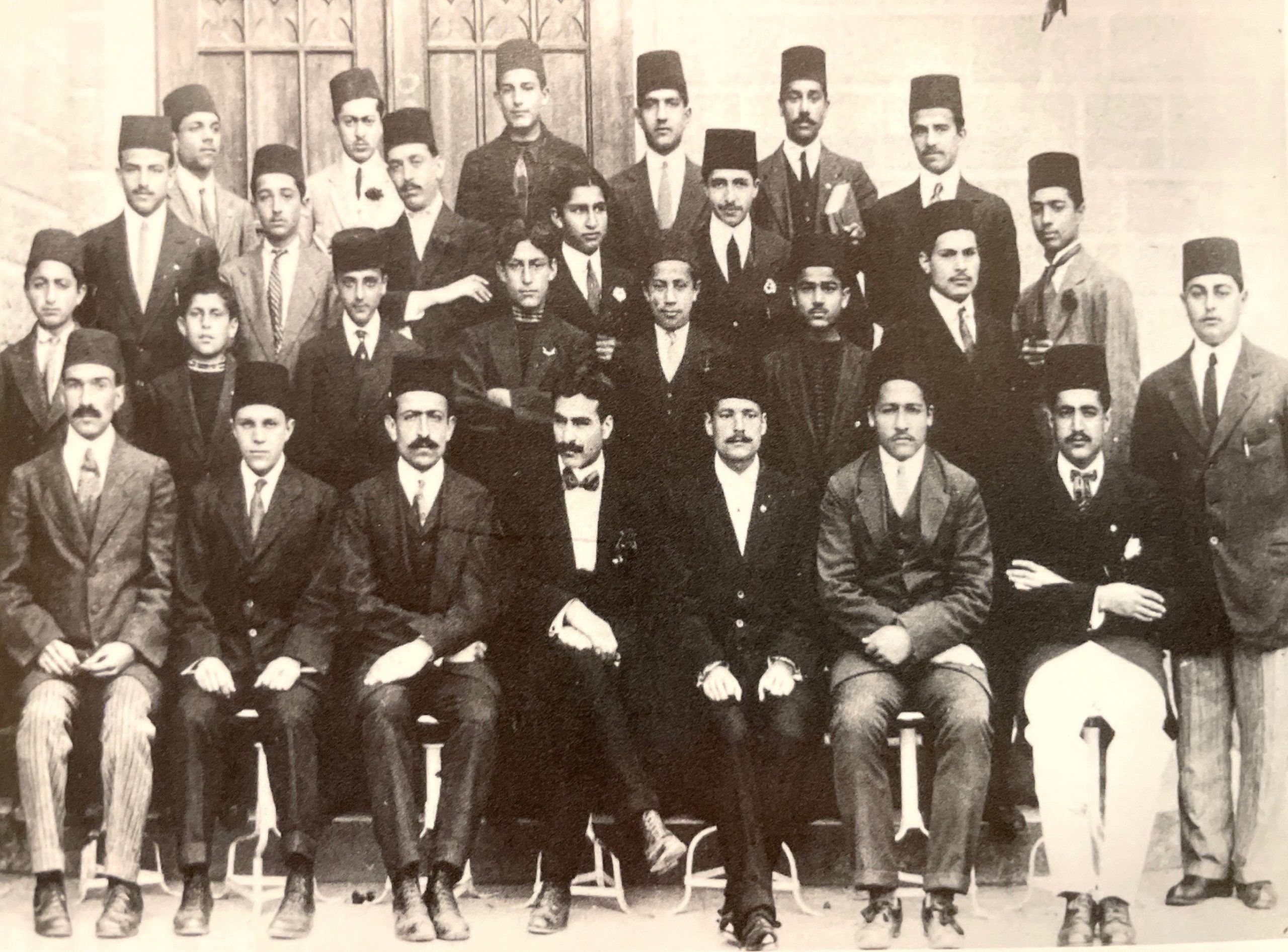
Responding to a Crisis at the College
At the time of Bliss’s visit, a major controversy was raging at the college: the question of mandatory attendance at the school’s religious services. The college’s religious requirements had relaxed over the years and, partly as a result, the school had begun to attract a more diverse student body, not only Christians from various denominations but also more Muslims, Jews, Druze, and Bahá’ís. Spurred on by the Young Turk revolution of 1908 which, among others, advocated for religious freedom and equality, in early 1909, the majority of the Muslim students refused to attend Christian religion services and Bible classes, presenting a petition to the faculty a few days later requesting that such attendance become voluntary.24Stephen B. L Penrose, That They May Have Life: The Story of the American University of Beirut 1866-1941. (Beirut: Imprimerie Catholique, 1970; Princeton: Princeton University Press, 1941) 134-35. In addition to widespread opposition from Jewish students as well, the college also faced opposition from the local Muslim community, the Ottoman authorities, and American diplomats. While making some concessions to the striking students, the college largely withstood the pressure, and the mandate remained until 1915, when an Ottoman law made attendance voluntary. Bliss’s 1914 visit, in fact, was part of a tour of the region in which Bliss engaged with a number of civil and religious leaders in order to defend the college’s approach to religious education.
It was in this particular context that ‘Abdu’l-Bahá’s comments to Bliss about the “cardinal principles” of education were made. While it was clear to many, including ʻAbdu’l-Bahá, that missionary institutions like SPC were in a “losing fight” and the forces of liberalism were in the ascendant, ʻAbdu’l-Bahá was unstinting in His support of religious education of a certain type, an education in “service to the cause of morality” and “animating [students] with the excellences and perfections of the religion of God.” As He had explained a year and a half before at Stanford:
Fifty years ago Bahá’u’lláh declared the necessity of peace among the nations and the reality of reconciliation between the religions of the world. He announced that the fundamental basis of all religion is one, that the essence of religion is human fellowship and that the differences in belief which exist are due to dogmatic interpretation and blind imitations which are at variance with the foundations established by the Prophets of God.25‘Abdu’l-Bahá. Promulgation. Available at www.bahai.org/r/819122974
For ʻAbdu’l-Bahá, religion was one, and it was indispensable to the success of any educational enterprise if it encouraged love and unity. However, as He repeatedly made clear, “if religious belief proves to be the cause of discord and dissension, its absence would be preferable.”26‘Abdu’l-Bahá. Promulgation. Available at www.bahai.org/r/819122974 ‘Abdu’l-Bahá’s vision for religious education, then, was unifying but also demanding; such education had to generate higher levels of unity than that previously attained.
Responding to the well-documented protests of those in the Muslim community, including many reformers, who thought the religious services would have a negative effect on the students, ʻAbdu’l-Bahá remarked, “I am sure the morals of the students will not be corrupted. They will be informed with the contents of the Old and New Testament. What harm is there in this? A church is house of prayer. Let them enter therein and worship God. What wrong is there in this?”27Redman, Visiting, 25. Indeed, He viewed such attendance as a potential benefit to all concerned:
I have no doubt that much good will be accomplished, and many misunderstandings will be removed, if the [Muslims] attend the Churches of the Christians with reverence in their hearts and sincerity in their souls, and likewise the Christians may go [to] Mohammedan Mosques and magnify the Creator of the Universe. Is it not revealed in the Holy Scriptures that ‘My House shall be called of all nations the House of Prayer? All the houses of different names, — Church, Mosque, Synagogue, Pagoda, Temple are no other than the House of Prayers. What is there in a name? Man must attach his heart to God and not to a building. He must love to hear the name of God, no matter from what lips…28Redman, Visiting, 25.
To be clear, His support was not out of sympathy with the college’s longstanding mission, however liberally construed, to convert students to Protestantism, but out of a conviction of the oneness of God and religion, stressing universality and commonality of worship. ʻAbdu’l-Bahá’s approach bore some commonalities with those of Muslim reformist thinkers and other liberals but differed in key respects. The well-known reformer Muhammad ‘Abduh, whom ‘Abdu’l-Bahá met with during His 1887 visit to Beirut, embraced the adoption of modern science for the benefit of Islamic societies; however, he advocated for the development of Muslim schools and criticized the effect on students of attending foreign ones, for it estranged them from their own culture and religion.29Scholz, “Foreign Education,” 95. The modernizer Rashid Rida also pointed to the “corrupting” force of such schools, though conceding that those who had had adequate religious instruction could attend them without any danger of losing faith. Even so, while supportive of the education the college provided, he disapproved of participation in “Christian” services.30Scholz, “Foreign Education,” 99, 187. And though liberal figures (such as Suleyman al-Bustani, Beirut’s parliamentary representative in Istanbul) voiced support for the idea that the younger generation could transcend racial and religious differences and worship together,31Scholz, “Foreign Education,” 188. ‘Abdu’l-Bahá’s comments explicitly and seriously included the idea of Christians themselves going to mosques to worship as well, a possibility that others would have found difficult to imagine. His was a voice for a kind of radical equality that challenged liberals at the college and reformists in the wider society alike.
During those years, liberals at the college like Bliss had been moving SPC in directions that were increasingly consonant with ‘Abdu’l-Bahá’s bold vision. Giving up on converting students to Protestantism as the college’s primary goal, Bliss identified the fostering of religious harmony as integral to the college’s mission. As he put it, the “equal treatment for men of all religions” produces “an atmosphere of good will and moral sympathy among men of the most divergent religious belief.”32Annual Report by the President to the Boards of Managers and Trustees, 1915-16, 6-7, American University of Beirut/Library Archives. In response to the 1909 crisis, Bliss had reminded his board of trustees:
We must put ourselves in the place of our non-Christian students,– our Moslems, our Tartars, our Jews, our Druses, our Bahais…We must not dishonor his sense of honor; and we must not feel that the work of the College has fulfilled the mission until these men and their fellow religionists who form a great majority of the Empire’s population are touched and molded by the College influence.33Annual Report, 1908-09, 16.
In 1922 Laurens Hickok Seelye, a member of the AUB faculty, published in The Journal of Religion an article entitled “An Experiment in Religious Association” in which he presented the college’s (now university’s) religious policy as a “radical step” for a “Christian institution.”34Laurens H. Seelye, “An Experiment in Religious Association,” The Journal of Religion 2, no. 3 (May 1922): 303-04. Howard Bliss, he wrote, had redefined the “faith of the missionary,” which was not to “urge upon others conformity, but a gracious invitation…to learn together of the progressing revelation of God.”35Seelye, “Experiment,” 303. Bliss “put into actual missionary achievement the belief of every scientific student of religious experience.”36Seelye, 303. Seelye highlighted as a concrete sign of Bliss’s success the number of Muslims and other non-Christians the college had attracted.37Seelye, 304. In 1920-1921, they, in fact, outnumbered the Christians by 511 to 490, with 382 Muslims, 66 Jews, 41 Druze, and 22 Bahá’ís.38Annual Report, 1920-21, 15.
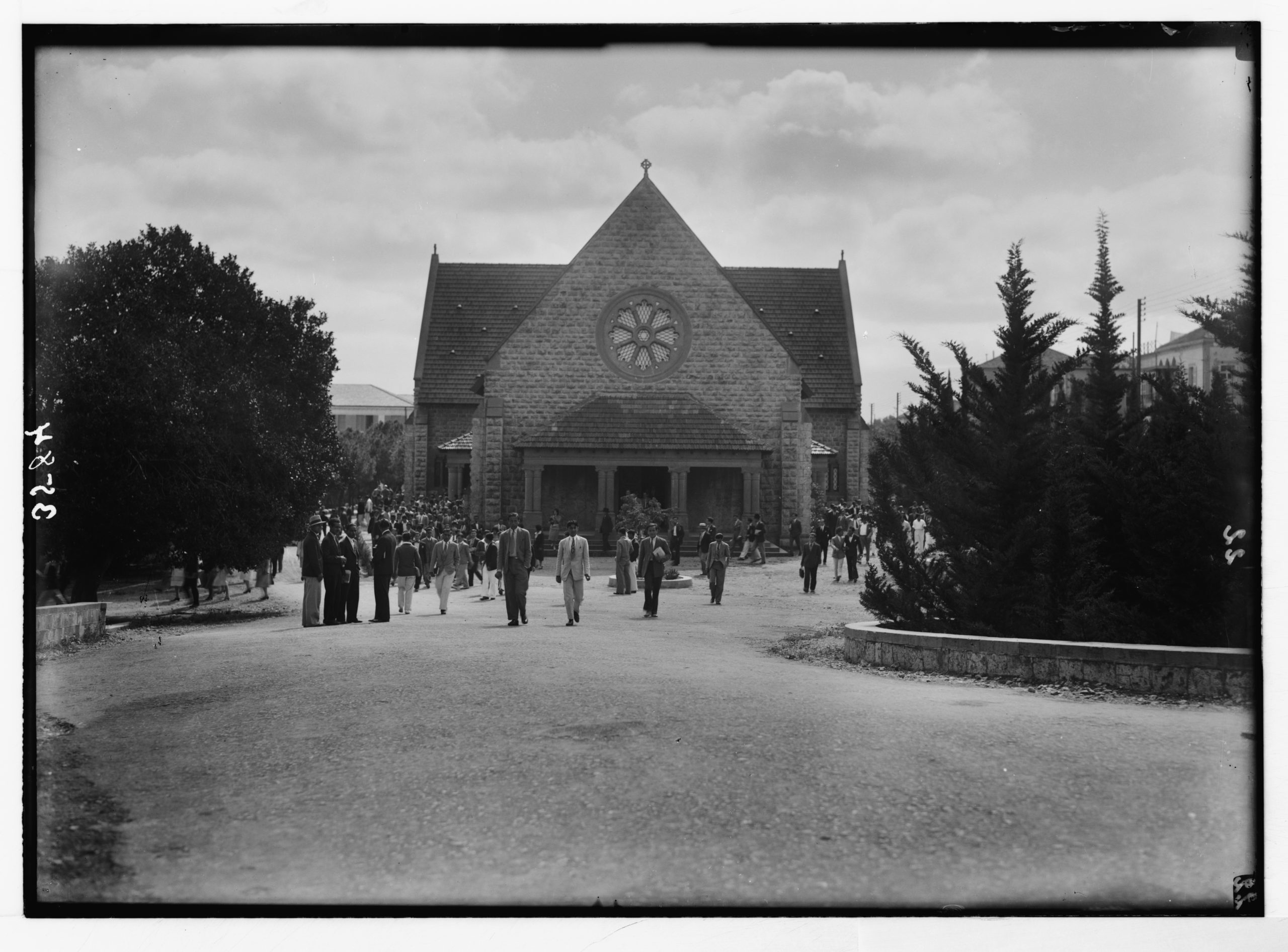

“An Experiment in Religious Association”
In the 1910s, the college’s religious instruction and “influence” increasingly involved interfaith dialogue, in which the Bahá’í students actively participated. The college chapter of the Young Men’s Christian Association, or YMCA, attracted a diverse group of students eager to discuss religious subjects, according to Bayard Dodge, Bliss’s son-in-law and successor as college president. Dodge joined the faculty in 1913 and was also executive secretary of the YMCA chapter. In his 1914 annual report for the YMCA, he wrote:
This winter about fifteen men used to gather every Sunday morning to discuss the five different types of religion which they represented. They took a keen interest, but never were intolerant or even hot-headed, so that they showed what an easy matter it is to talk over differences and reforms, without any fear of unpleasant feeling.39Bayard Dodge, Report of the Beirut YMCA, 1913-14, 8, American University of Beirut/Library Archives.
It is evident that the “five different types of religion” included Bahá’ís, along with Christians, Muslims, Druze, and Jews. The Bahá’í students had already received the college’s unofficial consent to hold their own meetings on campus, though many at the college and in the missionary community opposed the practice. On Sunday afternoons, the members of the Society of the Bahá’í Students of Beirut would “gather under the trees in the university [SPC] or in their private rooms, chanting prayers and talking over matters of religious concern.”40Zeine, “Program.”
Dodge had written: “On Sunday morning I meet a group of Moslems and Bahá’ís, who discuss all sorts of religious questions in a most broadminded way and are intensely interesting.”41Bayard Dodge to Cleveland H. Dodge, December 1913, Box 4, The Bayard Dodge Collection, American University of Beirut/Library Archives. In one of Dodge’s earliest letters from the College, dated 26 November 1913, he singled out the Bahá’ís for their interest in such activities: “they try to take the best out of all religions.”42Bayard Dodge to “Bub,” 26 November 1913, Box 4, The Bayard Dodge Collection, American University of Beirut/Library Archives. While such interfaith activities were encouraged, they were seen to take place under the umbrella of the college’s Christianity. A very small number (12 out of 177) of YMCA members were not Christians, perhaps because as non-Christians, they could join only as associate members. By Dodge’s own admission, many other such students attended “most of the meetings, but feared to have the name ‘Christian’ in any way associated with them.”43Bayard Dodge, Report, 6. Despite the disinclination felt by many students toward being part of a Christian association, however, Dodge did not yet perceive any conflict with the fact that the YMCA was the only formal organization for these kinds of activities. Ottoman pressure ultimately succeeded in forcing the college to disband all student societies, including the YMCA, in May 1916.
During the war, the college’s religious regulations underwent dramatic changes. The subsequent, and in part consequent, upsurge in enrollment of Muslim students to the college who would now be exempt from mandatory religious exercises had caused deep anxiety in Bliss, Dodge, and others. West Hall, constructed in 1914 for student activities, became a refuge for the students from the increasingly harsh wartime conditions outside the college walls. It was also a venue for the college’s experiment in religious association to break new ground. The closing of the YMCA, along with the other student societies, in 1916; the continuation of the informal interfaith discussion groups started before the war during which time “the association in worship became freer than ever”44Seelye, “Experiment,” 305. ; and the much-vaunted sense of solidarity that the war seemed to intensify – all of these had paved the way for the formal creation of a new organization, a “Brotherhood,” envisioned by Bliss in a speech at the building’s opening. In a sermon given on 8 February 1914 titled “God’s Plan for West Hall,” Bliss had identified as the new building’s “supreme purpose the awakening in the men who make use of West Hall of the spirit of service, of ‘the struggle for the life of others’”; instrumental for such a purpose, Bliss proposed, was “a West Hall Brotherhood.”45Al-Kulliyah, March 1914, No. 5, 136.
It was not until 1920, however, that the West Hall Brotherhood properly got on its feet, when Laurens Seelye arrived to become the director of West Hall. Two years later, in his aforementioned article “An Experiment in Religious Association,” he explained the emergence of the West Hall Brotherhood. Deriding the patronizing policy of associate membership for non-Christians in the YMCA, Seelye discussed the delicate balance he and others tried to achieve in making the Brotherhood “non-Christian” even while the University remained a “Christian missionary institution.”46Seelye, “Experiment,” 305-06. Important to membership in the Brotherhood was the belief that, as stated in its Preamble, “a thoughtful, sincere man, whether Moslem, Bahai, Jew or Christian can join this Brotherhood without feeling that he has compromised his standing in relation to his own religion.”47Seelye, “Experiment,” 307. A few Bahá’ís would have been among the twelve non-Christian members of the YMCA in 1913-14, as these twelve were “very equally divided amongst men of the different sects.”48Bayard Dodge, Report, 6.Yet, as with the other non-Christians, joining the Brotherhood would have been a far more acceptable alternative for the Bahá’ís. The Brotherhood’s “Pledge” did not name any single religion but only “this united movement for righteousness and human brotherhood.”49Seelye, “Experiment,” 308. In 1921, Dr. Philip Hitti, the renowned Princeton scholar who was then a young faculty member at his alma mater AUB, wrote that the Brotherhood’s “watchword shall be ‘unity through diversity.’”50Al-Kulliyah, Nov. 1921, No. 1, 4.
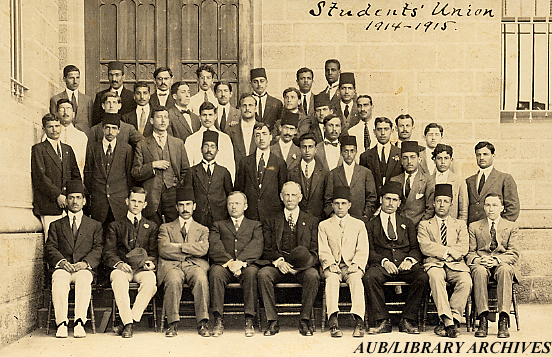
The Bahá’í Students’ Contribution
The Bahá’í students’ participation in such intercommunal spaces was complemented by similar experiences they had gained within their own community, both in Beirut as well as in Haifa and Egypt. Part of the reason for Bliss’s 1914 visit was to arrange for the April visits of the Bahá’í students in Beirut, 27 of whom would make the trip (out of around 30-35 total students)51Redman, Visiting, 23. For a broader overview of the Bahá’í students in Beirut, including detailed statistical information, see Richard Hollinger, “An Iranian Enclave in Beirut: Baha’i Students at the American University of Beirut, 1906-1948,” in Distant Relations: Iran and Lebanon in the Last 500 Years, ed. H.E. Chehabi (Oxford: Centre for Lebanese Studies in association with I.B. Taurus, 2006) 96-119.; 20 students, in two groups, visited ʻAbdu’l-Bahá in Egypt in September 1913.52Ahang Rabbani, ed., The Master in Egypt: A Compilation, Studies in the Babi and Baha’i Religions, Vol. 26 (Los Angeles: Kalimat Press, 2021) 240, 285-86. ʻAbdu’l-Bahá met with these students often during their visits (sometimes twice a day), encouraging them in their studies and asking them if their teachers “took pains to instruct the students.”53Rabbani, Master, 248. He urged them to “strive always to be at the head of [their] classes through hard study and true merit” and to “entertain high ideals and stimulate [their] intellectual and constructive forces.” 54Star of the West 9, no. 9 (20 August 1918): 98. He prioritized the study of agriculture and directly encouraged students to study medicine, in addition to subjects that would lead to careers in commerce and industry. ʻAbdu’l-Bahá also encouraged postgraduate studies, at Stanford, for example.55Rabbani, Master, 305.
Beyond their academic pursuits, however, the Bahá’í students received an education in the kind of united world ʻAbdu’l-Bahá was so interested in cultivating. He urged them to “strive to beautify the moral aspect of [their] lives” through the “divine ideals [of] humility, submissiveness, annihilation of self, perfect evanescence, charity, and loving kindness.” They must, He added, “Love and serve mankind just for the sake of God and not for anything else. The foundation of [their] love toward humanity must be spiritual faith and divine assurance.”56Star of the West 9, no. 9 (20 August 1918): 98. Not only did ʻAbdu’l-Bahá spend time with them and address them on various subjects, but the students also read copies of His talks from His 1912 trip to America.
The effect of these visits on the students was immense. As Badi Bushrui, who was among the students that visited ʻAbdu’l-Bahá in both Egypt and Haifa, later reflected, “Here is an interesting scene: the Hindu, the Zoroastrian, the Jew, the Moslem, and the atheist start singing songs of joy, praising BAHA’O’LLAH that, through His Grace, they were enabled to meet on the common-ground of Unity…”57Redman, Visiting, 24. Bushrui here is identifying people by their source communities, emphasizing the unifying effect of their attraction to the Bahá’í teachings. Indeed, the Bahá’í students were themselves a diverse group; though most were from Persia, they came from Muslim, Jewish, and Zoroastrian backgrounds. In addition, on all their visits, the students interacted with Bahá’ís from Western countries, Americans especially.
The Bahá’í students’ experience visiting ʻAbdu’l-Bahá reinforced their efforts to contribute to the life of the college, and they actively sought out spaces in which they could put into practice their spiritual education. It was through this lens that Bahá’í students participated in religious services at SPC. They were not simply tolerating the Protestant services but viewing them in this far more unifying spirit. They also took advantage of opportunities to participate in the intercommunal spaces that opened up when the services became optional for non-Christians.
But the main venue for the Bahá’í students’ contribution to the college was the Students’ Union, which put on plays and organized a Social Service Institute and a Research Club, besides holding meetings. The most important ones were its weekly Saturday night meetings at which various topics were discussed and debated and the business meetings at which “parliamentary rules [were] observed and practiced.”58Al-Kulliyah, July 1910, No. 6, 229. There were also speaking contest meetings, election meetings, and reception meetings. The twin aims of the Union were “to cultivate and develop public speaking and parliamentary discipline in its members.”59Students’ Union Gazette, 1913, 65, American University of Beirut/Library Archives. Published every two months was the Students’ Union Gazette, the student magazine that had the longest run during this period.60Anderson, American University of Beirut, 22. The Union operated “exclusively” in English61Students’ Union Gazette, 1913, 65., and indeed in his history of AUB, Bayard Dodge refers to the Union as an “English society.”62Bayard Dodge, The American University of Beirut: A Brief History of the University and the Lands Which It Serves (Beirut: Khayat, 1958), 33. ʻAbdu’l-Bahá encouraged the Bahá’í students to perfect their English and to give talks in the language, something they practiced while visiting Him in Egypt and Haifa.63Rabbani, Master, 304.
By 1912 at least, this group was playing an active role in campus life. From the time the Bahá’í students began to form a recognizable group on campus, they became dynamic members of the Union, being elected to the Union’s Cabinet, contributing to the Gazette, participating in and winning prizes in debate contests, and also proposing subjects for debate at the Saturday night meetings. From 1912 until 1916, when all student societies were closed down, Bahá’í students were almost continuously represented in the Students’ Union Cabinet, elections for which were held twice a year. Twice Bahá’í students were elected its president; twice its vice president; at least once its secretary; once its associate secretary; twice the editor of the Students’ Union Gazette; once the president of its Scientific Department; and several times as members-at-large.
Their contributions to the Union – through the topics they suggested for debate, the talks they gave, and the articles they wrote – reveal the focus of their interests: promoting greater unity among the diverse groups of students in the service of universal peace, all the while including a dynamic role for religion. In April 1914, one student proposed that a “universal religion is possible” while another, ‘Abdu’l-Husayn Isfahani, put forth that “Universal Reformation in all the different phases of life can never be effected except through religion”64Students’ Union Gazette, 1914, 60 and Al-Kulliyah, April 1914, No. 6, 192.; Isfahani in a January 1913 speaking contest on “Is reputation an index of true greatness?” had elaborated on this conception of a “universal religion,” basing his argument on the transcendent universality of the founders of major religions – their “creative and inspiring power.”65Students’ Union Gazette, 1913, 35. Jesus Christ, Muhammad, and Buddha, he argued, through their “brilliant commanding genius” accomplished what they did in the face of societal opposition. Thus, their reputations do indicate true greatness. Isfahani also proposed that month that “racial differences do not exist.”66Al-Kulliyah, April 1914, No. 6, 192.
The Bahá’ís continued their involvement with the Students’ Union in the following decades. In 1929, for example, Hasan Balyuzi gave a talk for a speaking contest on the “religion of the future,” which would be characterized by “plasticity, absence of hypocrisy, and spirit of universal brotherhood.”67Al-Kulliyyah, June 1929, No. 8, 238.
At a time when issues of war and peace were very much of the moment, the Bahá’í students sought to promote universal peace. In the years immediately before World War I, Bahá’í students proposed antiwar debate topics, such as “war must inevitably stop,” and wrote articles such as “Towards International Peace.” One such student, Aflatun Mirza, proposed that “a universal language is essential to the progress of the world.”68Al-Kulliyyah, May 1912, No. 7, 227. ʻAbdu’l-Bahá in His talks in America and Europe had supported the establishing of a secondary, auxiliary language to facilitate greater unity and lead to peace.69Balyuzi, ‘Abdu’l-Bahá, 330. In the 1920s, in fact, many Bahá’ís became active members of the worldwide Esperanto movement. One Bahá’í student, Zeine N. Zeine, was an enthusiastic promoter of the language on campus, giving talks on it, including, on at least one occasion, a short one in Esperanto itself.70Al-Kulliyyah, February 1929, No. 1, 99.
However, even more revealing of the way the Bahá’í students understood their contribution to this discourse was a speech given by Zeine in 1929, a talk that won a prestigious speaking contest. In “Mental Disarmament,” he claimed that such disarmament was more “necessary to peace and happiness of the world than the disarmament of the sword.” Attitudes, he continued, such as “intolerance, ignorance, hatred, prejudice” and so on “play more havoc than the cannon, and bring about strife and war.”71Al-Kulliyyah, April 1929, No. 6, 153. (Appropriately, Zeine, upon his graduation that year, was hired as assistant director of West Hall and an instructor of Sociology.) In a similar vein, the president of the Students’ Union, not a Bahá’í, at the Brotherhood’s year-opening reception in October 1926, remarked, “the Druze, the Moslem, the Jew, the Bahai, the Christian all unite together to oppose others of the same religion for the welfare of the Union.”72Students’ Union Gazette, 1926, 7-8. Back in June 1914, Badi Bushrui, who was the outgoing president of the Union, offered a succinct summary of the way Bahá’ís sought to contribute not only in their words but also in their deeds:
Let the Union, as often suggested by President Bliss, stand for universal peace and the oneness of the world of humanity. I am glad that the spirit which the college tries to infuse into her students is finding expression in the life of the Union. Racial and religious differences play no part there. The President for the first term this year was a Christian, the last President was a Bahai and the new President is a Moslem. I believe this is the biggest stride the Union has taken to be able to choose the best man without regard to religious or racial affinity.73Al-Kulliyyah, June 1914, No. 8, 26.
Furthermore, ʻAbdu’l-Bahá’s guidance addressed the practical outcomes of their education. In Egypt in 1913, for example, ʻAbdu’l-Bahá told the students that it was “his hope that they would make extraordinary progress along spiritual lines as well as in science and art; so that each one might become a brilliant lamp in the world of modern civilization, and upon their return to Persia that country might profit from their acquired knowledge and experience.”74Rabbani, Master, 241. Out of 24 Master’s theses written before 1918, five were written by Bahá’í students.75Hollinger, Distant Relations, 111. Two theses, both written in 1918, exemplify this focus on serving the best interests of their nation. “Social Evils or Hindrances to Persia’s Progress” and “Persia in Transformation,” both written by Bahá’í students, identified elements of Persia’s religious, social, and political life needing attention and articulated a progressive vision for the country, assigning prominent places to education and the rights of women.76Azizullah Khan S. Bahadur, “Social Evils or Hindrances to Persia’s Progress” (MA thesis, American University of Beirut, 1917); Abdul-Husayn Bakir, “Persia in Transformation” (MA thesis, American University of Beirut, 1918).
In a letter to his father dated 22 June 1914, Dodge commented on this mission of the Bahá’í students. “Most of these students travel to the College from three to four weeks away,” he related, and “speak in a most serious way of getting an education here and then returning to help their unfortunate land.”77Bayard Dodge to Cleveland H. Dodge, 22 June 1914, Box 4, The Bayard Dodge Collection, American University of Beirut/Library Archives. Dodge’s initial encounters with the Bahá’í students in 1913 led him to state that “they uphold all sorts of good reform movements.”78Bayard Dodge to “Bub,” 26 November 1913, Box 4, The Bayard Dodge Collection, American University of Beirut/Library Archives.
The Bahá’í students also contributed to the college-wide efforts to render service to the local community, efforts which greatly accelerated during the war, including medical relief activities, among others. Not long after the war broke out, most of the Bahá’ís in Haifa and ‘Akká, including Badi Bushrui and another recent SPC graduate Habiballah Khudabakhsh, later known as Dr. Mu’ayyad, were received as guests in the Druze/Christian village of Abu-Sinan.79Balyuzi, ‘Abdu’l-Bahá, 411. ‘Abdu’l-Bahá’s warm relationship with the village leaders had made this arrangement possible. In an article titled “A New Experience,” published in a fall 1915 number of the Students’ Union Gazette, Bushrui relates how Dr. Mu’ayyad started a medical clinic in the village, performing many operations and treating a variety of conditions over a period of eight months. 80Bayard Dodge, “Education As a Source of Good Will” in The Bahá’í World (Wilmette: Bahá’í Publishing Trust, 1933) 4: 370. Bushrui and an American Bahá’í woman, Lua Getsinger, acted as nurses and assistants; Bushrui also taught some of the children. Such an experience of social service would have resonated deeply with the emerging ethos of the college, to be sure.
The Bahá’í students’ contributions became a recognized fact of life at the college over the coming decades. In an article titled “Education as a Source of Good Will” published in the 1930-32 volume of The Bahá’í World, President Bayard Dodge outlined the university’s mission, confirming AUB’s strong relationship with the Bahá’ís and its view of them as a like-minded group. From Dodge’s perspective, the university’s “interpretation of the gospel of Jesus and the teachings of the prophets” was “similar to that proclaimed by the great Bahá’í leaders,” and so there had “naturally been a bond of sympathy” between the university and the Bahá’ís.81Bayard Dodge, “Education As a Source of Good Will” in The Bahá’í World (Wilmette: Bahá’í Publishing Trust, 1933) 4: 370. As previously noted, the Bahá’ís’ active involvement before and during the war in the interfaith discussion groups made quite a deep impression on Dodge. Writing in 1930, when there were three Bahá’ís on the university staff and twenty-six students, Dodge listed the twenty-eight graduates of the university (there were in fact thirty82Hollinger, Distant Relations, 104. Hollinger also notes that by 1929, about 60 to 70 Bahá’í students in total had studied at SPC/AUB; by 1940, around 300 Bahá’í students had been educated in Beirut, overall. It was in the mid to late 1910s that the Bahá’í students were most statistically significant, however, with as many as 44 students at the college in 1919.) up to that point, adding that they had “become a great credit to their Alma Mater.”83Dodge, “Education,” 4: 370. The list included two women trained as nurses and midwives (women were first admitted to the university in 1921). Dodge himself noted that the list did not include the many Bahá’ís who spent time at the university but never graduated. Dodge detailed three distinguishing qualities of the Bahá’í students:
In the first place, they have acquired from their parents an enviable refinement and courtesy. As far as I can tell, all of them have been easy to get along with, good natured with their friends, and polite to their teachers. Their reputation for good manners and breeding is well established.
In the second place, the Bahá’í students have been marked by clean living and honesty. The older men have had a good influence on the younger ones, so that it is a tradition that they avoid bad habits. Every Sunday afternoon they meet together for devotional and social purposes at the house of Adib Husayn Effendi Iqbal. The older students are able to keep in touch with what the younger ones are doing and their influence is worth as much as a whole faculty of teachers.
In the third place, the Bahá’ís intuitively understand internationalism. They mix with all sorts of companions without prejudice and help to develop a spirit of fraternity on the campus… 84Dodge, “Education,” 4: 371.
‘Abdu’l-Bahá’s qualified encouragement of modern education bore fruit in the activities of these Bahá’í students. While taking advantage of their academic opportunities, they were also guided by moral principles, perceiving no conflict between their scientific and religious education. While highly cohesive and united as a group, they sought to be a unifying force at the school, promoting the oneness of humanity and universal peace among their classmates “without prejudice.” Becoming an established presence at a time when SPC was liberalizing its approach to religious education, the Bahá’í students found the college a receptive space in which to express their identities as Bahá’ís, and, inspired by the example and teachings of ‘Abdu’l-Bahá, it is clear that they made an important contribution to the life of the college. Their example shows, moreover, that when a group like the Bahá’í students is empowered in such a setting, significant results can accrue for the whole.

In the late summer of 1911 in the United States, Albert Smiley found a letter sent from Egypt among the items in his mail. Dated August 9, it was from ‘Abdu’l-Bahá, head of a religion which Smiley had only briefly encountered the year before.1Two Bahá’ís had attended the 1911 Lake Mohonk Conference and another Bahá’í met Albert Smiley at a different conference in 1911, which may in part explain how ‘Abdu’l-Bahá was aware of the annual Lake Mohonk Conferences. Egea, Amin, The Apostle of Peace: A Survey of References to ‘Abdu’l-Bahá in the Western Press 1871-1921, Volume One: 1871 – 1912, p. 635, note 12. The letter addressed Smiley as the founder and host of the Lake Mohonk Conferences on International Arbitration and praised those gatherings and their goal of establishing arbitration as the means to settle disputes between nations. ‘Abdu’l-Bahá stated emphatically, “What cause is greater than this!” Explaining how His Father, Bahá’u’lláh, had advocated the unity of the nations and religions, He asserted that the basis of this unity was the oneness of humanity.2“Tablets from Abdul-Baha,” Star of the West, Vol. II, No. 15, December 12, 1911, pp. 3-4. To ensure that His message to the sponsors was received and considered, a second letter was sent on August 22 to the Conference secretary, Mr. C. C. Philips. It began, “The Conference on International Arbitration and Peace is the greatest results [sic] of this great age.”3“Tablets from Abdul-Baha,” Star of the West, Vol. II, No. 15, December 12, 1911, p. 4. In response, the organizers invited ‘Abdu’l-Bahá to take part in the 1912 Conference and to address one of its sessions.4Egea, Amin, The Apostle of Peace: A Survey of References to ‘Abdu’l-Bahá in the Western Press 1871-1921, Volume One: 1871 – 1912, p. 302
Even though other groups in the United States and Europe were holding meetings to promote peace, ‘Abdu’l-Bahá singled out the Lake Mohonk Conferences; for this reason, these exceptional gatherings are worthy of close examination. At them, Albert Smiley and his identical twin brother, Alfred, created an atmosphere that not only illuminated the issue under discussion but resulted in practical action.
The devoutly religious, idealistic Smiley brothers were lifelong members of the Society of Friends, the Christian Protestant denomination better known as Quakers. In their youth, they worked as educators. Then, in 1869, they pursued a different direction by purchasing a dilapidated hunting lodge on the shore of Lake Mohonk in the Catskill Mountains, half a day’s travel by train from New York City, and they successfully developed it into a fashionable resort.
Albert gained a reputation for civic-mindedness and, out of a desire to ameliorate the ills of society, developed a keen interest in social movements. Consequently, Rutherford Hayes, then President of the United States, appointed him to the federal Board of Indian Commissioners. In the course of this service, Smiley recognized an urgent need to create a space where issues regarding America’s indigenous peoples could be explored, and solutions proposed and acted upon. To that end, in 1883, he invited his fellow commissioners and others working on behalf of indigenous populations to his resort for a conference, which proved useful enough to be held annually until 1916. The consultation which occurred during those sessions influenced the course of government policy. Pleased with the success of the Smiley efforts, President Hayes suggested that the brothers establish a similar conference focused on addressing injustices faced by Americans of African descent. The Smileys organized and hosted the first national conference on the situation of Black Americans in 1890, but the extraordinary challenge posed by the issue forced them, with great reluctance, to abandon the conference after just two years.5Larry E. Burgess, The Smileys: A Commemorative Edition, Moore Historical Foundation, Redlands, California, 1991, pp. 30-45.
Unlike many of their fellow Quakers, the Smileys were not strict pacifists; however, their religious upbringing had instilled in them an unshakeable reverence for life.6Larry E. Burgess, The Smileys: A Commemorative Edition, Moore Historical Foundation, Redlands, California, 1991, , p. 5. They were wholeheartedly committed to the cause of peace. Drawing upon what they had learned from experience, in 1895 they established the Conferences on Arbitration at Lake Mohonk. During that first gathering, a standing international court of arbitration was proposed and discussed at length. Among the participants was the man who would serve as head of the US delegation to the conference at the Hague a few years later when the Permanent Court of International Arbitration was established. The exploration of the ins and outs of such a court at Lake Mohonk informed the thinking of many of the participants, especially the American delegation.7Larry E. Burgess, The Smileys: A Commemorative Edition, Moore Historical Foundation, Redlands, California, 1991, pp. 62-63. This would be the first tangible fruit of the arbitration conferences.
Managing two annual conferences, Albert Smiley developed a set of working principles. First, the topic had to be one that could lead to action. One reason the conferences on indigenous populations were influential was that all policy regarding the indigenous peoples in the United States was set by one national government agency, so a handful of officials could implement the recommendations that were made. In contrast, most of the laws and policies that affected the situation of African Americans were set and executed by countless state and local level governments.8Larry E. Burgess, The Smileys: A Commemorative Edition, Moore Historical Foundation, Redlands, California, 1991, p. 40. The issue of international arbitration, while global in scope, shared more in common with the first example because a small number of highly placed politicians, officials, and diplomats determined policy. This meant that the number of people requiring educating and persuading was manageable.
Smiley’s second underlying principle was that religion had a major role to play in resolving social problems, including the promotion of world peace. Religious leaders were invited to take part in all the conferences. The meetings themselves had a religious overtone and the participants were expected to adhere to the Quaker moral code, which included an unwritten prohibition against drinking alcoholic beverages and playing cards.9Davis, Calvin C., “Albert Keith Smiley”, Harold Josephson, editor, Biographical Dictionary of Modern Peace Leaders, Greenwood Press, Westport, Connecticut, 1985, p. 889.
The Smileys also learned how to conduct consultation effectively. A variety of points of view were welcome and fostered, and Albert chose chairmen who would not use their role to promote their own viewpoints or agendas and would be even-handed. The Smileys ensured that no group or position dominated the discussion portions of the sessions. Discussion was to be conducted at the level of principle rather than based upon specific matters, especially those that were controversial, such as the Spanish American War. The Smileys did not allow speakers at the arbitration conference to give talks about the horrors of war, lest the consultation become less about solutions and more about sentiment. The conferences were, however, an opportunity to provide information about legislation, treaties, and other news related to the topic at hand.
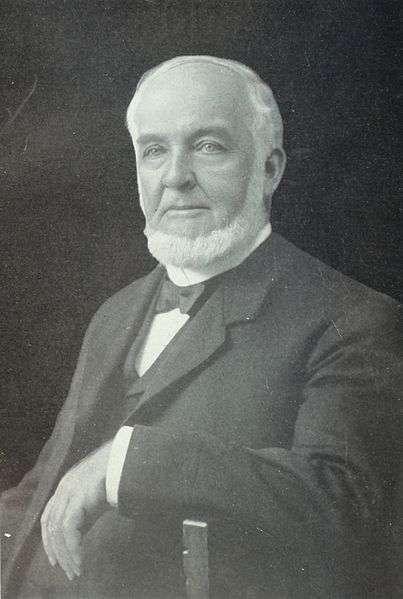
At the outset, idealistic leaders of social movements whose worldviews were not always practical filled the arbitration sessions, so the Smileys began to invite representatives of the business community. Nothing was worse for the average businessman than the economic disruption and uncertainty of a war. Women were always invited and fully participated, which was liberal for the time.
Finally, Albert Smiley recognized that the conference schedule must allow time for informal meetings and the networking that naturally occurs through socializing. The plenary sessions only lasted two hours in the morning and two hours in the evening, with the rest of the day unscheduled except for meals. The expansive property, much of which was woodlands with hiking trails surrounding the lake, provided welcome opportunities both to meditate in nature and to discuss ideas privately.10For a lengthy discussion of how the conferences were conducted, see Burgess, pp. 61-67.
By the time ‘Abdu’l-Bahá wrote to the organizers of the conferences, the gatherings had become influential. The groundwork necessary for the establishment of the Permanent Court of Arbitration at the Hague, for instance, was established there, and the American Society of International Law was also created at the conference, in the 1905 session.11For a brief discussion of the fruits of the Lake Mohonk Arbitration Conferences see Burgess, p. 890.
Establishing the Court of Arbitration was only the beginning, for as that institution undertook its work, other issues arose: How could countries be encouraged or required to bring matters to the Court rather than resort to war? How were the decisions of the Court to be upheld? Treaties became an obvious instrument and topic for discussion. Because the conferences were held annually with many of the same participants, different layers of the matter of arbitration were explored over their 21-year history.
When ‘Abdu’l-Bahá addressed the conference as its opening speaker on the evening session on May 15, 1912, He was introduced by the conference chairman, Nicholas Murray Butler, President of Columbia University, who would be awarded the Nobel Peace Prize in 1931. Among the approximately 200 people in attendance were the future Prime Minister of Canada, W. MacKenzie King, ambassadors, jurists, journalists, academics, religious leaders, businessmen, trade unionists, and leaders of civic organizations, including peace activists. The speakers who followed Abdu’l-Bahá that evening came from Nicaragua, Argentina, Germany, and Canada—a sampling of the many countries represented.12Report of the Eighteenth Annual Lake Mohonk Conference on International Arbitration, Published by the Lake Mohonk Conference on International Arbitration, 1919, pp. 42 – 63.
‘Abdu’l-Bahá was allotted twenty minutes for His talk, most of which was in the form of reading a previously submitted English translation. His address began with a discussion of Bahá’u’lláh’s emphasis on the oneness of humanity and His promise of the coming of the “Most Great Peace.” He explained to the audience that Bahá’u’lláh promulgated His Teachings during the nineteenth century when wars were raging throughout the world among religious sects, ethnic groups, and nations. His Father’s teachings, explained ‘Abdu’l-Bahá, inspired many people to put aside their prejudices and instead love and closely associate with their former enemies. The talk then turned to the importance of investigating reality and forsaking blind imitation; for, as He pointed out, once people see truth clearly, they will behold that the foundation of the world of being is one, not multiple. Following His discussion of the oneness of humankind, He explored the agreement of science and religion. Throughout the speech, ‘Abdu’l-Bahá stressed that religion should bring about a bond uniting the peoples of the world, not be the cause of disunity; that all forms of prejudice must be abolished, including racial, religious, national, and political; and that women should be accorded equal status with men. He then briefly touched upon the problem of the disparities of wealth and poverty. Finally, He stated that philosophy is incapable of bringing about the absolute happiness of mankind: “You cannot make the susceptibilities of all humanity one except through the common channel of the Holy Spirit.”13Report of the Eighteenth Annual Lake Mohonk Conference on International Arbitration, Published by the Lake Mohonk Conference on International Arbitration, 1919, pp. 42 – 44.
The members of His entourage recorded that ‘Abdu’l-Bahá’s talk was well-received and that many people approached Him afterward to thank Him and to speak with Him.14Mahmud’s Diary, p. 101. Note that the chronicler, Mahmud, was confused about the dates. The full translation of His talk was included in the widely distributed report of the conference and much of the press coverage also mentioned it.15The conference published an annual report which was sent to all libraries across the United States with more than a 10,000 book collection (the average size of a small community or branch library). Burgess, p. 65. One of the promoters of the conferences was the wealthy industrialist, Andrew Carnegie, who establishing public libraries across the United States as well as for the Carnegie Endowment for Peace. (There are indications that Carnegie was present when ‘Abdu’l-Bahá spoke at Lake Mohonk, but that is unconfirmed.) For a thorough accounting of the press coverage of ‘Abdu’l-Bahá’s participation in the 1912 conference, see Egea, pp. 306. Press accounts of His arrival in the United States also frequently made mention of His intention to participate in the Lake Mohonk Conference. Ibid, pp. 197, 198, 201, 203, 217, 286, 298, 299.
Earlier that day, ‘Abdu’l-Bahá had taken advantage of the unscheduled afternoon to give at least one informal talk and to speak with a number of the conference participants. He did not stay for the entire event but returned to New York the following morning after spending His last hours at the resort visiting with Albert Smiley.16Mahmud’s Diary, pp. 102 – 103.
The 1912 conference was the last one attended by the far-sighted Albert Smiley. Alfred had already passed away and Albert followed his twin in December of that year. Their brother, Daniel, whose attention to detail in planning the conferences was part of their success,17Larry E. Burgess, The Smileys: A Commemorative Edition, Moore Historical Foundation, Redlands, California, 1991, p. continued to host the conferences until circumstances forced him to discontinue them when the United States entered WWI in 1917. Years later, Dr. Butler, reviewing his own participation in the conferences between 1907 and 1912, reflected, “it is extraordinary how much vision was there made evident.” However, he concluded, “it is more than pathetic that that vision is still waiting for fulfilment.”18Butler, Nicholas Murray, Across the Busy Years: Recollections and Reflections II, Charles Scribner’s Sons, New York, 1940, p. 90.
All the efforts of peace organizations and gatherings such as the Lake Mohonk Conferences culminated in the creation of the League of Nations at the Paris Peace Conference in 1919. However, although President Woodrow Wilson was given credit for conceiving the League, the US Congress refused to ratify the treaty that would make the United States a member. Thus, despite hopeful expectations, the League was born handicapped and, after a few initial achievements, proved to be ineffective at preventing wars. It was, nevertheless, a beginning.
Following the Great War, the United States returned to its default foreign policy position of isolationism; namely, the conviction that the country should stay out of the conflicts afflicting other parts of the world. It was as if all the work done before the war to promote world peace through internationalism had been undone. This situation was exacerbated by the 1919 “Red Scare,” during which anarchists and communists were accused of instigating several violent incidents. Moreover, in the 1920s, deep-seated prejudices took firmer hold of US public policy. Congress passed restrictive immigration legislation in 1924 to keep out Jews and Catholics. It became all but impossible for Africans to legally immigrate, and Chinese immigration was banned by law.
Meanwhile, in 1919, white people attacked and set fire to black neighborhoods in Chicago and, in 1921, attacked and even bombed from the air a prosperous black district in Tulsa, Oklahoma, leaving untold black citizens dead and the lives of the survivors ruined. The white supremacist, anti-Catholic, and anti-Semitic organization, the Ku Klux Klan, experienced a resurgence, demonstrating its strength with a large parade through Washington, D.C. in 1926, its members’ distinctive white-hooded uniforms blending with the backdrop of the gleaming white marble of the U.S. Capitol building.
On the international front, fascism and communism arose quickly from the still-smoldering ashes of Europe. The armistice of 1918 would prove to be only an intermission before war erupted again in the 1930s. In the Far East, Japan’s armies were on the move, beginning with the 1931 invasion of the Manchurian region of China. In country after country, rearmament accelerated. If ever the peoples of the world needed to grasp Bahá’u’lláh’s message that humankind is one, it was during the period between the World Wars.
World peace remained the primary focus of ‘Abdu’l-Bahá’s talks when He visited California a few months after His appearance at the Lake Mohonk Conference. In a talk given at the Hotel Sacramento on 26 October 1912, He said that “the greatest need in the world today is international peace,” and after discussing why California was well-suited to lead the efforts for the promotion of peace, He exhorted attendees: “May the first flag of international peace be upraised in this state.”
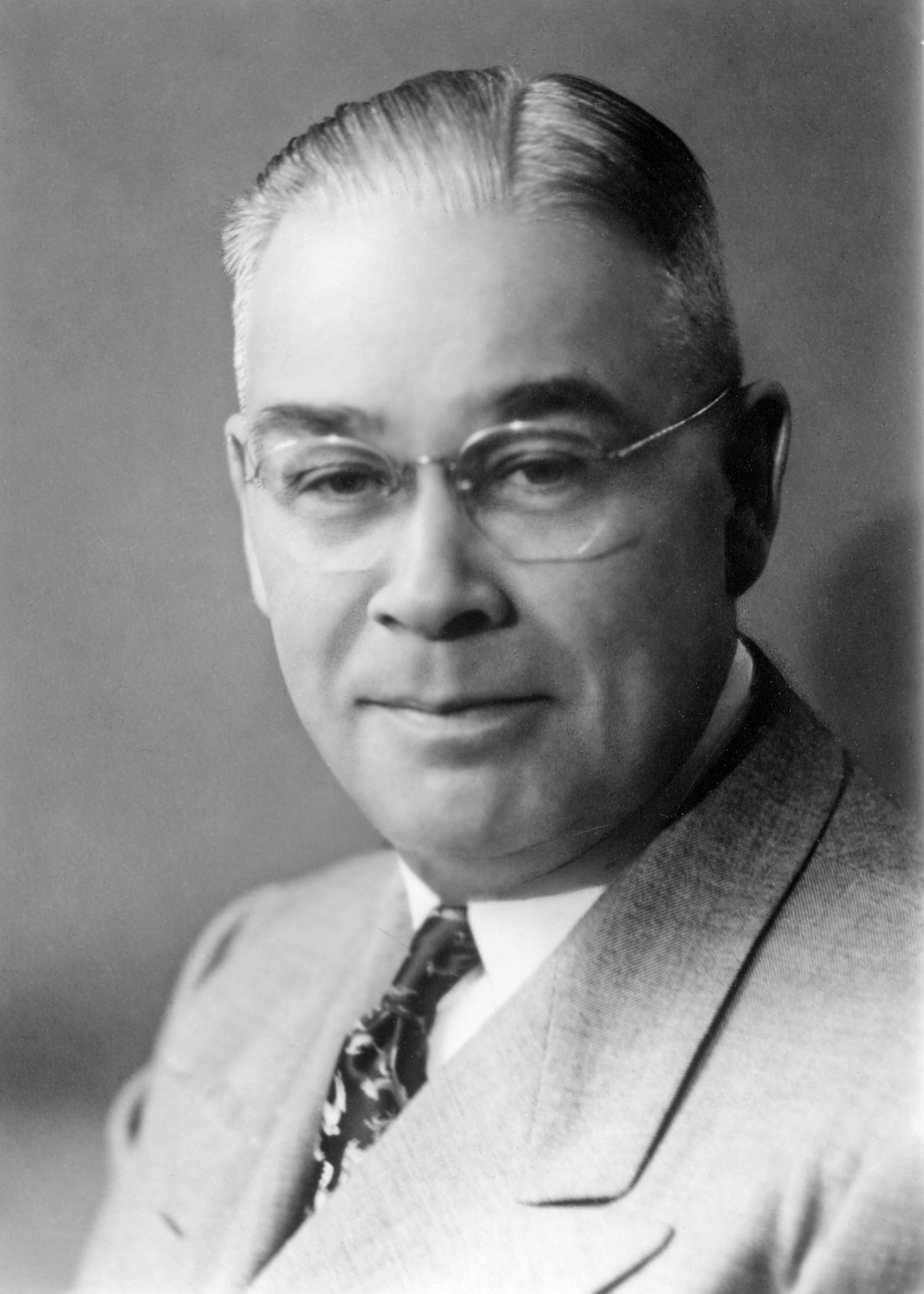
One of those inspired by ‘Abdu’l-Bahá’s vision of California as a leader in the promotion of world peace was Leroy Ioas, a twenty-six-year-old resident of San Francisco and rising railway executive. He remembered how ‘Abdu’l-Bahá had met with many prominent people during His ten months in the United States and, drawing upon His example, some years later Ioas became determined that Bahá’í principles should be widely promulgated among community leaders, especially those in positions to put them into effect or to influence the thinking of the citizenry. In 1922, Ioas wrote to Agnes Parsons in Washington, DC, to solicit her opinion and guidance about the prospect of a unity conference in his city. The previous year, at the express request of ‘Abdu’l-Bahá, she had organized a successful, well-attended Race Amity Conference in her own racially polarized region of the South. Ioas noted in his letter that the challenge on the West Coast was not simply prejudice towards black people, for their numbers were few, but strong animosity towards the more numerous Chinese and Japanese citizens. Parsons responded with encouragement and suggestions. Armed with this guidance, Ioas approached two of the pillars of the Bay Area Bahá’í community—Ella Goodall Cooper and Kathryn Frankland—to gain their support for a conference. With this groundwork laid, he proposed a unity conference to the governing council for the San Francisco Bahá’í community, which decided it was not timely.
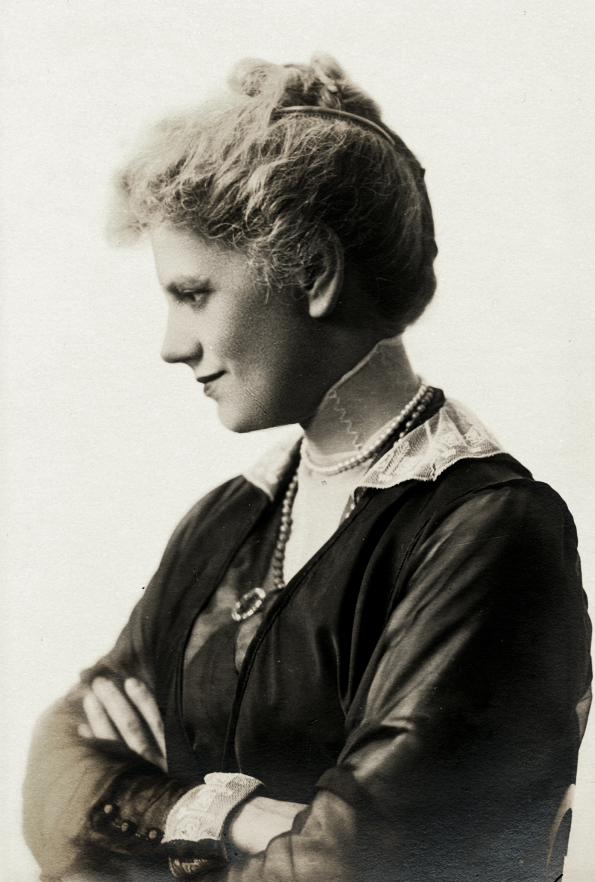
Undeterred, Ioas approached Rabbi Rudolph Coffee, head of the largest synagogue in the Bay Area and the first Jewish person to serve as chaplain of the California State Senate. Coffee shared many of the Bahá’í ideals and became an enthusiastic ally. Ioas again turned to the Bahá’í council, and this time it supported his plan to form a committee that included Cooper and Frankland as members.
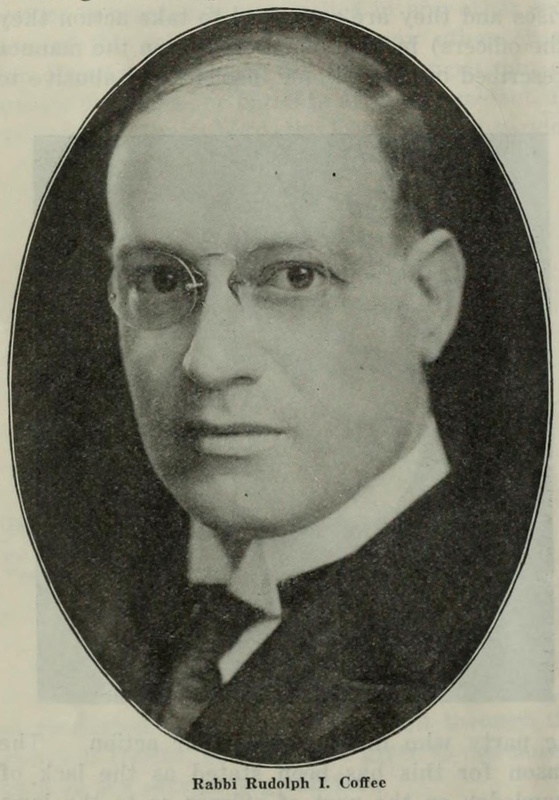
The committee’s first order of business was to draft a statement of purpose. It said that the goals of the conference were “to present the public … the spiritual facts concerning the beauty and harmony of the human family, the great unity in the diversity of human blessings, and the harmonizing of all elements of the body politic as the Pathway to Universal Peace.” The group also decided that the expenses of the three-day conference set for March 1925 would be covered by the Bahá’í community so that participants would not be asked to contribute money—but, despite the Bahá’í underwriting of the event, the program would not have any official denominational sponsorship. The committee booked the prestigious Palace Hotel, the city’s first premier luxury hotel, as the venue for the event.
Cooper, listed on the San Francisco Social Registry,191932 San Francisco Social Registry, https://www.sfgenealogy.org/sf/1932b/sr32maid.htm. The social registry is a directory of socially-connected members of high society. had access to the leading citizens of the area. As experienced event organizers, Cooper and Frankland set to work soliciting leading city residents to serve as “patrons”. The greatest coup was enlisting Dr. David Starr Jordan, founding president of Stanford University, to serve as the honorary chairman of the conference. Jordan had met ‘Abdu’l-Bahá and was known in peace movement circles for having developed his own peace plan. Other note-worthy speakers accepted, and the first World Unity Conference was born. The committee even hired a public relations firm to advertise the event and assist with arrangements.
Over the course of the evenings of March 21, 22, and 23, speakers addressed, before large audiences, the issues of the status of women and of the black, Chinese, and Japanese communities, as well as topics related to world peace. The roster of accomplished presenters included not only Rabbi Coffee and Dr. Jordan but also the senior priest of the Catholic Cathedral, a professor of religion, a Protestant minister of a large African-American congregation, distinguished academics, and a foreign diplomat. The last one to address the conference was the Persian Bahá’í scholar, Mírzá Asadu’llah Fádil Mázandarání, the only Bahá’í on the program.
Measured by attendance and favorable publicity, the conference was an unqualified triumph. But as the last session drew to a close, the inevitable question was put to Ioas by Rabbi Coffee: What next? Hold such a conference annually? The planners did not have an answer. Just like the Smileys, Rabbi Coffee realized that the conference should lead to action. Undertaking one conference had stretched the financial and human resources of the San Francisco Bahá’í community. It had also provided a glimpse of what they could achieve. The ideas presented were, however, scattered to the wind with only the hope that some hearts and minds had been changed.20Chapman, Anita Ioas, Leroy Ioas: Hand of the Cause of God, pp. 45-49.
Ioas provided the National Spiritual Assembly of the Bahá’ís of the United States and Canada—the governing council for the Bahá’í communities of the two countries—with a report, and he suggested that similar World Unity Conferences be held in other communities. The National Assembly enthusiastically agreed and established a three-person committee, including two of its officers, to assist other localities in their efforts to hold conferences. The committee members were Horace Holley, Florence Reed Morton, and Mary Rumsey Movius.21Bahá’í News Letter: The Bulletin of the National Spiritual Assembly of the Bahá’ís of the United States and Canada, no. 12, June-July 1926, pp. 6-7. Human resources and all funds were to come from the sponsoring communities, but the national committee would help to promote the conferences and offer other assistance, including speakers.
During 1926 and into 1927, eighteen communities held World Unity Conferences. These included Worcester, Massachusetts; New York, New York; Montreal, Canada; Cleveland, Ohio; Dayton, Ohio; Hartford, Connecticut; New Haven, Connecticut; Chicago, Illinois; Portsmouth, New Hampshire; and Buffalo, New York. They followed the format of the San Francisco conference with three consecutive nights of programs featuring a diversity of speakers—the majority of whom were not Bahá’ís—on topics that were encompassed within Bahá’í principles. Among the presenters were clergy, academics, politicians, including the first woman to serve in the Canadian Parliament,22This was Agnes Macphail, who spoke at the Montreal Conference which was chaired by William Sutherland Maxwell. Nakhjavani, Violette, The Maxwells of Montreal : Middle Years 1923-1937, Late Years 1937-1952, George Ronald, Oxford, p. 74.22 and writers. Some conferences were held in church buildings, others on university campuses, and a few in hotels.
As in San Francisco, the World Unity Conferences provided valuable experience that enhanced the capacities of the hosting Bahá’í communities. They supplied a means for those fledgling communities to obtain positive local publicity and brought the nascent Faith to the attention of civic leaders as a new and growing force for good. Although the conferences were on the whole successful, as in San Francisco, they stretched to the limit local human and material resources. Shoghi Effendi urged the American community to follow-up with the conference attendees who showed the greatest interest,23Shoghi Effendi, Bahá’í Administration: Selected Messages 1922 – 1932, p. 117. but this guidance was not implemented systematically.
As the series of conferences drew to an end and attention turned to other matters, a growing sense of urgency motivated the three committee members because they took to heart ‘Abdu’l-Bahá’s warning that another war greater than the last one was coming; they hoped that bringing the Bahá’í message to the attention of important people might prevent it.24Horace Holley fled Paris, France with his wife and young child at the beginning of WWI in September 1914 and so keenly understood the significance of ‘Abdu’l-Bahá’s prediction that another war was coming in His second Tablet to the Hague, written after the Great War. Letter from Horace Holley to Albert Vail, October 21, 1925, Vail papers, U.S. Bahá’í National Archives. Mary Movius, in discussing Dr. Randall’s upcoming role as primary spokesman for the World Unity Foundation with him, mentions her concern about where the coming war will start. Letter from Mary Movius to John Randall, June 11, [1927?], U.S. Bahá’í National Archives. They devised a plan to establish a World Unity Foundation that would both sponsor ongoing conferences and provide speakers to other events. In addition, they decided to create a proper organization—a movement—with local councils and a journal titled World Unity. The National Spiritual Assembly approved of the proposal but decided that it should be an individual initiative rather than an official activity of the Faith. The Assembly also encouraged the Bahá’í community to be supportive of the Foundation.25Bahá’í News Letter: The Bulletin of the National Spiritual Assembly of the Bahá’ís of the United States and Canada, no. 20, November 1927, p. 5.
Each of the three members26Montfort Mills, a lawyer from New York City and former chairman of the National Spiritual Assembly was also part of this consultation, but at the time he was engaged in frequent travels abroad on behalf of the work of the Faith. As much as possible, Mills served as an advisor to and promoter of the World Unity Foundation. made important contributions to the new endeavor.
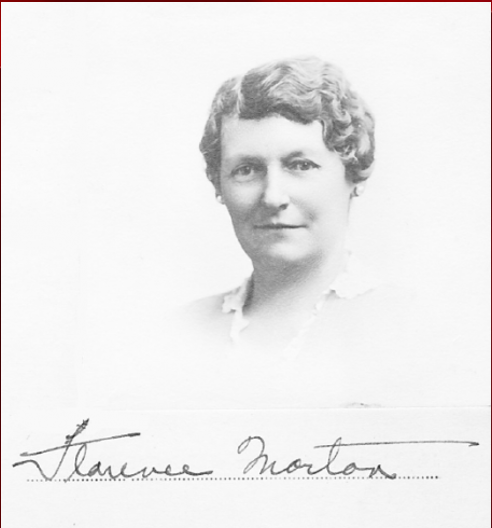
Morton, a prosperous businesswoman who owned a factory, provided most of the funding and served as treasurer. Holley, with a professional background in writing, publishing, and advertising, assumed the management of the journal. Movius, a writer and another source of funds, became president of the board of directors. They hired Dr. John Herman Randall, an ordained Baptist minister and associate pastor of a non-denominational, liberal church—The Community Church in New York City—to be the Foundation’s public face as director and editor.27Randall was one of the two Christian clergymen from New York City who played active roles in the Bahá’í community during the 1920s and 1930s. Shoghi Effendi said, “I am delighted to learn of the evidences of growing interest, of sympathetic understanding, and brotherly cooperation on the part of two capable and steadfast servants of the One True God, Dr. [John] H. Randall and Dr. [William Norman] Guthrie, whose participation in our work I hope and pray will widen the scope of our activities, enrich our opportunities, and lend a fresh impetus to our endeavors.” Bahá’í Administration, p. 82. For a brief summary of Randall’s life see, Day, Anne L., “Randall, John Herman”, Kuehl, Warren F., editor, Biographical Dictionary of Internationalists, Greenwood Press, Westport, Connecticut, 1983, pp. 595 – 97. See also, “John Herman Randall Sr.: Pioneer liberal, philosopher, pacifist” by one of his grandsons [David Randall?] at http://freepages.rootsweb.com/~knower/genealogy/johnhermansrcareer.htm. Randall was a gifted, widely sought-after orator and author who was keenly interested in and sympathetic towards the Bahá’í Faith, even though he was not a professed adherent. Randall had spoken at several of the World Unity Conferences and shared the ideals underlying them. The four individuals then established a non-profit corporation, the World Unity Foundation, with Randall as director and journal editor.28The Board of Trustees of the World Unity Foundation included the following Bahá’ís: Horace H. Holley, Montfort Mills, Florence Reed Morton, and Mary Rumsey Movius. The other members were: Reverend John Herman Randall (non-denominational Protestant), Reverend Alfred W. Martin (Unitarian), and Melbert B. Cary (friend of Dr. Randall). The Honorary Committee for the Foundation were: S. Parkes Cadman, Carrie Chapman Catt, Rudolph I. Coffee, John Dewey, Harry Emerson Fosdick, Herbert Adams Gibbons, Mordecai W. Johnson, James Weldon Johnson, Rufus M. Jones, David Starr Jordan, Harry Levi, Louis L. Mann, Pierrepont B. Noyes, Harry Allen Overstreet, William R. Shepherd, Augustus O. Thomas. Bahá’í News Letter: The Bulletin of the National Spiritual Assembly of the Bahá’ís of the United States and Canada, no.22, March 1928, p. 8.
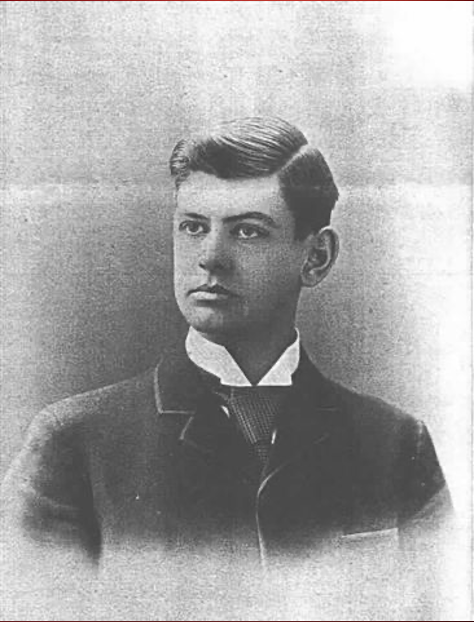
The original plan was that Dr. Randall, working full time for the Foundation, would ensure that World Unity Conferences were held all over the country. The talks from those events would provide the content for the journal, and conference participants would be encouraged to form local councils to carry forward the work of spreading the cause of peace. None of this went as planned, despite a few early successes. Speakers rarely followed through with written versions of their talks. Local committees often dissolved within a year. Limited resources made it impossible to give attention to the innumerable details required to attract and retain a growing membership.29Letter dated July 7, 1932 from Horace Holley to Florence Morton, U.S. Bahá’í Archives.
Despite setbacks associated with the conferences, in October 1927, the first issue of World Unity was published, providing an expansive view of the world and current international affairs. It covered not only important peace subjects such as the League of Nations and the Paris (Kellogg-Briand) Pact of 1928—the first attempt to make war illegal—but also articles introducing to the Western reader various countries, religions, arts, and other topics that would engender a sense of world citizenship. The contributors by and large were not Bahá’ís, though the three Bahá’í directors tried to ensure the publication reflected Bahá’í ideals. A number of those featured in its pages had been regular participants at the Lake Mohonk Arbitration Conferences, including leading peace activists Hamilton Holt, Edwin D. Mead and Lucia Ames Mead, and Theodore Marburg. A small number had spoken at World Unity Conferences, among them Dr. Jordan and Rabbi Coffee. Though the majority of articles were written specifically for the magazine, some were taken from speeches or other publications. Over seven years, the magazine published articles by notables such as Nobel Peace Prize recipient Norman Angell; eminent sociologist and advisor to President Wilson, Herbert Adolphus Miller; scholar of international law Philip Quincy Wright; the foremost scholar on auxiliary languages, Albert Léon Guérard, who heard ‘Abdu’l-Bahá speak in California; the first president of the Republic of Korea, Syngman Rhee; the well-known writer and philosopher Bertrand Russell; eminent U.S. foreign policy historian and official historian of the San Francisco Conference to establish the United Nations, Dexter Perkins; Charles Evans Hughes, chief justice of the US Supreme Court; philosopher and influential social reformer John Dewey; socialist, pacifist, and US presidential candidate Norman Thomas; Philip C. Nash, executive director of the League of Nations Association; and Robert W. Bagnell, a leader of the National Association for the Advancement of Colored People (NAACP), the preeminent American civil rights organization. The journal occasionally carried talks by or about the teachings propagated by ‘Abdu’l-Bahá. Famed architect Frank Lloyd Wright designed one version of the masthead and also penned an article.30Frank Lloyd Wright was a friend of Horace Holley, who convinced Wright to submit an article. Wright then suggested that he redesign the magazine’s cover. His design, with some modifications, was first used for the October 1929 edition of World Unity. Website: The Wright Library, http://www.steinerag.com/flw/Periodicals/1930-39.htm. (The article quoted on the website assumes that Holley and Wright met through their mutual friend, Dr. Guthrie. Actually, they first met in Italy in 1910. (Letter from Horace Holley to Irving Holley from Florence, Italy, dated Easter Sunday [1910], in the possession of the author.)) But perhaps one of the most praiseworthy attributes of the journal was its inclusion of well-reasoned articles by ordinary people who would have not found another national outlet for their voices.31Day, Anne L., “Randall, John Herman”, Kuehl, Warren F., editor, Biographical Dictionary of Internationalists, Greenwood Press, Westport, Connecticut, 1983, pp. 100-101.
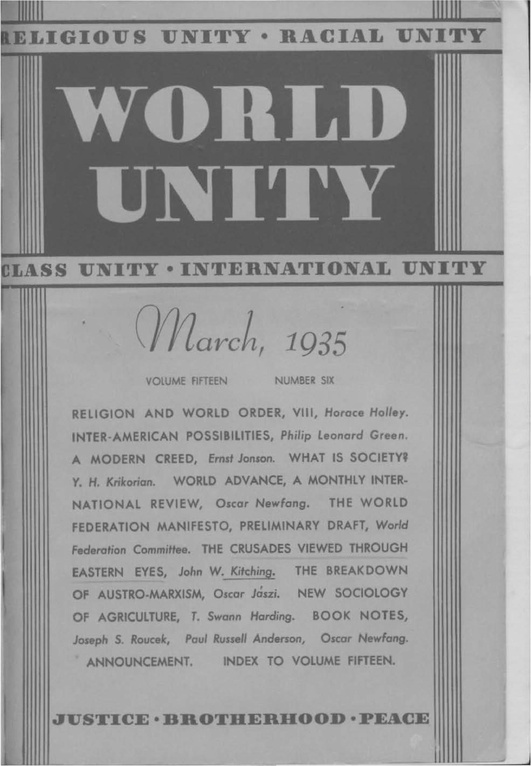
There were two aspects of the work of the Foundation that proved problematic. First, the objectives were lofty, but too broad. For example, the journal’s subhead was: “A monthly magazine promoting the international mind.” This allowed for wide participation in the Foundation’s work, but it also left ambiguous the question of what exactly the journal stood for. In 1932, the Foundation sought to bring greater clarity to this question, first by explicitly promoting the Bahá’í concept of world federation and then by adopting the tenets set forth in ‘Abdu’l-Bahá’s 1919 letter to the Central Organisation for Durable Peace in The Hague.
A second challenge was that the initial approach taken by the Foundation confused and dismayed many Bahá’ís. In the beginning, the founders were concerned that associating the World Unity Foundation explicitly with religion would turn away some people who otherwise shared Bahá’í ideals and would cause their primary target audience, leaders of thought, to ignore its activities. In fact, the Bahá’í background of the Foundation was so well-concealed that most who have written about it after it was discontinued have also believed that Dr. Randall was its sole founder and proponent. 32Most of what is published about Dr. Randall’s work with the World Unity Foundation is derived from memorials to him written by his descendants or from his own books. To address the confusion that had arisen, the magazine began in 1933 to include articles explicitly based on the Bahá’í Faith.33The decision to make the magazine more openly Bahá’í was taken in 1932. Letter dated October 28, 1932 from Horace Holley to Florence Morton, page 2, U.S. Bahá’í Archives. In a 1933 letter to Morton, Holley pointed out to her how he was trying to “build a bridge of sympathetic understanding between World Unity readers and the Articles of the Cause which will be published later on” through his more recent editorials. Letter dated February 2, 1933 from Horace Holley to Florence Morton, page 2, U.S. Bahá’í Archives. See also an explanation of the careful transition to Bahá’í content in letter dated January 7. 1933 from Horace Holley to Mary Movius, U.S. Bahá’í Archives. During its last years of publication, it was openly a Bahá’í journal.
Because of the controversy the Foundation generated within the Bahá’í community, Shoghi Effendi addressed the matter in a letter to the National Spiritual Assembly, discussing at length the approach of putting forth the Bahá’í message without mentioning the source of the ideas. Referring to the World Unity Conferences held earlier by Bahá’í communities, he wrote, “I desire to assure you of my heartfelt appreciation of such a splendid conception.” He then explored why a variety of approaches, both direct and indirect, to conveying the teachings of the Faith were appropriate and desirable if executed with thoughtful care under the supervision of a National Spiritual Assembly.34Shoghi Effendi, Bahá’í Administration, pp. 124 -28.
Just as the Foundation and its journal were gaining traction, they encountered one challenge that could not be overcome: The Great Depression of the 1930s. Morton could no longer pay her factory employees, much less continue to fund the organization. Movius experienced her own economic setbacks. Randall resigned at the end of 1932. In a last effort to save the journal, Holley took over as editor.35Both Randall and Holley were paid for their services, but after the financial crisis started, Holley took a cut in salary even as his responsibilities increased. For a time, he drew no pay but funded the journal from his own savings. Letter dated April 1, 1933 from Horace Holley to Florence Morton, U.S. Bahá’í National Archives. But the times were against it. The world’s rapid march towards war was already underway. Peace movements seemed out of touch and magazines promoting their ideals became a luxury. No matter the sacrificial strivings of the proponents of the World Unity Foundation, their resources proved insufficient to further any interest that had been generated. As Movius wrote to Holley, “I like extremely the editorials you are writing for ‘World Unity,’ and only hope they will bear fruit. They will, undoubtedly, even if we never hear of it.”36Both Randall and Holley were paid for their services, but after the financial crisis started, Holley took a cut in salary even as his responsibilities increased. For a time, he drew no pay but funded the journal from his own savings. Letter dated April 1, 1933 from Horace Holley to Florence Morton, U.S. Bahá’í National Archives.
Finally, in 1935, after consulting the institutions of the Bahá’í Faith, it was decided to merge World Unity with another publication, Star of the West (renamed The Bahá’í Magazine in its later volumes) to become a new entity, World Order.37Bahá’í News, no. 90, March 1935, p. 8. This magazine was published from 1935 to 1949, revived in 1966, and ran until 2007. Like World Unity, its erudite articles covered a wide range of topics aimed at the educated public, but it was unmistakably a Bahá’í organ under the auspices of the US National Spiritual Assembly and never acquired as broad a readership as World Unity.
Did the World Unity Foundation and its journal have any impact? The renowned head of the Riverside Church in New York City, Harry Emerson Fosdick, said of World Unity Magazine that it represented, “one of the most serious endeavors … to use journalism to educate the people as to the nature of the world community in which we are living.”38Undated World Unity circular. U.S. Bahá’í Archives. Perhaps the foremost scholar of internationalism during the early twentieth century, Warren F. Kuehl, listed the magazine as one of only a tiny handful at the time discussing issues promoting peace through international order, noting that it seemed unique in its advocacy of a world federation.39Kuehl, Warren F. and Lynne Dunn, Keeping the Covenant: American Internationalists and the League of Nations, 1920-1939, Kent State University Press, 1997, p. 73 Another scholar of diplomatic history, Anne L. Day, concluded that World Unity’s primary contribution was creating a space for lesser-known people interested in international peace to put forth their ideas.40Kuehl, Warren F. and Lynne Dunn, Keeping the Covenant: American Internationalists and the League of Nations, 1920-1939, Kent State University Press, 1997, pp. 100-101
… the conferences and the magazine helped foster a world outlook without prejudice and a faith in humanity which survived the horrors of World War II. World Unity Magazine gave young scholars a medium to which they could hone their insights toward global humanitarian values, thus broadening consciousness to recognize the moral and spiritual equality, “to realize that the interests of all men are mutual interests.”41Day, Anne L., “Randall, John Herman”, p. 596.
The World Unity Foundation was formally dissolved just as armies were moving into a growing number of hot spots in Europe and Asia. Within a few short years, much of the globe would be plunged into the most horrible conflict mankind had ever known. As the end of World War II came into view, a few far-sighted leaders became determined that such a catastrophe should never afflict humanity again and looked to the future. President Franklin Delano Roosevelt called for an international conference to be held in October 1945 to create a new organization of countries that would improve upon the impotent League of Nations. The United Nations would be born that year.
That historic conference was held in San Francisco, fulfilling ‘Abdu’l-Bahá’s wish that California would be the first place to hoist the banner of international peace. Seated in the audience were official representatives of the worldwide Bahá’í community, including Holley’s close friend and protégé, Mildred Mottahedeh, who would later serve as the Faith’s representative to the United Nations. Indeed, from the very inception of the United Nations, the Bahá’í International Community (BIC) has actively participated in its work as an official non-governmental organization.
Those representing the Bahá’í Faith to the United Nations and its agencies are building on the foundation laid by ‘Abdu’l-Bahá’ over a century ago, drawing on His example and the lessons that have been learned since. First and foremost, they have been guided by the conviction that all participation in endeavors to remedy the ills of humanity should be based on moral and spiritual principles. This precept applies to the design, implementation, and evaluation phase of any initiative. Discussing difficult issues by first identifying underlying principles naturally enhances unity and understanding. Furthermore, over the course of the past century, Bahá’ís have consistently fostered the broad inclusion of voices in public discourse, enabling the diverse voices of humanity to contribute, on equal footing, to those discussions that impact the great issues of the day.
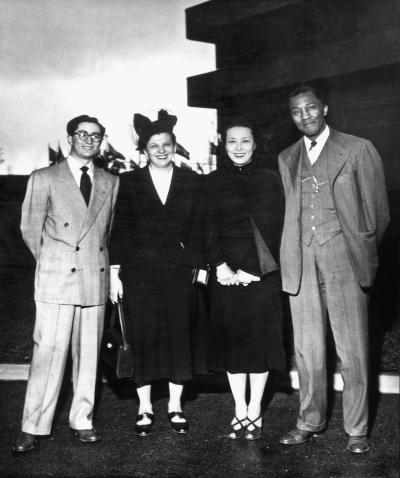
This deliberate approach, along with always adhering to the attributes of trustworthiness, inclusiveness, and dependability, has gained the BIC a positive reputation among Non-Governmental Organizations (NGOs). In 1970, the BIC representative was elected to serve on the Executive Board of the United Nations Conference of Non-Governmental Organizations. Subsequently, Bahá’í representatives have been elected or appointed to officer positions on a number of significant NGO committees and advisory bodies to the United Nations, often serving as chairpersons, such as the election of BIC Representative Mary Power as Chair of the NGO Commission on the Status of Women from 1991-1995.
The BIC’s wide-ranging engagement in the world’s most pressing issues has not gone unnoticed. As early as 1976, Kurt Waldheim, then United Nations Secretary-General, addressed the Bahá’í community with the following statement:
Non-governmental organizations such as yours, by dealing comprehensively with the major problems confronting the international community and striving to find solutions which will serve the interests of all nations, make a very substantial and most important contribution to the United Nations and its work.42In a message dated 1 June 1976 to the International Bahá’í Conference in Paris. Available at https://www.bic.org/timeline/international-bahai-conference-paris
In 1987, Secretary-General Javier Pérez de Cuéllar designated the BIC as “Peace Messengers,” an honor bestowed upon only three hundred organizations. Approaching the turn of the century, Secretary-General Kofi Annan called for both a Millennium Summit for the leaders of the world and a Millennium Forum for the world’s peoples, represented through non-governmental agencies. In recognition of its consistently principled approach to its work, its integrity, and its even-handedness, the BIC was chosen to co-chair the Forum and to provide the speaker from the Forum to address the Summit.
On September 8, 2000, Dr. Techeste Ahderom, then the BIC Principal Representative to the United Nations, addressed the assembled heads of state of more than 150 nations on behalf of the peoples of the world.43The Four Year Plan and The Twelve Month Plan, 1996 – 2001: Summary of Achievements, Bahá’í World Center, 2002. In his talk, Ahderom reminded the assembled leaders that the very idea of the League of Nations and, later, the United Nations, arose through the participation of civil society in various forms. He closed with the words from the Millenium Forum Declaration: “‘In our vision we are one human family, in all our diversity, living on one common homeland …’”44https://www.bic.org/statements/statement-millennium-summit
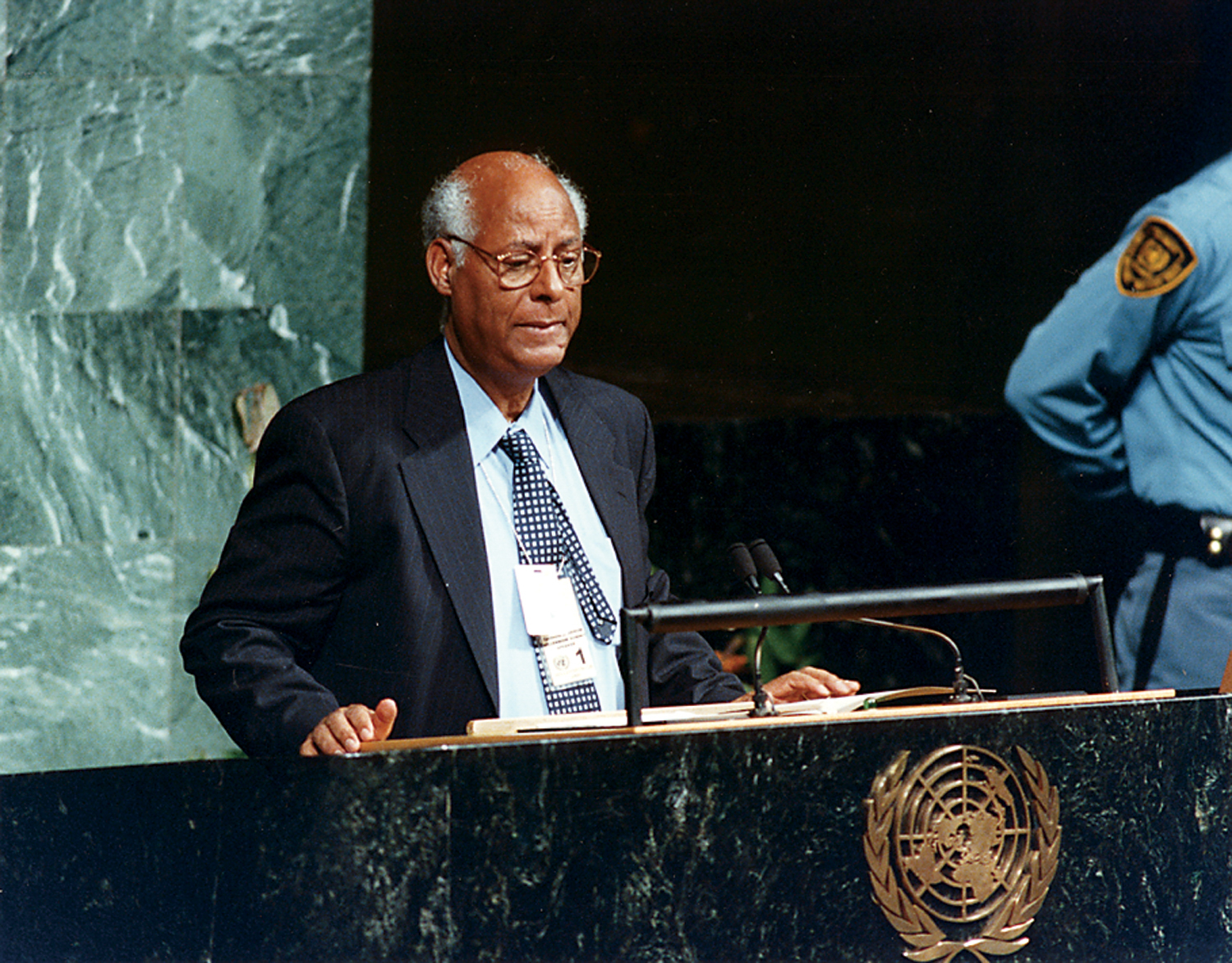
As resources have allowed and capacity has increased, the BIC has addressed vital issues including racial discrimination, human rights, the status of women, protection of the environment, science and technology, the rights of indigenous peoples, education, health, youth, freedom of religion or belief, global governance, and UN reform.
According to ‘Abdu’l-Bahá in His address at Lake Mohonk, the issue of peace is multifaceted, and it will not be attained until an environment is created that will ensure a lasting end to conflict. In its approach to the promotion of peace, the Bahá’í community has always sought a holistic approach to the question of global peace. In this light, the BIC New York Office in 2012 instituted a regular forum where ideas could be discussed freely, on the condition that the identity of the person or organization offering the information is not disclosed. Participants in these forums have thereby, regardless of their functions and roles, had the freedom to engage in consultation without it being assumed that their comments represent the official position of their country or organization. By mid-2020, more than sixty of these discussions had been held covering a wide range of topics.45Berger, Julia, Beyond Pluralism: A New Framework for Constructive Engagement (2008 – 2020), chapter 7, pp. 16 19. Pre-publication edition. I am grateful to Julia Berger and Melody Mirzaagha, for staff members of the Bahá’í International Community Offices in New York for their assistance and insights. I also wish to thank the BIC New York Office for directing me to Dr. Berger and Ms. Mirzaagha. Through this and many other efforts, the BIC has been learning to draw on the unseen power of consultation to create environments where those entrusted with global leadership and whose decisions impact the fortunes of the planet are able to deliberate in a distinctive environment on the major issues of our time.
To mark the 75th anniversary of the founding of the United Nations, the BIC issued a statement asserting that to meet the needs of the twenty-first century will require a far greater level of global integration and cooperation than anything that has existed before.46In 1995, a statement titled “Turning Point for All Nations” was issued for the 50th Anniversary of the United Nations. It is available at https://www.bic.org/statements/turning-point-all-nations The statement calls for the strengthening and evolution of the consultative process of international dialogue and for world leaders to give priority to that which will benefit the whole of humankind. It argues that what is needed now is a radical change in the approach to solving the problems of the world—a process that conceives of the world as an organic whole and takes into consideration the essential need for spiritual and ethical advancement to be commensurate with scientific and technological progress.47“A Governance Befitting: Humanity and the Path Toward a Just Global Order”, A Statement of the Bahá’í International Community on the Occasion of the 75th Anniversary of the United Nations, p. 5. https://www.bic.org/sites/default/files/pdf/un75_20201020.pdf
Ultimately, the goal of the Bahá’í Faith is to bring about a universal recognition that we are all one people—with the profound implications that carries through all areas of life, requiring no less than a restructuring of society. ‘Abdu’l-Bahá through His words and actions pointed out the way to promote this most essential of all truths, and a clear thread can be seen from His contributions to peace to the efforts of the Bahá’í community since. Such efforts will doubtless continue for decades, perhaps centuries, until the time arrives when all decisions will rest upon the indisputable reality of the oneness of humankind and the world will transform into a new world—a peaceful world where war is relegated to the sad accounts found only in history books.
In country after country, the bicentenary of the Birth of the Báb has been celebrated by people representing the rich diversity of the human race, giving rise to countless expressions of art, music, and acts of selfless service in honor of His life and teachings. As part of the efflorescence of activities during this period, Romanian artist Simina Boicu Rahmatian has prepared twenty-five illustrations that depict some of the most significant sites related to the brief but stirring history of the Bábí Faith. The hand-drawn illustrations that follow invite us to immerse ourselves in the “marvelous happenings that…heralded the advent of the Founder of the Bábí Dispensation, the dramatic circumstances of His own eventful life, the miraculous tragedy of His martyrdom, the magic of His influence exerted on the most eminent and powerful among His countrymen.”1Shoghi Effendi, The World Order of Bahá’u’lláh [US Bahá’í Publishing Trust, 1991] 124 The sepia tones transport us back to the nineteenth century. The contrast between light and shadow brings to life the buildings, towns and landscapes that form the backdrop against which a new religion came into existence. Yet, these images are seldom accompanied by the silhouettes of human beings; it is we the viewers who are invited to step into those scenes and imagine the settings and circumstances in which an extraordinary chapter of humanity’s spiritual evolution unfolded.
Some of the illustrations depict historic Oriental edifices: the Shrine of the Imám Ḥusayn in Karbala (no. 5), a well-known mosque and marketplace in Baghdad (no. 10), and the Masjid-i-Vakíl of Shiráz (no. 11). Also depicted are settings of sites more specifically associated with Bábí history: The front door of the Báb’s house in Shiráz (no. 3) is shut before our eyes, but our minds are invited in to imagine that fateful evening of May 22, 1844, when the Báb announced to His first disciple that He was the Promised One of Islam and the Gate (Báb, in Arabic) to a new age for humankind. While looking at the desolate castles of Máh-kú and Chihríq (nos. 14 and 15), where the Báb was imprisoned from 1847 to 1850, we are reminded of His isolation and deprivation; as He wrote, “there is not at night even a lighted lamp.”2Selections from the Writings of the Báb [Haifa: Bahá’í World Centre, 1978] 87 The sun-drenched barrack square of Ṭabríz (no. 20), where the Báb was executed, calls to our minds that unique historic moment when He, the target of hundreds of bullets, was nowhere to be found after the thick cloud of smoke cleared. Thousands, crowded around the city square, witnessed that remarkable scene. Other pictures remind us of the heroism of tens of thousands of His followers who courageously advanced a Cause that was destined to change the world. We visit the Sabzih-Maydán of Tehran (no. 18), where a young Iranian met his death singing a couplet from Rúmí: “In one hand the wine-cup, in one hand the tresses of the Friend. Such a dance in the midst of the market-place is my desire!“3Edward G. Browne, ed., A Traveller’s Narrative [Cambridge University Press, 1891] 333-4, Note T We stand before Tehran’s Gate of Naw (no. 22), on whose sides the remains of many of the Bábís were hung. We reflect somberly at Zanján’s square (no. 21), another theater of a terrible slaughter.
In the opening and concluding scenes of the collection, the artist portrays the cypress grove located at the south side of the Shrine of the Báb. The first image (no. 1) depicts the grove as seen from below in the early 1900s; the final image (no. 25) is the view from above that we see today. In the former, we can imagine Bahá’u’lláh standing beside the grove and instructing ‘Abdu’l-Bahá to house the remains of the Báb in the land just below those trees. In the latter, we see Bahá’u’lláh’s vision of the Shrine of the Báb realized in “the Queen of Carmel enthroned on God’s Mountain, crowned in glowing gold, robed in shimmering white, girdled in emerald green, enchanting every eye from air, sea, plain and hill.”4Shoghi Effendi, Messages to the Baha’i World – 1950-1957 [Wilmette: Bahá’í Publishing Trust, 1971] 169
In the visual journey ahead, we find the embodiment of these poignant words written by Shoghi Effendi in 1944:
We behold, as we survey the episodes of this first act of a sublime drama, the figure of its Master Hero, the Báb, arise meteor-like above the horizon of Shíráz, traverse the sombre sky of Persia from south to north, decline with tragic swiftness, and perish in a blaze of glory. We see His satellites, a galaxy of God-intoxicated heroes, mount above that same horizon, irradiate that same incandescent light, burn themselves out with that self-same swiftness, and impart in their turn an added impetus to the steadily gathering momentum of God’s nascent Faith.5Shoghi Effendi, God Passes By [Wilmette: Bahá’í Publishing Trust, 1974] 3
As the world endures a period of heightened crisis, may we be reminded of the extraordinary Figure of the Báb, Who was able to “illuminate a society and an age shrouded in darkness.”6October 2019 message of the Universal House of Justice to all who have come to honour the Herald of a new Dawn
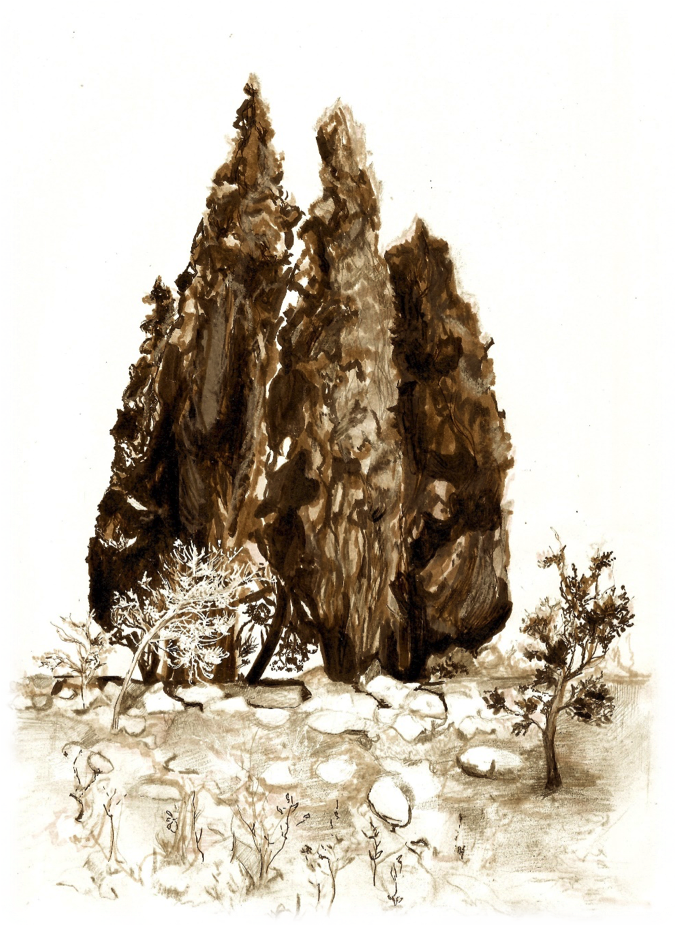
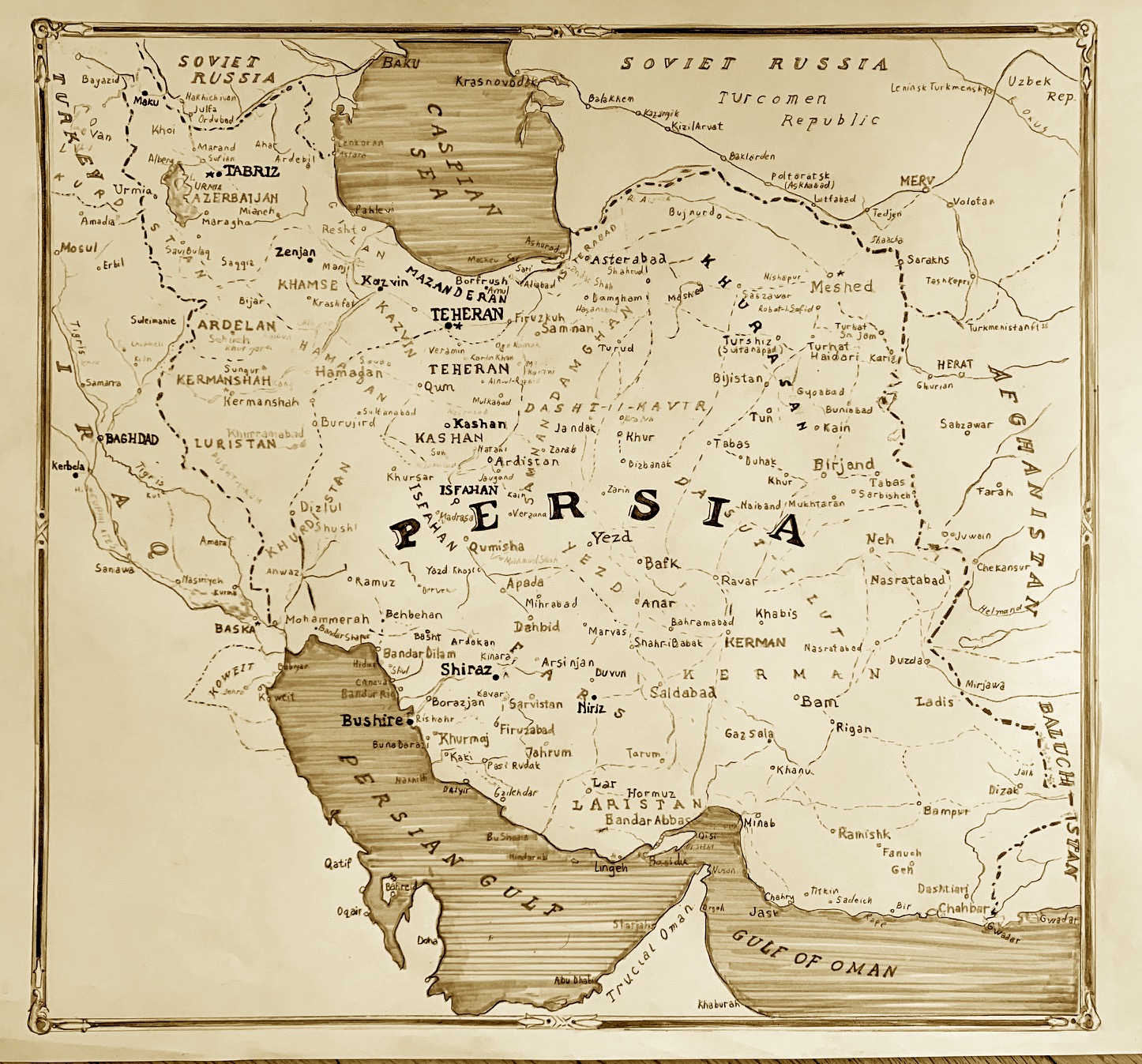

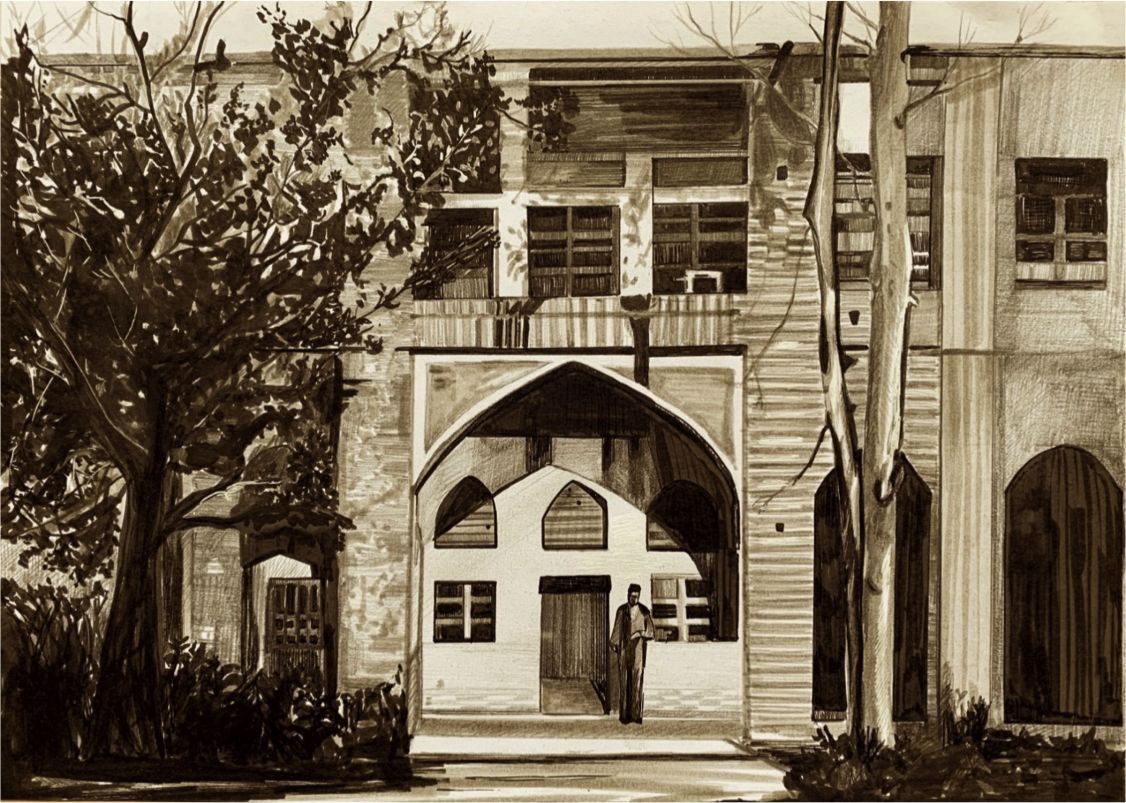
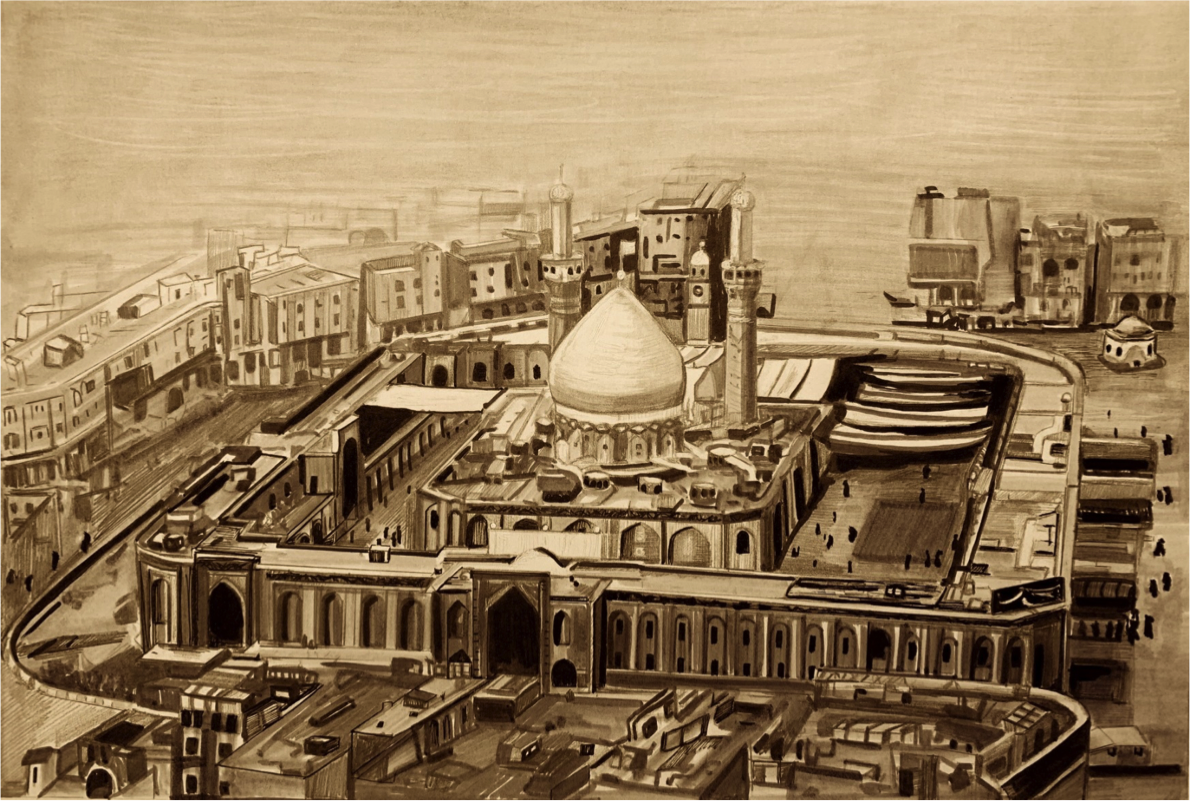
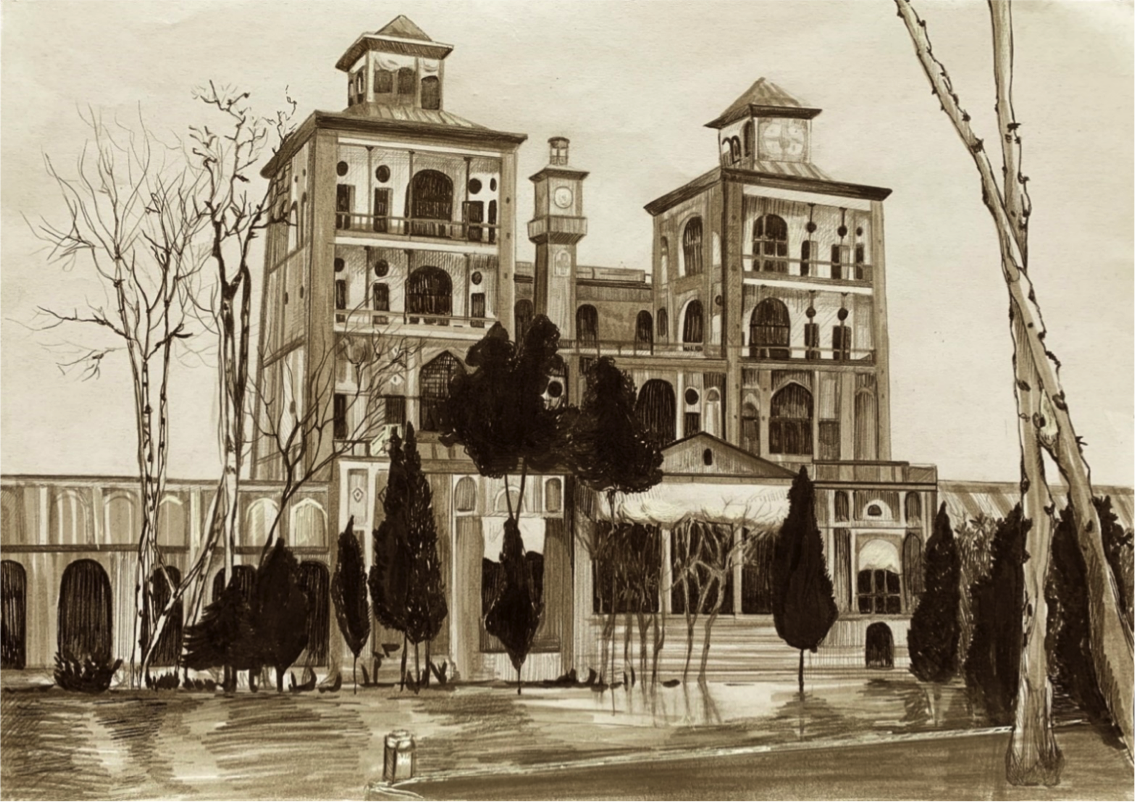
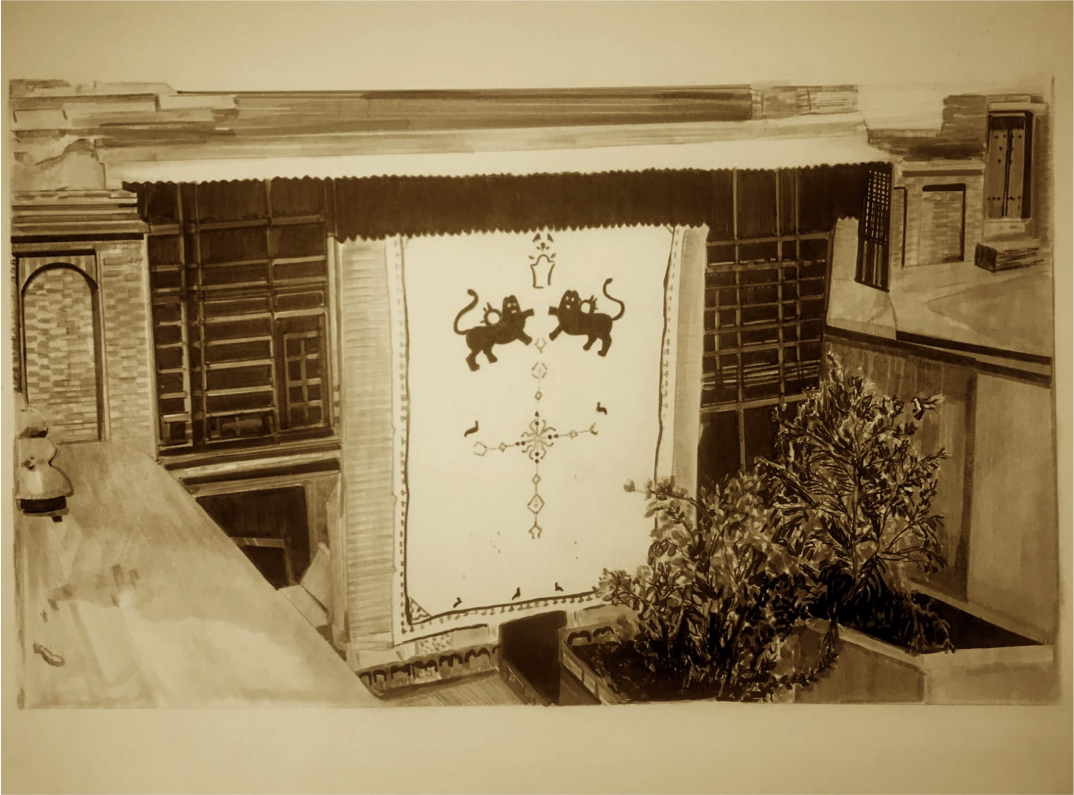
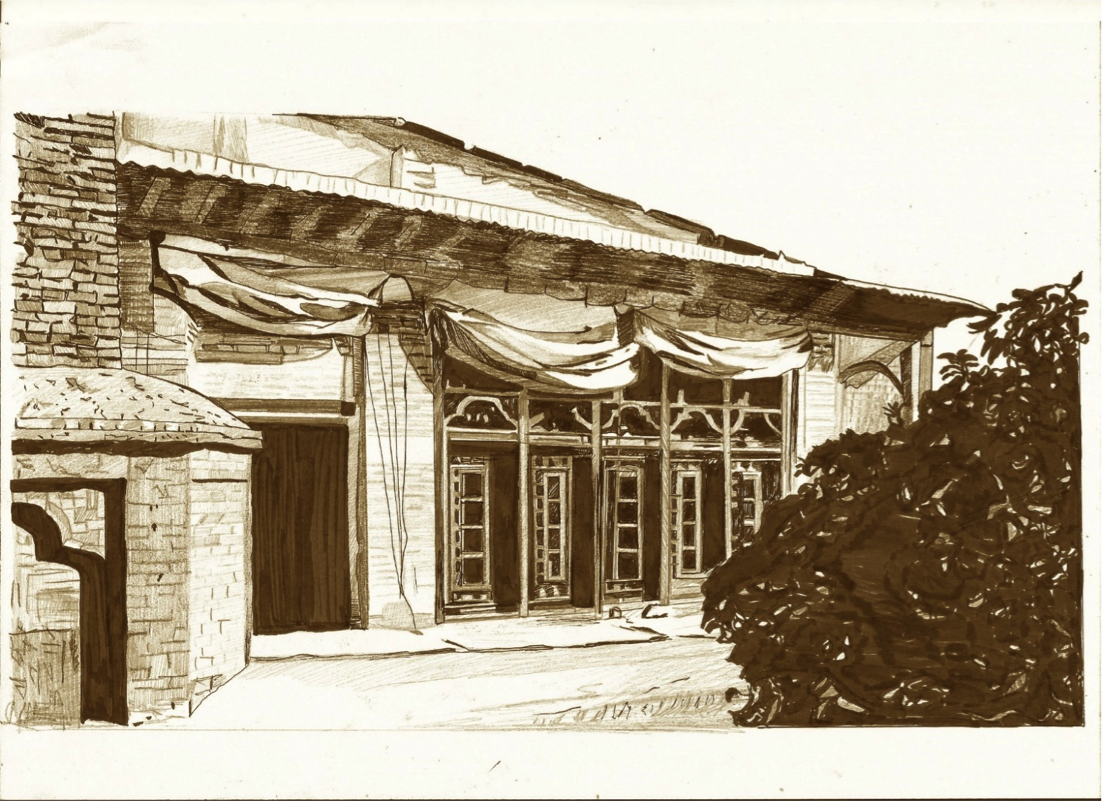

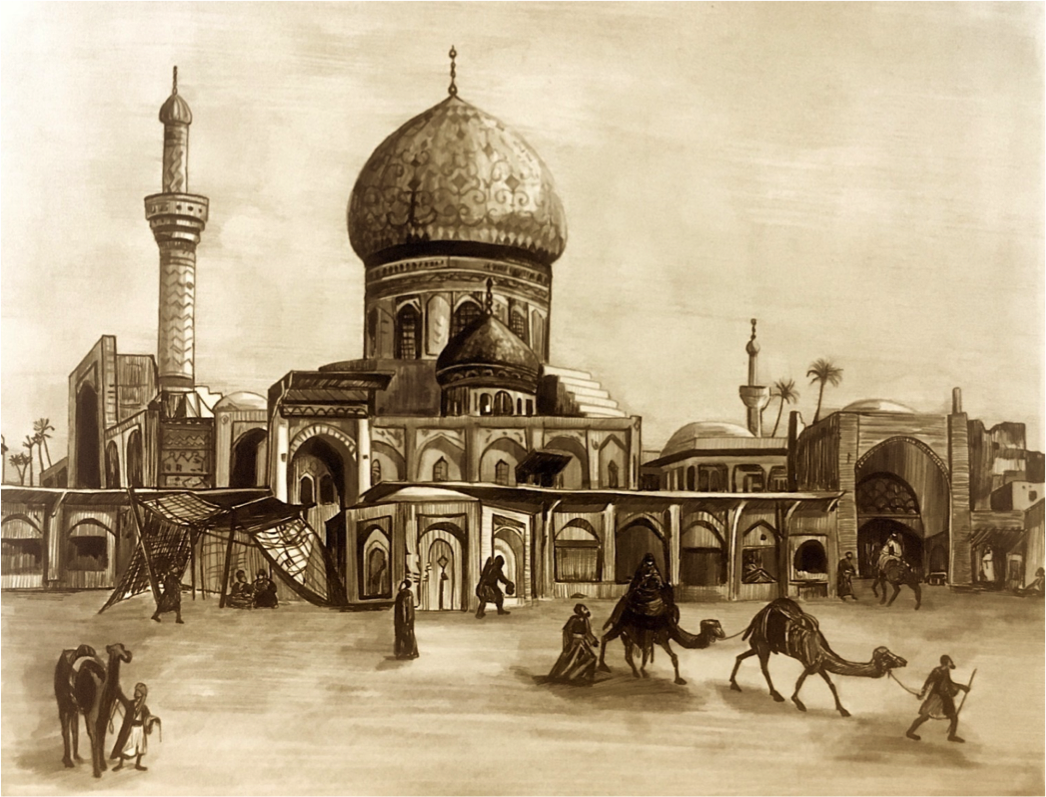
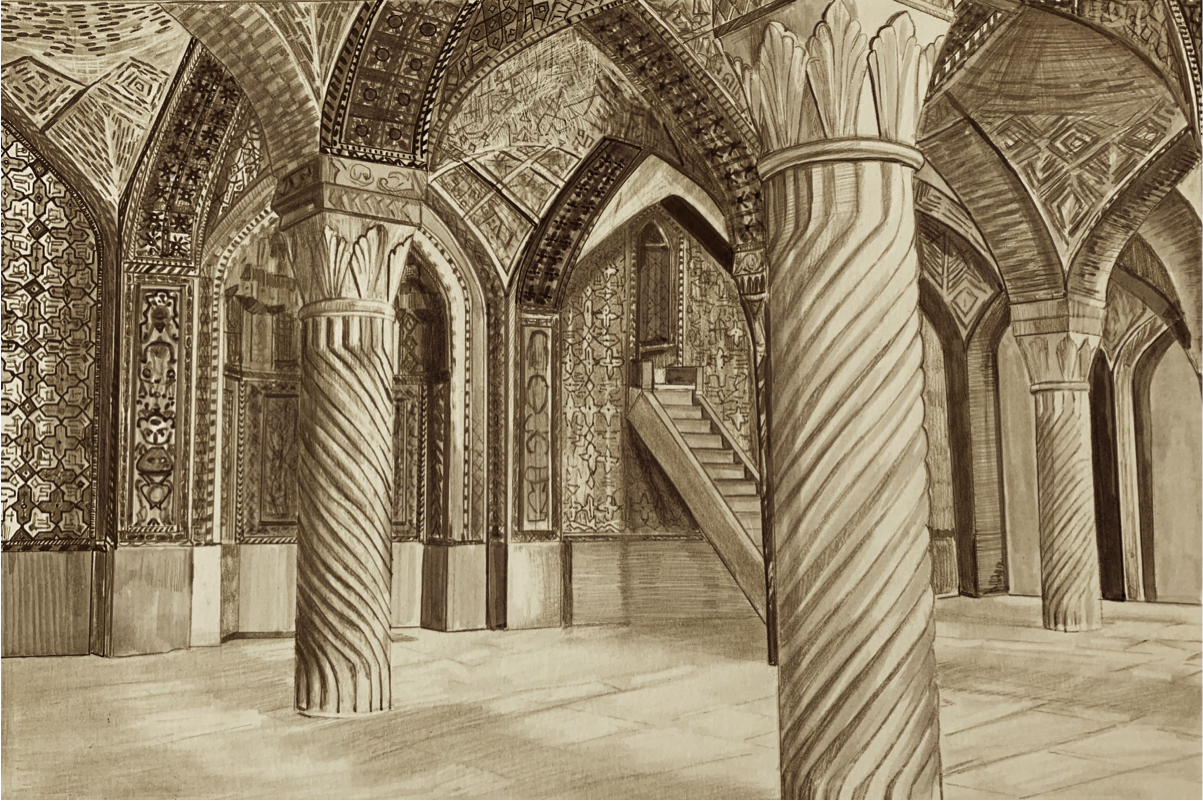
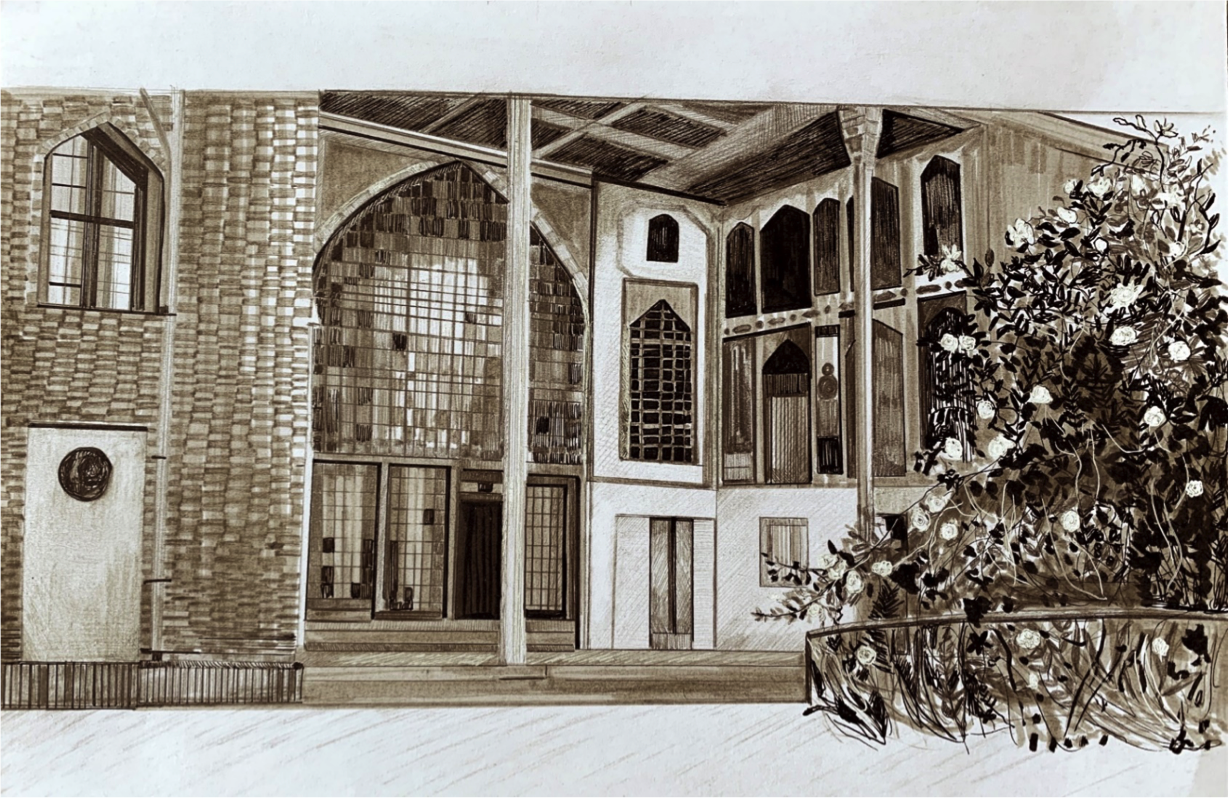
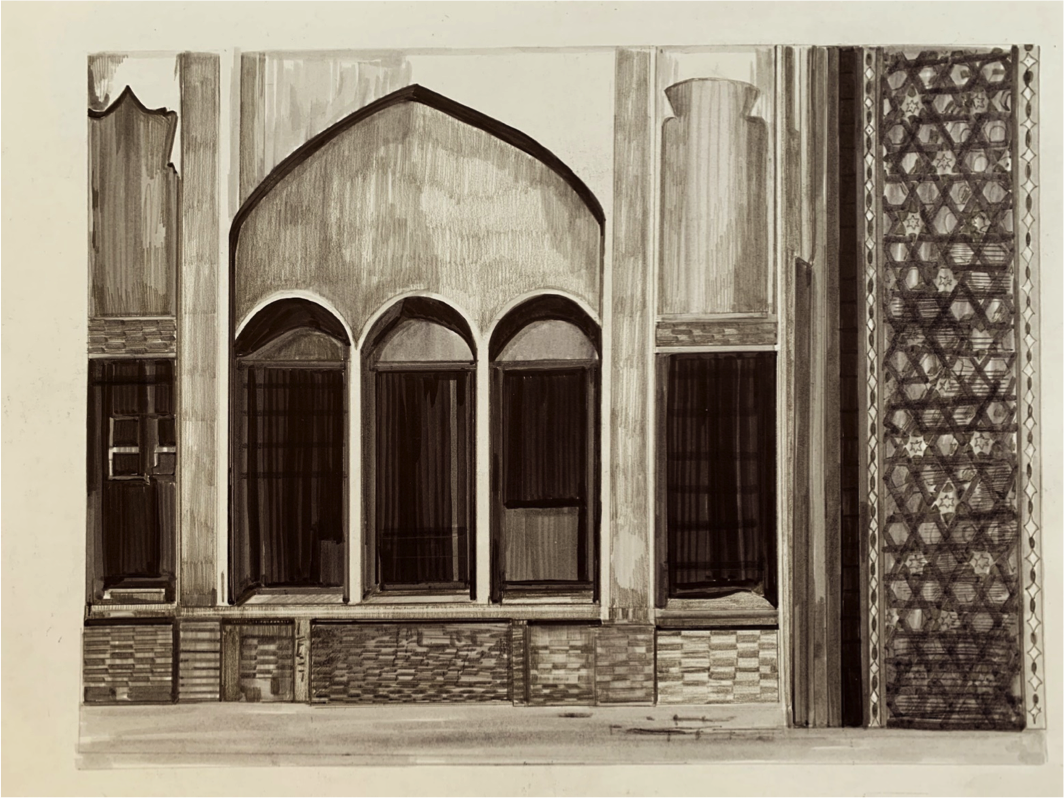
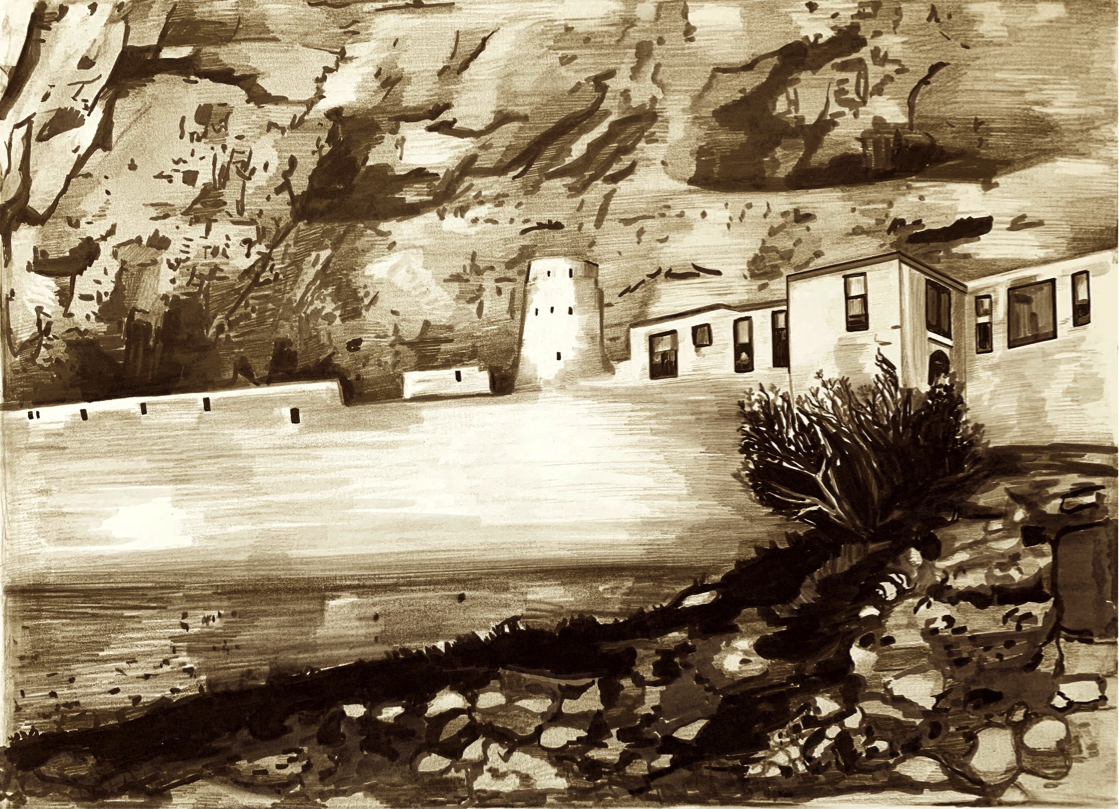

Credit: Simina Boicu


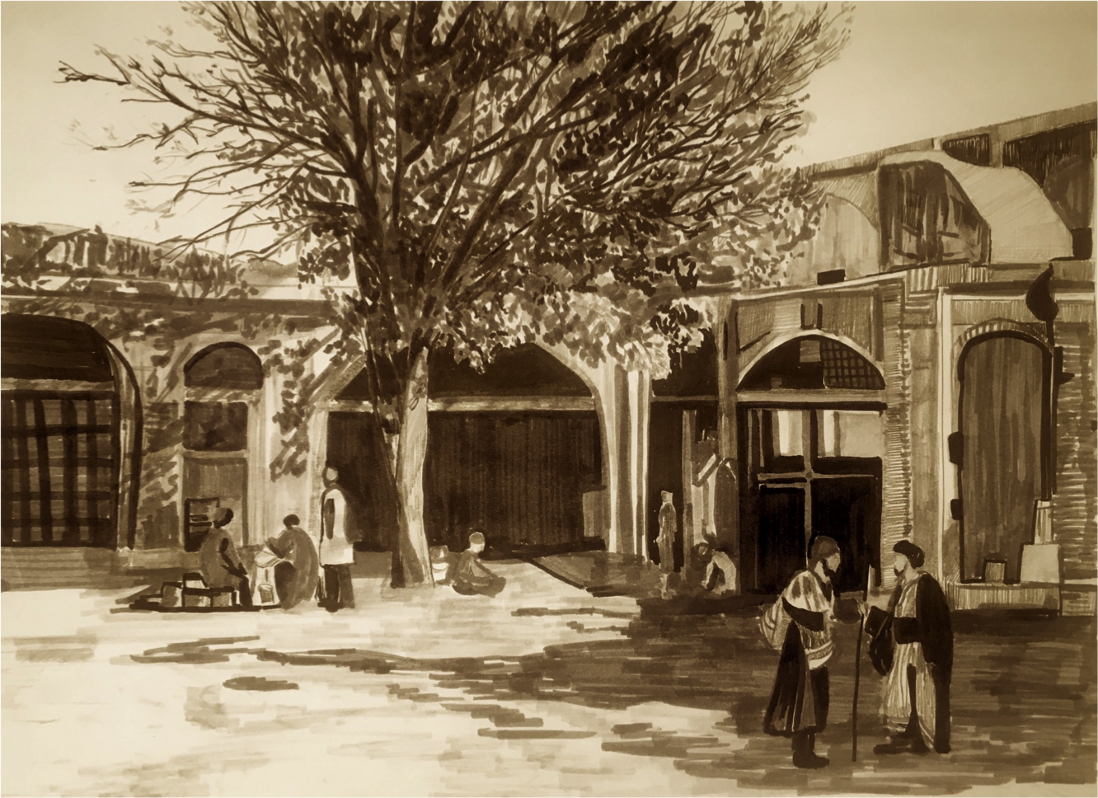
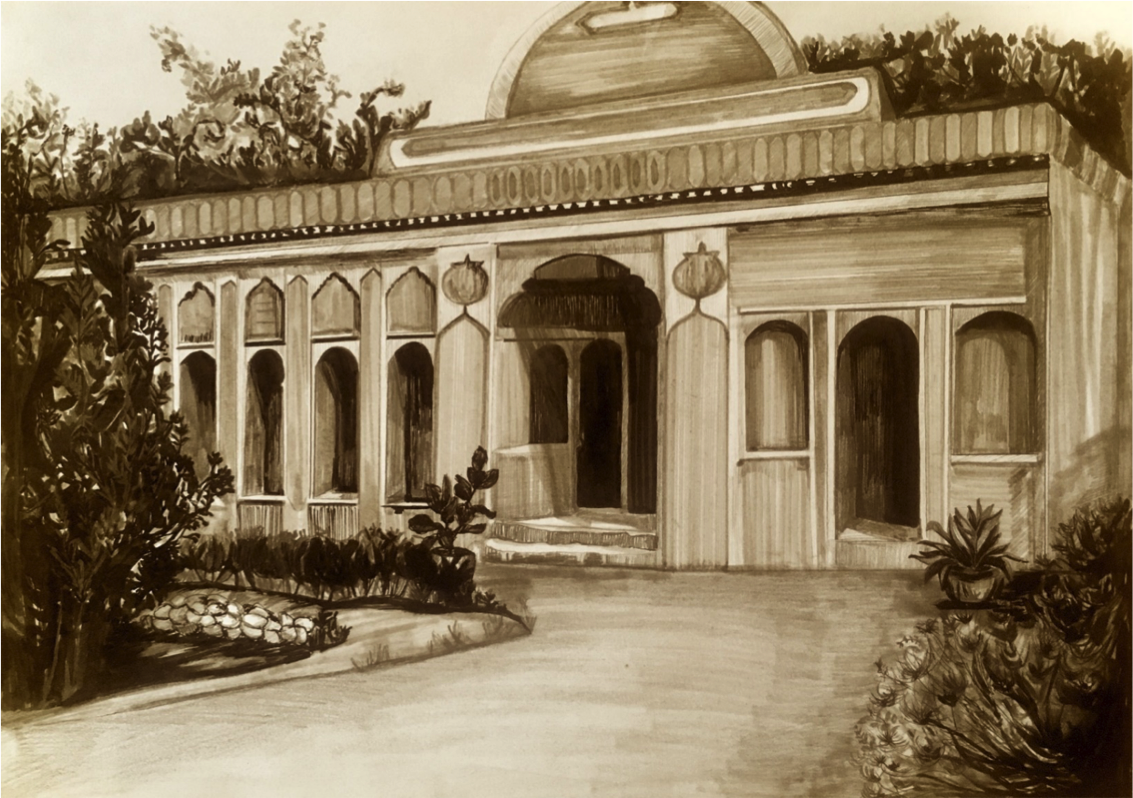
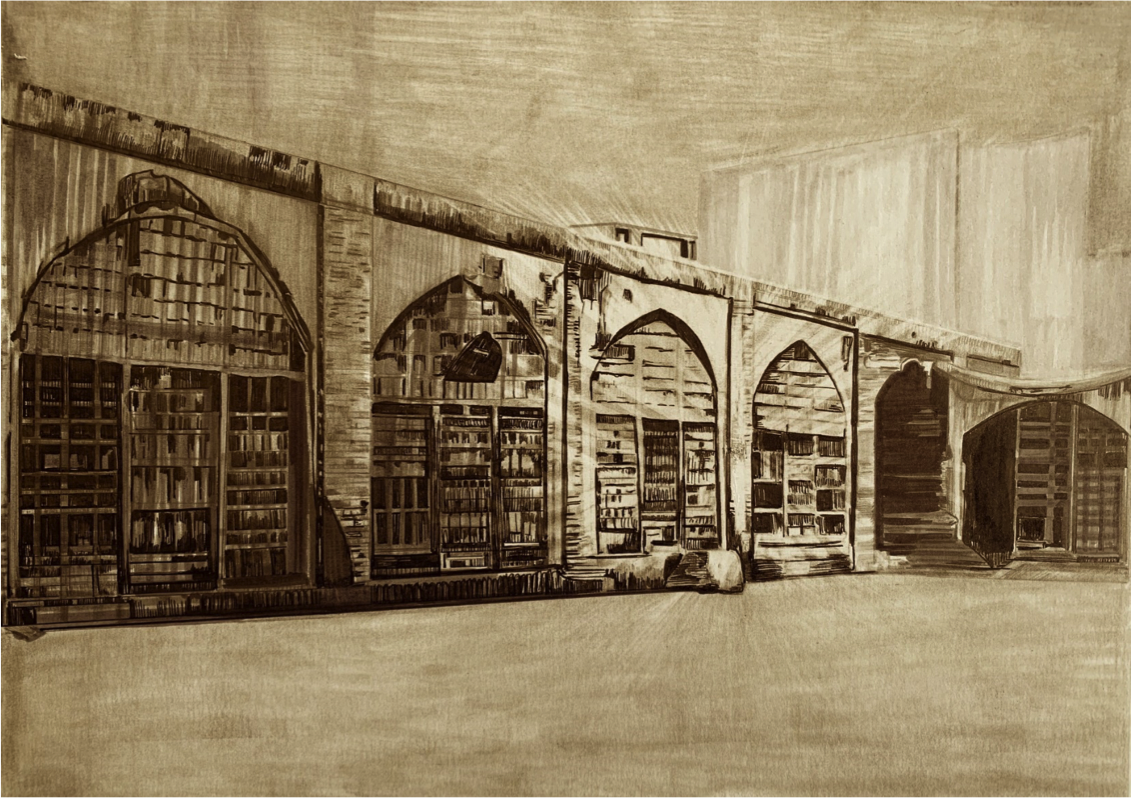
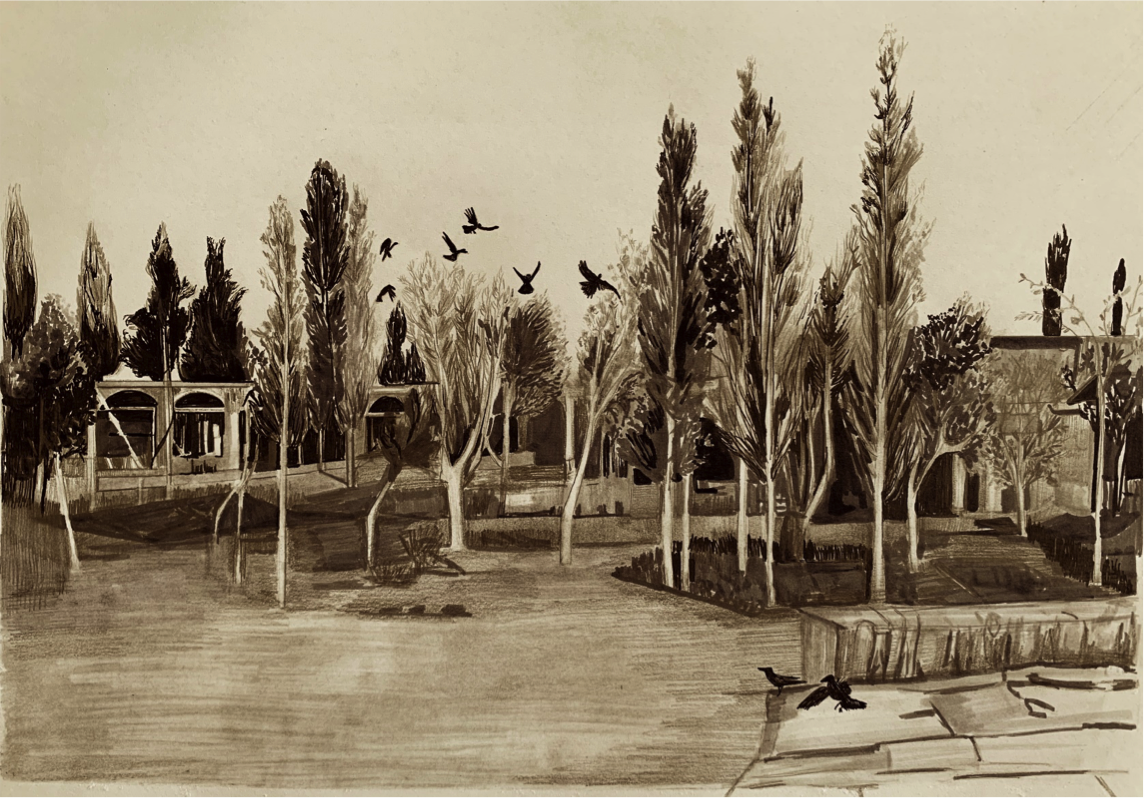
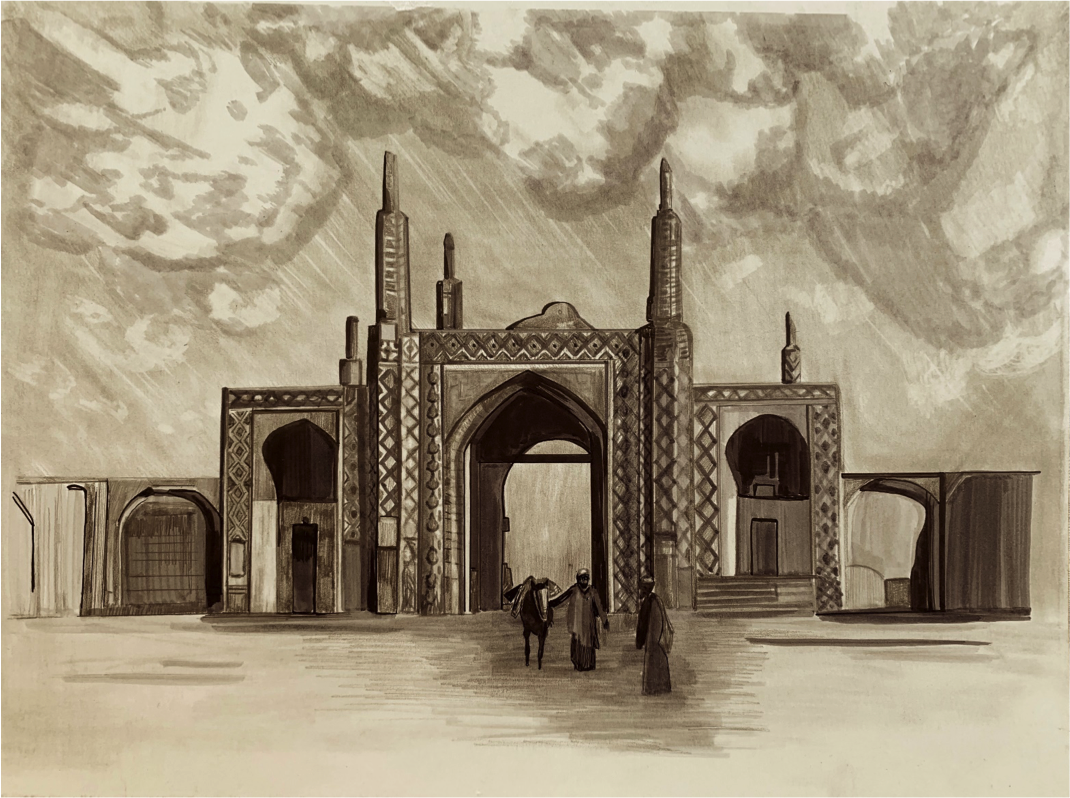
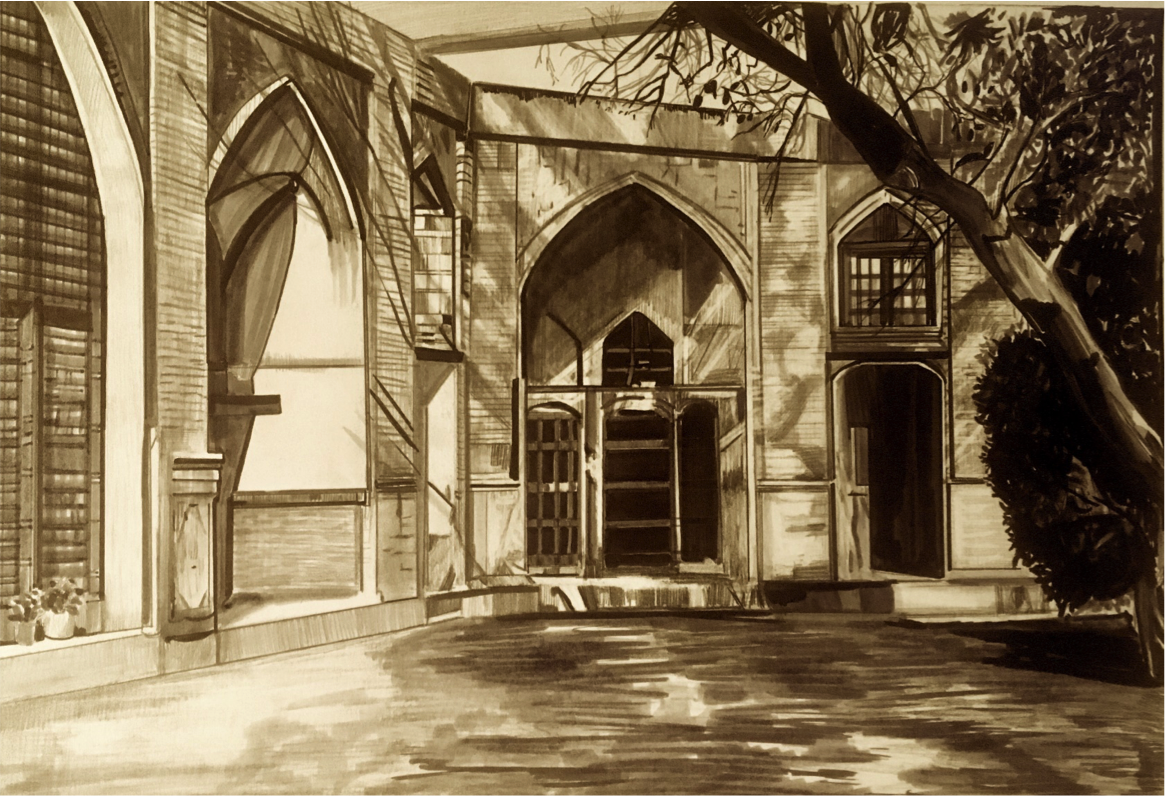
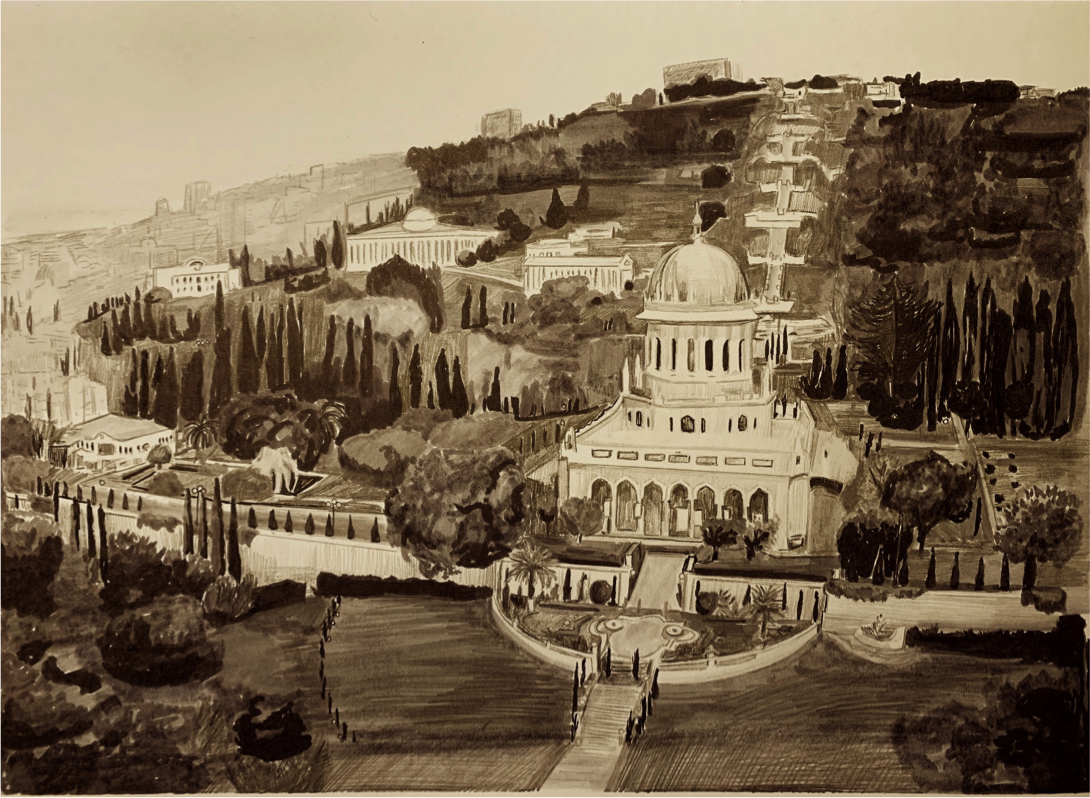
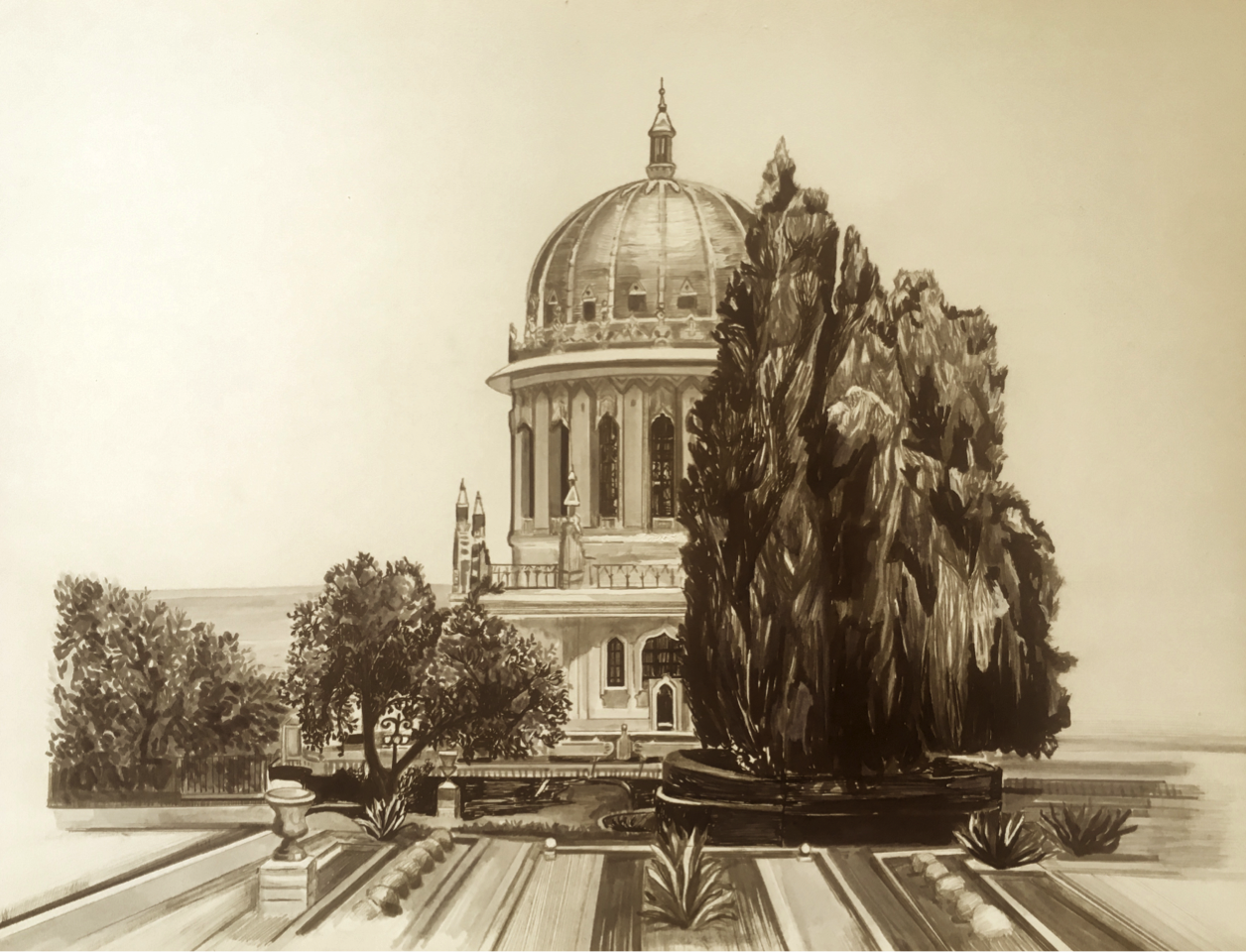
Credit: Simina Boicu
Although the 20th century witnessed the increasing recognition of principles such as universal human rights, democratic ideals, the equality of human beings, social justice, the peaceful resolution of conflict, and condemnation of the barbarism of war, it was nevertheless one of the bloodiest centuries in all human history. Such a development was unpredicted by classical sociological theorists writing in the second half of the 19th century, who either did not devote much attention to the question of war and peace or were optimistic about the prospects for peace in the 20th century. While war and peace were central questions in the social theories of both Auguste Comte (1798–1857),1Auguste Comte, Introduction to Positive Philosophy (Indianapolis: Bobbs Merrill, 1970). the founder of positivism, and Herbert Spencer (1820–1903),2Herbert Spencer, Evolution of Society (Chicago: University of Chicago Press, 1967). the founder of evolutionary and synthetic philosophy, for example, both conceived of social change as an evolutionary movement towards progress and characterized the emerging modern society as essentially peaceful—one in which military conquest aimed at the acquisition of land would be replaced with economic and industrial competition.3This is part of Comte’s law of three stages. According to this idea, all societies evolve by going through religious/theological, metaphysical/philosophical, and scientific/positive stages. Spencer defined a military society as one in which the social function of regulation is dominant, while in an industrial society the economic function predominates. Other classical theorists generally assumed that war among nations was a thing of the past.4Contrary to the popular perception, Durkheim, Marx, and Weber rarely engaged in a direct discussion of war or peace. Only after the onset of the World War I did Durkheim, Simmel, and Mead side with their own countries and discuss the issue. Such optimism was partly rooted in the relative security of Europe during the 19th century where, between the end of the Napoleonic wars in 1815 and the onset of World War I in 1914 there was a relatively long stage of peace, interrupted mainly by the German-French war of 1870. However, this security was a mere illusion, accompanied as it was by increasing militarism and nationalism in Europe and the vast scale of war and genocide perpetrated by European powers in their pursuit of colonial conquest in Africa and other parts of the world.
Standing in contrast to the misplaced optimism of the classical 19th century sociologists is the spiritual figure of Bahá’u’lláh, who was born in 1817 in Persia and initiated a transformative global religion centered on the urgency and necessity of peace making. He perceived that both the institutional structures of the 19th century and their cultural orientation promoted various forms of violence, including international wars. The significance of Bahá’u’lláh and His insights as they apply to peace movements and peace studies is evident through an examination of His worldview and of the manner in which His writings reconstruct foundational concepts such as mysticism, religion, and social order—emphasizing the replacement of the sword with the word.
Bahá’u’lláh and the Removal of the Sword
Mírzá Ḥusayn ‘Alíy-i-Núrí, who took the title Bahá’u’lláh (the Glory of God
), was born in Tehran, Iran, in 1817. As a young man, Bahá’u’lláh accepted the claim of the young merchant from Shiraz known as the Báb (the Gate
) to be the Promised One of Shí‘ih Islam. Both the clerics and state authorities in Iran declared the Báb’s ideas heretical and dangerous and unleashed a systematic campaign of genocide directed at His followers, the Bábís. The Báb Himself was executed in 1850—only six years after the announcement of His mission. While the writings of the Báb provided fresh and innovative interpretations of religious ideas, they pointed to the imminent appearance of a new Manifestation (prophet or messenger) of God and defined His entire revelation as a preparation for the coming of that great spiritual educator. During a massacre of the Bábís in 1852, Bahá’u’lláh was imprisoned in a dungeon in Tehran, where He received an epoch-making experience of revelation and perceived Himself to be the Promised One of all religions, including the Bábí Faith. After four months of imprisonment, and the confiscation of all His property, He was exiled to the Ottoman Empire, first to Baghdad, then in 1863 to Constantinople (Istanbul), and from there to Adrianople (Edirne), and finally, in 1868, to the fortress city of ‘Akká in the Holy Land, where He died in 1892.
Although Bahá’u’lláh founded a new religion, the meaning, and particularly the end purpose, of religion is transformed in His writings. As traditionally conceived, religion is often focused on a set of theological doctrines about God, prophets, the next world, and the Day of judgment. While these concepts are discussed and elucidated in His writings, Bahá’u’lláh emphasizes that He has come to renew and revitalize humanity, to reconstruct the world, and to bring peace. In His final work, the Book of the Covenant, He describes the purpose of His life, sufferings, revelation and writings in this way:
The aim of this Wronged One in sustaining woes and tribulations, in revealing the Holy Verses and in demonstrating proofs hath been naught but to quench the flame of hate and enmity, that the horizon of the hearts of men may be illumined with the light of concord and attain real peace and tranquillity.5Bahá’u’lláh, Kitáb-i-‘Ahd (Book of the Covenant), in Tablets of Bahá’u’lláh revealed after the Kitáb-i-Aqdas (Haifa: Bahá’í World Centre, 1978), 219.
In other words, affirming spiritual principles is inseparable from transforming the social order and from replacing hatred and violence with love and universal peace. From a Bahá’í point of view, then, religion must be the cause of unity and concord among human beings, and if it becomes a cause of enmity and violence, it is better not to have religion.6See for example, ‘Abdu’l-Bahá, Paris Talks. Making peace is the essence of Bahá’u’lláh’s normative orientation and worldview. It is ironic, therefore, that both the King of Iran and the Ottoman Sultan rose together against Bahá’u’lláh to silence His voice by intriguing to exile Him to the city of ‘Akká; however, their oppressive decision in the end only exemplified the Hegelian concept of the cunning of Reason,
7Georg W. F. Hegel, Reason in History (New York: Liberal Arts Press, 1953), 25–56. in which Reason realizes its plan through the unintended consequences of actions by individuals whose intent is their own selfish desires. As Bahá’u’lláh has frequently stated, His response to this final exile ordered by these two kings was to publicly announce His message to the rulers of the world. Upon arrival in ‘Akká, He wrote messages to world leaders, including those of Germany, England, Russia, Iran, and France, as well as to the Pope, explicitly declaring His cause and calling them all to unite and bring about world peace. The second irony is that it was through this exile that He was brought to the Holy Land, where the coming of final peace in the world is prophesied to take place, when the wolf and lamb will feed together and swords will be beaten into plowshares.8Isaiah 11:6 and 2:4.
In order to better understand the vital connection between Bahá’u’lláh’s revelation and His concern with peace, let us examine that experience of revelation in the Tehran dungeon in 1852 which marks the birth of the Bahá’í Faith. Bahá’u’lláh describes this experience:
One night, in a dream, these exalted words were heard on every side:
Verily, We shall render Thee victorious by Thyself and by Thy Pen. Grieve Thou not for that which hath befallen Thee, neither be Thou afraid, for Thou art in safety. Erelong will God raise up the treasures of the earth—men who will aid Thee through Thyself and through Thy Name, wherewith God hath revived the hearts of such as have recognized Him.9Bahá’u’lláh, Epistle to the Son of the Wolf, accessed 7 June 2018, http://www.bahai.org/library/authoritative-texts/bahaullah/epistle-son-wolf/#f=f2-35
This brief statement epitomizes many of the central teachings of the Bahá’í Faith, one of the most important of which is the replacement of the sword with the word. The victory of the Cause of Bahá’u’lláh will take place through the person and character of Bahá’u’lláh and by means of His pen: words and their embodiment in deeds are the only means through which the message of Bahá’u’lláh can be promoted. Thus, the Islamic concept of jihad is abrogated, as is any concept of the religion and its propagation that includes violence, discrimination, coercion, avoidance, and hatred of others. Bahá’u’lláh continually presents the elimination of religious fanaticism, hatred, and violence as one of the main goals of His revelation.
This first experience of revelation defines the substantive message of the new religion in terms of the method of its promotion: A peaceful and dialogical method is the very essence of the new concept of peace and justice. Unlike doctrines that justify forms of violence and oppression as acceptable or even necessary methods of establishing peace and justice in the world, Bahá’u’lláh’s teachings categorically affirm the unity of substance and method in peace making: peace is realized through the way we live, the words we use, and the means we employ to bring about justice, unity, and peace. For Bahá’u’lláh, the time has come to reject the law of the jungle not only in our normative pronouncements about humanity but also in the methods we pursue in order to realize lofty ideals.10See Saiedi, From Oppression to Empowerment,The Journal of Bahá’í Studies 26:1–2 (Spring/Summer 2016), 28–30.
The word, or the pen, is central in Bahá’í philosophy. In the experience of revelation, there is a conversation between God and Bahá’u’lláh, which is an exact repetition of the conversation between God and Moses. According to the Qur’án, God gives two proofs to Moses: His staff and His shining hand. When Moses places His staff on the ground, it becomes a mighty snake, causing Him to become afraid and stand back. God tells Him: Be Thou not afraid, for Thou art in safety.
11Qur’an 28:31. These same words are now uttered by God to Bahá’u’lláh,12While in translation they may appear to be slightly different, they are identical in the original Arabic. implying that the staff of Moses has been replaced by the pen of Bahá’u’lláh as His mighty proof of truth. Likewise, instead of the hand of Moses, the entire being and character of Bahá’u’lláh have become His new evidence. The immediate implication is the unity of Bahá’u’lláh and Moses. This reflects one of Bahá’u’lláh’s central teachings: that all the Manifestations of God are one and that They convey the same fundamental spiritual truth, leading to the principle of the harmony and unity of all religions.
This replacement of the staff with the pen further emphasizes the fact that His cause is rendered victorious through the effect of His words, rather than the performance of supernatural phenomena, or miracles; His message and His teachings constitute the supreme evidence of His truth. This replacement of physical miracles with the miracle of the spirit, namely the Word, is one of the central distinguishing features of Bahá’u’lláh’s worldview. But the most direct expression of the centrality of the pen in Bahá’u’lláh’s revelation is the new definition and conception of the human being offered in this first experience of revelation. The assertion that the cause of Bahá’u’lláh can only be rendered victorious by the pen implies that each soul possesses the capacity to independently recognize spiritual truth. Bahá’u’lláh frequently points out that all humans are created by God as mirrors of divine attributes, and because all individuals are responsible for realizing this divine gift, all the writings of Bahá’u’lláh, in one way or another, call for spiritual autonomy; no one should blindly follow or imitate any other in spiritual, political, and ethical issues. That is why priesthood has been eliminated in the Bahá’í religion and all Bahá’ís are equally and directly responsible before God. The implication of this spiritual autonomy is the utilization of democratic forms of decision making, as characterizes the Bahá’í administrative institutions. However, this form of democracy transcends the materialistic and partisan definition of the prevalent forms in society. Rather, it is a democracy of consultation based on a spiritual definition of reality that views all humans as noble beings endowed with rights.
One final implication of this first experience of revelation needs to be emphasized. According to Bahá’u’lláh’s description, the message of God was brought to Him by a Maid of Heaven. While God, the unknowable, is neither male nor female, the revelation of God through this Word, the supreme sacred reality in the created world, is presented as a feminine reality. Bahá’u’lláh received His revelation not from a tree, a bird, or a male angel, but rather from a female angel who metaphorically symbolizes the inner mystical truth of all the prophets of God. Therefore, the very inception of the Bahá’í revelation is characterized by a fundamental re-examination of the station of women. They are no longer the embodiments and symbols of selfish desires, irrationality, corruption, and worldly attraction; instead, they represent the supreme reflection of God in this world. At the same time, the removal of the sword in this first experience of revelation is a revolutionary critique of patriarchal culture and worldview. These two points are inseparable. The realization of a culture of peace requires the equality and unity of men and women, as violence and patriarchy are inseparable.
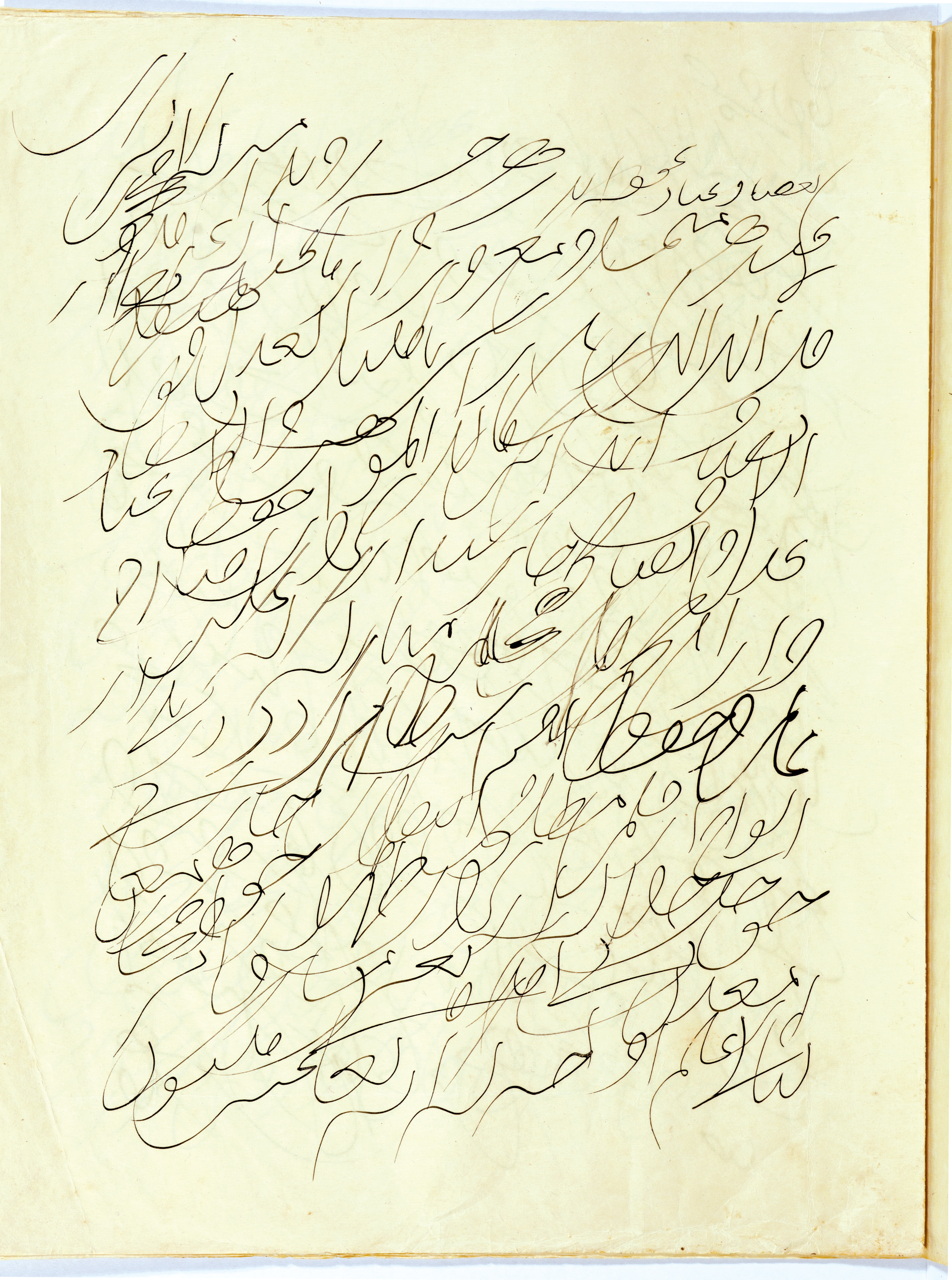
From Word Order to World Order
The Writings of Bahá’u’lláh cover a period of forty years, from His imprisonment in the Tehran dungeon in 1852 to His passing in 1892. In the following passage, He describes the purpose and the stages of His writings:
Behold and observe! This is the finger of might by which the heaven of vain imaginings was indeed cleft asunder. Incline thine ear and Hear! This is the call of My Pen which was raised among mystics, then divines, and then kings and rulers.13Bahá’u’lláh, Ishráqát (Tehran: Mu’assisiy-i-Millíy-i-Matbú‘át-i-Amrí, n.d.), 260. Provisional translation.
In the first part of this statement, Bahá’u’lláh presents the contrasting images of the finger of might
and the heaven of vain imaginings
. While the idea of cleaving the moon is attributed to the prophet Muhammad, now Bahá’u’lláh’s pen is rending not only the moon but the entire heaven, which represents the illusions, idle fancies, superstitions, and misconceptions that have erected walls of estrangement between human beings, have enslaved them, and have reduced their culture to the level of the animal. Bahá’u’lláh emphasizes that violence, oppression, and hatred are embodiments of vain imaginings and illusions constructed by human beings. Now, through his pen, He has come to tear away these veils, extinguish the fire of enmity and hatred, and bring people together.
In the second part of this statement, Bahá’u’lláh identifies the stages and order of His words, which were first addressed to mystics, then to divines, and finally to the kings and rulers of the world. His first writings, those written between 1852 and 1859, including the time He lived in Iraq, primarily address mystical concepts and categories.14See The Call of the Divine Beloved: Selected Mystical Works of Bahá’u’lláh (Haifa, Bahá’í World Centre, 2018), https://www.bahai.org/library/authoritative-texts/bahaullah/call-divine-beloved/. Those of the second stage, encompassing His writings between 1859 and 1867, address the religious leaders and their interpretation of religion. Finally His writings from 1868 on, directed both to the generality of humankind and to the kings and rulers of the world, address social and political questions. Each stage emphasizes a certain principle of Bahá’u’lláh’s worldview, following the sequence of His spiritual logic. The principles corresponding to these stages are as follows: a spiritual interpretation of reality, historical consciousness—even the historicity of the words of God—and global consciousness. The worldview of Bahá’u’lláh is defined by the mutual interdependence of these three principles.
Each stage of the writings of Bahá’u’lláh aims to reinterpret and reconstruct traditional ideas and worldviews. Therefore, the dynamics of His writings can be described by His reconstruction of mysticism, religion, and the social order.
1. Reconstruction of Mysticism
In His earlier writings, Bahá’u’lláh directly engages with Persian and Islamic forms of mysticism; through these and His later writings, He reconstructs mysticism so as to realize its full potential. To understand this point, it is useful to refer to the twin concepts of the arc of descent (qaws-i-nuzúl) and arc of ascent (qaws-i-ṣu‘úd) which comprise the spiritual or mystical journey. The arc of descent is normally perceived as the descent of reality from God—the dynamics of material creation, culminating in the emergence of human life. As a consequence, however, human beings are estranged from their origin and their own truth, which is the unity of God. This yearning for reunion, in turn, initiates the arc of ascent, the mystical journey of the soul’s return to its source. The arc of ascent, as seen, for example, in the Seven Valleys, transcends the realm of conflict and plurality to discover the underlying truth of all reality, namely God.15 The stages of spiritual ascent are frequently referred to as seven valleys or seven cities. In ‘Aṭṭár’s Conference of the Birds these stages are: search/quest, love, knowledge, contentment/independence, unity, wonderment/bewilderment, and annihilation in God. Baha’u’llah’s Seven Valleys employs these stages, but He makes a slight change in the order, bringing contentment/independence after unity. See The Call of the Divine Beloved. With the annihilation of self that is found in this unity, one is assumed to have reached the zenith of the arc of ascent.
Although in traditional views of mystical consciousness, the zenith of the arc of ascent is the highest and end point of the spiritual journey, in reality this is just the beginning of a new stage. But in traditional consciousness all humans become sacred and equal only in God. In other words, only when living human beings, made of flesh and blood, are divested of their various determinations and turned into an abstraction do they become noble and sacred. For example, only when women are no longer women—that is, when their concrete determinations are negated and annulled in God—do they become equal to men. But concrete, living women remain inferior to men in rights, spiritual station, and rank. Thus despite the claim to see God in everything, the presence of social inequalities including slavery, patriarchy, religious discrimination, political despotism, and caste-like distinctions could go unchallenged.
For that reason, we need a further arc of descent
to bring the fundamental insight and achievement of mystic oneness down to earth. In other words, after tracing the arc of ascent and attaining the consciousness of unity, one must be able to descend once again into the world of concrete plurality and time and maintain the consciousness of unity without being imprisoned in the consciousness of conflict and estrangement. In this way, the wayfarer is transformed into a new being who sees the unity of all in the concrete diversity of the world; in this arc of descent, one comes to see in all people their truth, or their divine attributes. The result of this consciousness is the end of the logic of separation, discrimination, prejudice, and hatred, and the beginning of the culture of the oneness of the human race, encompassing equal rights of all humans, the equality of men and women, religious tolerance and unity, and universal love for all people. Thus, according to Bahá’u’lláh, the real task of the mystic is not just the inward transformation of the annihilation of self in God but to transform the world so that the mystical truth of all human beings is manifested in the relations, structures, and institutions of social order. Since all beings become reflections of God, God and his unity are recognized within the diversity of moments and beings, resulting in the worldview of unity in diversity.
2. Reconstruction of Religion
The reconstruction of religion is, in fact, the first stage of the new arc of descent. In this first step, one descends from the unity of God and eternity to the diversity of the prophets and Manifestations of God. Here, history reveals a unity in diversity that reflects in its dynamics the unity of God: the Bahá’í view finds all the Manifestations of God to be one and the same, because they are reflections of divine unity and divine attributes. Since God is defined in the Torah, Gospel, and Qur’án as being the First and the Last, all the Manifestations are also the first and the last.16Examples are Isaiah 44:6 and 48:12, Revelation 1:8 and 22:13, and Qur’án 57:2. They are also the return of each other. Bahá’u’lláh views the realm of religion as the reflection of both diversity (of historical progress) and unity (of all the prophets). He says:
It is clear and evident to thee that all the Prophets are the Temples of the Cause of God, Who have appeared clothed in divers attire. If thou wilt observe with discriminating eyes, thou wilt behold Them all abiding in the same tabernacle, soaring in the same heaven, seated upon the same throne, uttering the same speech, and proclaiming the same Faith. Such is the unity of those Essences of Being, those Luminaries of infinite and immeasurable splendor! Wherefore, should one of these Manifestations of Holiness proclaim saying:
I am the return of all the Prophets,He, verily, speaketh the truth. In like manner, in every subsequent Revelation, the return of the former Revelation is a fact, the truth of which is firmly established.17Bahá’u’lláh, The Kitáb-i-Iqán: The Book of Certitude (Wilmette: Bahá’í Publishing Trust, 1983), 153–54.
In other words, the Word of God, which is the essence of all religions, is a living and dynamic reality. It is one Word that, at different historical moments, appears in new forms. The different prophets are like the same sun that appears at different times at a different place on the horizon. While the traditional approach to religion usually reduces the identity of the sun to its historically specific horizon and therefore emphasizes opposition and hostility among various religions, Bahá’u’lláh identifies the truth of all religions as one and calls for the unity of religions. In Bahá’u’lláh’s view, a major cause of violence, war, and oppression in the world is religious fanaticism created by the vain imaginings of religious leaders. He warned: Religious fanaticism and hatred are a world-devouring fire whose violence none can quench. The Hand of Divine power can, alone, deliver mankind from this desolating affliction.
18Bahá’u’lláh, Epistle to the Son of the Wolf, accessed 8 June 2018, http://www.bahai.org/library/authoritative-texts/bahaullah/epistle-son-wolf/#f=f2-19. The establishment of peace, then, requires overcoming such religious hatred and discord.
3. Reconstruction of the World
The second step of the new arc of descent relates to the wayfarer’s descent into the world. Here, the consciousness of unity necessarily leads to the principle of the oneness of humankind as well as to universal peace. In traditional religious consciousness, the relationship between the created and the Creator is repeated in all forms of social relations. Thus, the relation between men and women, kings and subjects, free persons and slaves, believers and non-believers, and even clerics and laymen repeat the relation between God and human beings. In this way, the illusion is created that domination, discrimination, violence, and opposition are legitimized by religion. In contrast, Bahá’u’lláh explains that the relation that truly obtains is that because all are created by God and are servants of God, all are equal. Instead of repeating in the realm of social order the relation of God to the created world, the servitude of all before God denotes the equality and nobility of all human beings. The task of true mysticism therefore is not to escape from the world, but rather to transform it so that it becomes a mirror of the republic of spirit or the kingdom of God. Bahá’u’lláh’s global consciousness and His concept of peace are embodiments of this reinterpretation of the world and social order, as reflected in the following statement in which He redefines what it is to be human:
That one indeed is a man who, today, dedicateth himself to the service of the entire human race. The Great Being saith: Blessed and happy is he that ariseth to promote the best interests of the peoples and kindreds of the earth. In another passage He hath proclaimed: It is not for him to pride himself who loveth his own country, but rather for him who loveth the whole world. The earth is but one country, and mankind its citizens.19Bahá’u’lláh, Lawḥ-i-Maqṣúd (Tablet of Maqṣúd), Tablets of Bahá’u’lláh revealed after the Kitáb-i-Aqdas, 167.
The purpose of Bahá’u’lláh’s reinterpretation of mysticism, religion, and social order is to bring about a culture of unity in diversity and to institutionalize universal peace in the world. To discuss His specific concept of peace, it is necessary first to review the existing theories of peace in the social sciences and then identify the structure of Bahá’u’lláh’s vision.
Main Theories of Peace
With the outbreak of World War I, most social theorists took the side of their own country in the conflict and, in some cases, glorified war. Georg Simmel identifies war as an absolute situation
in which ordinary, selfish preoccupations of individuals living in an impersonal economy are placed in an ultimate life-and-death situation. Thus, he concludes, war liberates the moral impulse from the boredom of routine life and makes individuals willing to sacrifice their lives for the good of society.20Georg Simmel, Der Krieg und die Geistigen Entscheidungen (Munich: Duncker and Humblot, 1917). On the other side, Durkheim and Mead both take strong positions against Germany. Discussing Treitschke’s worship of war and German superiority, Durkheim writes of a German mentality
which led to the militaristic politics of that country.21Emile Durkheim, L’ Allemagne au-dessus de Tout: La Mentalité Allemande et la Guerre (Paris: Colin, 1915). Emile Durkheim, L’ Allemagne au-dessus de Tout: La Mentalité Allemande et la Guerre (Paris: Colin, 1915). A similar analysis is found in the writings of Mead, who contrasts German militaristic politics with Allied liberal constitutions. In a distorted and inaccurate presentation of Kant’s distinction between the realm of appearances and the things in themselves, Mead argues that in Kantian theory, the substantive determination of practical life is left in the hands of military elites. Such a state could by definition only rest upon force. Militarism became the necessary form of its life.
22G. H. Mead, Immanuel Kant on Peace and Democracy in Self, War & Society: George Herbert Mead’s Macrosociology. Ed. Mary Jo Deegan (New Brunswick: Transaction Publishers, 2008), 159–74. However, modern social scientific literature in general and peace studies in particular offer various theories in regard to war and peace, four of which are particularly significant: realism, democratic peace theory, Marxist theory, and social constructivism and cultural theory.
1. Realism
Realism, the dominant theory in the field of international relations, is rooted in a Machiavellian and Hobbesian conception of human beings. According to this model, states are the main actors in international relations. However, the main determinant of a state’s decision to engage in war or peace is the international political and military structure. This structure, however, is none other than international anarchy; the Hobbesian state of nature is the dominant reality at the level of international relations, since there is no binding global law or authority in the world. In this situation, states are left in a situation necessitating self-help, with each regarding all others as potential or actual threats to its security. Thus, arms races and militarism are rational strategies for safeguarding national security. States must act in rational and pragmatic ways and must not be bound by either internal politics or moral principles in determining their policies. In this situation, war is a normal result of the structure of international relations. According to some advocates of this theory, the existence of nuclear weapons and a bi-polar military structure (as seen in the Cold War) are, paradoxically, conducive to peace.23See, for example, John J. Mearsheimer, The Tragedy of Great Power Politics (New York: Norton, 2001).
2. Democratic Peace Theory
One of the most well-known theories in relation to war and peace is a liberal theory according to which democracies rarely—if ever—engage in war with each other. This doctrine was first advanced in 1875 by Immanuel Kant in his historic work Perpetual Peace.24Immanuel Kant, Perpetual Peace (New York: Columbia University Press, 1939). In contrast to realism, democratic peace theory sees the root cause of war or peace in the internal political structure of societies. Empirical tests have confirmed the existence of a significant positive correlation between democracy and peace,25See Bruce Russet and John R. Oneal, Triangulating Peace: Democracy, Interdependence, and the International Organizations (New York: W. W. Norton, 2001). with two sets of explanations offered. Institutional explanations emphasize the existence of systematic restraining forces in democracies. The vote of the people matters in democracies, and therefore war is less likely to occur because it is the people rather than the rulers who will pay the ultimate price of war. Cultural explanations argue that democracies respect other democracies and are therefore more willing to engage in the peaceful resolution of conflicts. The internal habit of the democratic resolution of conflicts is said to be extended to the realm of foreign relations.26Among classical social theorists there is considerable sympathy for this theory. Durkheim, Mead, and Veblen all identified the cause of World War I as the undemocratic culture and politics of Germany and Japan. Similarly, Spencer finds political democracy compatible with peace.
3. Marxist Theory
Marxist theory can be discussed in terms of three issues: the relation of capitalism to war or peace, the role of violence in transition from capitalism to communism, and the impact of colonialism on the development of colonized societies. The dominant Marxist views on these issues are usually at odds with Marx’s own positions.
Marx did not address the issue of war and peace extensively. He shared the 19th century’s optimism about the outdated character of interstate wars. In fact, he mostly believed that capitalism benefits from peace and considered Napoleon’s wars a product of that ruler’s obsession with fame and glory.27Karl Marx, The Holy Family (Moscow: Foreign Language Pub. House, 1956), Ch. 6. As Mann argues, Marx saw capitalism as a transnational system and therefore regarded it as a cause of peace rather than war.28Michael Mann, War and Social Theory: Into Battle with Classes, Nations and States, in The Sociology of War and Peace, ed. Colin Creighton and Martin Shaw (Dobbs Ferry: Sheridan House, 1987). He believed that violence is mostly necessary for revolution but affirmed the possibility of peaceful transition to socialism in the most developed capitalist societies. Furthermore, Marx saw the colonization of non-European societies as mostly beneficial for the development of non-European stagnant societies, which in turn would lead to socialist revolutions. In the midst of World War I, Lenin (1870–1924) radically changed the Marxist theory of war and peace, arguing that imperialism or the competition for colonial conquest necessarily causes wars among Western capitalist states. According to Lenin, these wars would destroy capitalism and lead to the triumph of socialism. In his view, violence was the only possible way of attaining socialism.29Vladimir I. Lenin, Imperialism, the Highest Stage of Capitalism (New York: International Publishers, 1939).
Marxist theory has inspired many sociological theories of war and peace, from C. Wright Mills’s thesis of the military-industrial complex to Wallerstein’s theory of the world capitalist system.30See C. Wright Mills, The Power Elite (New York: Oxford University Press, 1956) and Immanuel M. Wallerstein, The Politics of the World-Economy: The States, the Movements, and the Civilizations (Cambridge: Cambridge University Press, 1984). However, in general, most socialist theories see the root cause of war in the extremes of social inequality. Socialism, therefore, is perceived to be the economic order conducive to peace.
4. Social Constructivism and Cultural Theory
A sociological perspective that has influenced the field of international relations is the theory of social constructivism, which systematically criticizes the realist perspective. Emphasizing the symbolic and interpretive character of social relations and practices, this model, which is influenced by symbolic interactionism, states that war is a product of our socially constructed interpretations of ourselves and others. Mead’s emphasis on the social and interactive construction of self is compatible with a host of philosophical and sociological theories that have emphasized the significance of language in defining human reality. Unlike utilitarian and rationalist theories that perceive humans as selfish and competitive, the linguistic turn emphasizes the social and cooperative nature of human beings. Since being with others is the very constitutive element of human consciousness and self, the realization of peace requires a new social interpretive construction of reality.31See, for example, Alexander Wendt, Social Theory of International Politics (Cambridge: Cambridge University Press, 1999).
Cultural theories emphasize the causal significance of the culture of violence or peace as the main determinant of war or peace. John Mueller argues that prior to the 20th century, war was perceived as a natural, moral, and rational phenomenon.32John E. Mueller, Retreat from Doomsday: The Obsolescence of Major War (New York: Basic Book, 1989). However, through the First and Second World Wars, this culture changed. According to Mueller, the Western world is moving increasingly in this direction, with the non-Western world lagging behind, although the future is bright since we are moving towards a culture of peace.
Bahá’u’lláh’s Approach to Peace
After World War II and the rise of studies focusing on peace as a scholarly object of analysis, authors such as Johan Galtung distinguished between negative and positive definitions of peace, arguing that negative peace
is both unstable and illusory, while positive peace
is true peace.33Johan Galtung, Peace by Peaceful Means (Thousand Oaks: Sage Publications, 1996). This preference for the positive definition provided the vision of a different theory of peace. According to the negative definition, war is a positive and objective reality, while peace simply refers to the absence of war and conflict. The positive definition of peace, on the other hand, views peace as an objective state of social reality defined by a form of reciprocal and harmonious relations that fosters mutual development and communication among individuals and groups. In this sense, war and violence indicate the absence of positive peace. Thus, even when there is no direct coercion and armed conflict, a state of war and aggression may still exist.34Concepts like structural, symbolic, and cultural violence are a few expressions of this new conception of the positive definition of peace.
It is interesting to note that both Bahá’u’lláh and His successor ‘Abdu’l-Bahá (1844–1921) systematically and consistently advocate a unique positive definition of peace. Even the word that Bahá’u’lláh uses about the purpose of His revelation (iṣláh) means both reform or reconstruction and peace making. In many of his writings He calls for ‘imár (development) and iṣláh (peace making/reform/reconstruction) of the world.35Shoghi Effendi has translated isláh as security and peace, betterment, ennoblement, reconstruction, and improvement. Similarly , he has translated ‘imár as reconstruction, revival, and advancement. Thus, for Bahá’u’lláh, the realization of peace involves simultaneously a reform, reconstruction, and development of the institutions and structures of the world; mere desire is not a sufficient condition for the realization of a true and lasting peace, which requires a fundamental transformation in all aspects of human existence. While none of the existing theories provides an adequate path towards peace, each pointing only to aspects of the complex question of war and peace, Bahá’u’lláh’s multi-dimensional, positive approach encompasses all the factors addressed by different contemporary theories. The most explicit expression of this is found in His addresses to the leaders of the world, the Súrih of the Temple (Súriy-i-Haykal).36See The Summons of the Lord of Hosts: Tablets of Bahá’u’lláh (Haifa: Bahá’í World Centre, 2010). https://www.bahai.org/library/authoritative-texts/bahaullah/summons-lord-hosts/
In 1868, in response to His exile to ‘Akká, Bahá’u’lláh wrote individual messages to a number of world leaders, which comprise different parts of the Súrih of the Temple. Although this work constitutes a universal announcement of His revelation, the main message is His call to universal peace. From this call, we see that the real insight offered by the realist theory of peace is not its pessimism regarding the inevitability of war but rather its linking of war with the lack of collective security. In the Súrih of the Temple, Bahá’u’lláh consistently calls for a global approach to peace and the institutionalization of global collective security as a necessary means of realizing peace. Similarly, the concerns addressed in democratic peace theory are also valid, and, although Bahá’u’lláh’s concept of democracy is far more complex than existing definitions and practices, in the Súrih of the Temple He praises democracy as a necessary element for the realization of peace. Impediments to peace such as social inequality, identified in Marxist/socialist theories, are also addressed in this Tablet, which calls for social justice and the elimination of poverty, and points to the arms race as a main cause of social inequality and poverty in the world. Finally, the contribution of the cultural theory in pointing to the need for a culture of peace should be acknowledged; however, such a culture should not be confused with mere consensus regarding the necessity of peace. Rather, in the Súrih of the Temple Bahá’u’lláh calls for a culture of peace based on a new definition of identity, a rejection of patriarchy, and the elimination of all kinds of prejudice.
Bahá’u’lláh sees lasting peace as a multidimensional structure of social relations that includes a culture of peace, democracy, collective security, and social justice, among other elements. These are not random variables or opposed concepts; rather, for Bahá’u’lláh all four are inseparable, interdependent, and harmonious expressions of His spiritual definition of human reality.
The Súrih of the Temple begins with a discussion of the human being as a sacred temple of God. According to Bahá’u’lláh’s writings, humans were created to exist in a state of cooperation, unity, and peace. The brutish culture of war and hatred is opposed to the reality of human beings, who are mirrors of God and reflect divine attributes; all are the thrones of God, created by the same Fashioner, brought into existence through the same creative divine Word and endowed with spiritual potentialities. That is why Bahá’u’lláh consistently calls the world the common home of all peoples and defines a human being as one who, today, dedicateth himself to the service of the entire human race.
37Bahá’u’lláh, Lawḥ-i-Maqṣúd (Tablet of Maqṣúd), Tablets of Bahá’u’lláh revealed after the Kitáb-i-Aqdas, 167. This spiritual definition of humanity is centered on the rejection of the law of the jungle and the reduction of humans to that level. In the Tablet of Wisdom, Bahá’u’lláh says that humans are not created for enmity and hatred but rather for solidarity and cooperation. From this philosophical principle He deduces the necessity of a new definition of honor, in which true honor is associated with serving and loving the entire human race:
O ye beloved of the Lord! Commit not that which defileth the limpid stream of love or destroyeth the sweet fragrance of friendship. By the righteousness of the Lord! Ye were created to show love one to another and not perversity and rancour. Take pride not in love for yourselves but in love for your fellow-creatures. Glory not in love for your country, but in love for all mankind.38Bahá’u’lláh, Lawḥ-i-Hikmat (Tablet of Wisdom), Tablets of Bahá’u’lláh revealed after the Kitáb-i-Aqdas, 138, para 5.
This spiritual definition of human beings is equated with the true meaning of freedom. Explaining Bahá’u’lláh’s message, ‘Abdu’l-Bahá identifies true freedom as overcoming the logic of the struggle for existence. The time has come for humans to appear as human beings and not as beasts:
And among the teachings of Bahá’u’lláh is man’s freedom, that through the ideal Power he should be free and emancipated from the captivity of the world of nature; for as long as man is captive to nature he is a ferocious animal, as the struggle for existence is one of the exigencies of the world of nature. This matter of the struggle for existence is the fountain-head of all calamities and is the supreme affliction.39‘Abdu’l-Bahá, Selections from the Writings of ‘Abdu’l-Bahá (Wilmette: Bahá’í Publishing Trust, 1997), 316, #227, para 20.
It is obvious that a culture of peace is a necessary reflection of Bahá’u’lláh’s definition of human beings. In this culture, identities are defined in terms of the reciprocal interdependence of human beings rather than contrast or opposition. Such a definition is based upon the Bahá’í concept of unity in diversity, perhaps the most well-known expression of which is Bahá’u’lláh’s aphorism:
O well-beloved ones! The tabernacle of unity hath been raised; regard ye not one another as strangers. Ye are the fruits of one tree, and the leaves of one branch.40Bahá’u’lláh, Lawḥ-i-Mánikc̲h̲í Ṣáḥib (Tablet to Mánikc̲h̲í Ṣáḥib), The Tabernacle of Unity: Bahá’u’lláh’s Responses to Mánikc̲h̲í Ṣáḥib and Other Writings (Haifa: Bahá’í World Centre, 2006), 9, para 1.15.
It should be noted that in the above statement unity is not opposed to plurality but rather to estrangement. For Bahá’u’lláh, unity is unity in diversity. Like a tree, the human family consists of various fruits and leaves, but all belong to the same spiritual tree. In the original Persian, unity is yigánigí, and estrangement is bígánigí, its literal opposite. Therefore, a culture of peace is opposed both to a repressive negation of plurality and diversity and to an alienating concept of plurality that sees no possibility of communication, interdependence, and unity among the diverse units of social reality. The Bahá’í concept of unity affirms the diversity of communication but not a diversity of mutual alienation and estrangement.
In this new culture of peace called for in the Súrih of the Temple, a central component is the rejection of the violent culture of patriarchy. At the beginning of the Súrih, Bahá’u’lláh describes His first experience of revelation through the medium of the Maid of Heaven. As previously discussed, this means that the highest spiritual reality, the truth of all the Manifestations, is presented as a feminine reality:
While engulfed in tribulations I heard a most wondrous, a most sweet voice, calling above My head. Turning My face, I beheld a Maiden—the embodiment of the remembrance of the name of My Lord—suspended in the air before Me. So rejoiced was she in her very soul that her countenance shone with the ornament of the good pleasure of God, and her cheeks glowed with the brightness of the All-Merciful. Betwixt earth and heaven she was raising a call which captivated the hearts and minds of men. She was imparting to both My inward and outer being tidings which rejoiced My soul, and the souls of God’s honoured servants. Pointing with her finger unto My head, she addressed all who are in heaven and all who are on earth, saying: By God! This is the Best-Beloved of the worlds, and yet ye comprehend not.41Bahá’u’lláh, Súriy-i-Haykal (Súrih of the Temple), Summons of the Lord of Hosts, 5, para 6.
But if a culture of peace is the logical expression of Bahá’u’lláh’s spiritual definition of the human being, His praise of democracy is another organic expression of His spiritual worldview. As discussed earlier, Bahá’u’lláh’s understanding of humans as spiritual and rational beings is the reason for the replacement of the sword by the word. But His emphasis on the spiritual duty of each individual to think and search independently after truth is accompanied by His affirmation of the unity of all human beings. A natural consequence is His praise of consultation. For Bahá’u’lláh, both individuals’ independent thought and their spiritual unity are realized through the imperative of consultation. His statement, For everything there is and will continue to be a station of perfection and maturity. The maturity of the gift of understanding (khirad) is made manifest through consultation,
42Bahá’u’lláh, from a Tablet translated from the Persian, in Consultation: A Compilation, Prepared by the Research Department of the Universal House of Justice (February 1978, rev. November 1990), 3. http://www.bahai.org/library/authoritative-texts/compilations/consultation/. The word khirad, rendered as gift of understanding in English, is, literally, reason. ndicates that consultation reflects the maturation and realization of human spiritual powers. The wider the expanse of consultation, the greater the likelihood of attaining truth. Democracy is a natural expression of this principle. In the Súrih of the Temple, addressing the Queen of England (the only sovereign of a democratic nation who was addressed by Bahá’u’lláh), He praises both parliamentary democracy and the outlawing of the slave trade:
We have been informed that thou hast forbidden the trading in slaves, both men and women. This, verily, is what God hath enjoined in this wondrous Revelation. God hath, truly, destined a reward for thee, because of this…
…We have also heard that thou hast entrusted the reins of counsel into the hands of the representatives of the people. Thou, indeed, hast done well, for thereby the foundations of the edifice of thine affairs will be strengthened, and the hearts of all that are beneath thy shadow, whether high or low, will be tranquilized.43Bahá’u’lláh, Súriy-i-Haykal (Súrih of the Temple), Summons of the Lord of Hosts, 89–90, paras 172–73.
Bahá’u’lláh’s rejection of slavery and His call for political democracy are inseparable expressions of the same spiritual definition of human beings, but His concept of democracy is far more complex than current approaches. First, He extends democracy not only to the level of nation states but also to international relations. His concept of collective security is an expression of His concept of global consultation and democratic subjugation of the law of the struggle for existence at the level of international relations. Second, He sees democracy as the art of consultation and not a constant war of domination, dehumanization, insult, and enmity among contending parties who are never willing to engage in consultation with one another.
This spiritual definition of human beings and the consequent rejection of the struggle for existence as a legitimate regulating principle of human relations necessarily calls for a system of collective security and for transcendence over a militaristic and animalistic culture of mutual estrangement. But this same definition of humans as noble beings is inseparable from the imperative of social and economic justice. While both pure communism and pure capitalism reduce humans to the level of the jungle and eliminate human freedom, social and economic justice are compatible with a culture of peace, democratic order, and collective security. In the Súrih of the Temple, Bahá’u’lláh calls for both an end to the arms race and movement towards economic justice as preconditions of a lasting peace:
O kings of the earth! We see you increasing every year your expenditures, and laying the burden thereof on your subjects. This, verily, is wholly and grossly unjust. Fear the sighs and tears of this Wronged One, and lay not excessive burdens on your peoples. Do not rob them to rear palaces for yourselves; nay rather choose for them that which ye choose for yourselves. Thus We unfold to your eyes that which profiteth you, if ye but perceive. Your people are your treasures. Beware lest your rule violate the commandments of God, and ye deliver your wards to the hands of the robber. By them ye rule, by their means ye subsist, by their aid ye conquer. Yet, how disdainfully ye look upon them! How strange, how very strange!
… Be united, O kings of the earth, for thereby will the tempest of discord be stilled amongst you, and your peoples find rest, if ye be of them that comprehend. Should any one among you take up arms against another, rise ye all against him, for this is naught but manifest justice.44Bahá’u’lláh, Súriy-i-Haykal (Súrih of the Temple), Summons of the Lord of Hosts, 93–94, paras 179 and 182.
Thus, in Bahá’u’lláh’s worldview, humanity has arrived at a new stage in its historical development, one that is defined by the realization of the unity in diversity of the entire world—the manifestation of the spiritual truth of all human beings. While the modern global cultural turn towards the appreciation of peace is often understood as a product of the revolt against religion and spirituality, the opposite is, in fact, true. As recent postmodern and relativistic philosophies have made clear, a materialistic philosophy is most compatible either with relativity of values or affirmation of the law of nature, namely the struggle for existence. In contrast, a noble conception of all human beings and the affirmation of their equal rights are based upon a spiritual understanding of human reality. In the writings of Bahá’u’lláh, a reconstructed mystical and spiritual consciousness is the necessary foundation of the twin principles of the oneness of humankind and universal peace.
Today, Bahá’ís commemorate the Day of the Covenant, a day dedicated to the remembrance of ‘Abdu’l-Bahá’s unique station in Bahá’í history. A century after the end of World War I—the bloodiest conflict humanity had ever known until then—today’s remembrance also harks back to ‘Abdu’l-Bahá’s urgent efforts to promote peace in the years preceding the war, His critical actions to ease suffering during the crisis, and the relevance of His call for peace today.
During His tour of Europe and North America from 1911 to 1913, ‘Abdu’l-Bahá often described Europe as on the brink of war. “The time is two years hence, when only a spark will set aflame the whole of Europe,” He said in an October 1912 talk. “By 1917 kingdoms will fall and cataclysms will rock the earth.”
Newspaper reports of His talks highlighted His warnings to humanity of an impending war and the urgent need to unify:
- “The Time Has Come, He Says, for Humanity to Hoist the Standard of the Oneness of the Human World…” –The New York Times, 21 April 1912
- “APOSTLE OF PEACE HERE, PREDICTS AN APPALLING WAR IN THE OLD WORLD” –The Montreal Daily Star, 31 August 1912
- “PERSIAN PEACE APOSTLE PREDICTS WAR IN EUROPE” –Buffalo Courier, 11 September 1912
- “Abdul Baha Urges World Peace” –The San Francisco Examiner, 25 September 1912

In July 1914, Austria-Hungary declared war on Serbia, and the Great War began.
Noting the significance that ‘Abdu’l-Bahá gave to the issue of peace, Century of Light, a publication commissioned in 2001 by the Universal House of Justice, states: “From the beginning, ‘Abdu’l Bahá took keen interest in efforts to bring into existence a new international order. It is significant, for example, that His early public references in North America to the purpose of His visit there placed particular emphasis on the invitation of the organizing committee of the Lake Mohonk Peace Conference for Him to address this international gathering…. Beyond this, the list of influential persons with whom the Master spent patient hours in both North America and Europe—particularly individuals struggling to promote the goal of world peace and humanitarianism—reflects His awareness of the responsibility the Cause has to humanity at large.”
Having raised the warning and urged the world to work for peace, ‘Abdu’l-Bahá returned on 5 December 1913 to Haifa, then part of the Ottoman Empire. Aware of the coming war, He took steps to protect the Bahá’í community under His stewardship and to avert a famine in the region. One of His first decisions upon returning to the Holy Land was to send home all the Bahá’ís who were visiting from abroad.
Less than a year later, war broke out in Europe. As the Ottoman Empire joined the Central Powers of Germany and Austria-Hungary, the Allied Powers—including France, Britain, and eventually the United States—formed a strict blockade around Haifa. Communication and travel in and out of the area were almost impossible. Haifa and Akka were swept into the hysteria of war.
To protect the resident Bahá’ís of Haifa and Akka from danger, ‘Abdu’l-Bahá decided to move them to a nearby Druze village called Abu-Sinan, while He remained in Akka with only one other Bahá’í. However, bombardment by the Allied forces necessitated that He eventually join the other Bahá’ís in the village; at one point, a shell landed, but did not explode, in the Ridvan Garden near Akka. ‘Abdu’l Baha had the Bahá’ís in Abu-Sinan establish a dispensary and a small school for the area’s children.
‘Abdu’l-Bahá also intensified efforts to protect the surrounding populations. He directed Bahá’í farmers in the Jordan River Valley to increase their harvest yields and store extra grain in anticipation of a future shortage. After the war broke out and food supplies became scarce, He ensured that wheat would be distributed throughout the region. In July 1917, for example, He visited one farm in Adasiyyih, in present-day Jordan, for 15 days during the wheat and barley harvest. He had the surplus carried by camel to the famine-stricken Akka-Haifa area.
Throughout His ministry as the head of the Bahá’í Faith, from Bahá’u’lláh’s ascension in 1892 to His own passing in 1921, ‘Abdu’l-Bahá was in constant correspondence with Bahá’ís around the world. But during the war, His contacts with those outside the Holy Land were severely restricted.

Still, during this time, ‘Abdu’l-Bahá took on two of His well-known works: Memorials of the Faithful and Tablets of the Divine Plan. The first was the publication of a series of talks He delivered during the war, eulogizing 79 heroic Bahá’ís. The latter was a series of letters, written in 1916 and 1917, that laid the foundation for the global spread of the Bahá’í Faith.
Eventually, during the war, ‘Abdu’l-Bahá resumed weekly gatherings in His home, warmly greeting visitors and meeting with people from all segments of society, including Ottoman, British, German, and other military and government figures.
“Agony filled His soul at the spectacle of human slaughter precipitated through humanity’s failure to respond to the summons He had issued, or to heed the warnings He had given,” Shoghi Effendi later wrote about ‘Abdu’l-Bahá during this time in God Passes By.
Following Haifa’s liberation on 23 September 1918, the city was in a frenzy. ‘Abdu’l-Bahá maintained an atmosphere of calm and dignity as He received a continual flow of visitors including generals, officials, soldiers, and civilians.
News of His safety gave relief to Bahá’ís around the world. With the end of the war, ‘Abdu’l-Bahá would soon meet many more Bahá’ís and other visitors from abroad as the doors to that sacred land were open again.


While Europe was jubilant with the end of the Great War and a world-embracing institution was taking form in the League of Nations, ‘Abdu’l-Bahá wrote in January 1920:
“The ills from which the world now suffers will multiply; the gloom which envelops it will deepen. The Balkans will remain discontented. Its restlessness will increase. The vanquished Powers will continue to agitate. They will resort to every measure that may rekindle the flame of war.”
Conscious of the threat of yet another war, ‘Abdu’l-Bahá showed great interest in movements working for peace. In 1919, for example, He corresponded with the Central Organization for a Durable Peace at The Hague, which had written to Him three years earlier. In a message, referred to as the Tablet to The Hague, ‘Abdu’l-Bahá, while praising the organization, was also candid in stating that peace would require a profound transformation in human consciousness and a commitment to the spiritual truths enunciated by Bahá’u’lláh.
“At present Universal Peace is a matter of great importance, but unity of conscience is essential, so that the foundation of this matter may become secure, its establishment firm and its edifice strong,” ‘Abdu’l-Bahá wrote in that letter. “Today nothing but the power of the Word of God which encompasses the realities of things can bring the thoughts, the minds, the hearts and the spirits under the shade of one Tree.”
In His will, Bahá’u’lláh appointed His oldest son, ‘Abdu’l-Bahá, as the authorized interpreter of His teachings and head of the Bahá’í Faith. Upholding unity as the fundamental principle of His teachings, Bahá’u’lláh established a Covenant through which His religion would not split into sects after His passing. Thus, Bahá’u’lláh instructed His followers to turn to ‘Abdu’l-Bahá not only as the authorized interpreter of the Bahá’í writings but also as the perfect exemplar of the Faith’s spirit and teachings.







In this article from Volume XV of the Bahá’í World (1968-1973), Adib Taherzadeh looks at the extraordinary period of Revelation immediately after Bahá’u’lláh’s imprisonment in Akká.
At this particular juncture in the history of the Formative Age of the Faith, when the followers of Bahá’u’lláh in most parts of the world have, under the unerring guidance of the Universal House of Justice, embarked upon extensive programmes of proclamation designed to bring the Faith out of obscurity into the notice of the generality of mankind, it is most appropriate that we turn our hearts and souls to the events of a century ago when the King of Kings was issuing the remainder of His majestic summons to the kings and rulers of the world from the prison of ‘Akká.
In the summer of 1868, through the intrigues of the Persian Ambassador in Turkey and the hostility of ‘Álí Páshá, Grand Vizir of the Sultan (of Turkey), Bahá’u’lláh was imprisoned in the barracks of ‘Akká and confined to a small room which looked desolate and depressing. This room, the interior of which today is kept in good condition and is visited by innumerable pilgrims from all the world over, was, in the days of Bahá’u’lláh, uninhabitable and dilapidated. He Himself mentions in a Tablet that its floor was covered with thick dust, and what plaster remained on the ceiling was often falling down.
A number of officials, ill disposed, hateful, and unaccommodating, were commissioned to guard and isolate Him from the outside world. Thus Bahá’u’lláh, the Supreme Manifestation Of God, He at Whose advent “the hearts of the entire company” of God’s “Messengers and Prophets were proved”, “Whose presence” Moses “hath longed to attain”, for “Whose love” the spirit of Jesus “ascended to heaven”, “the beauty of Whose countenance” Muhammad “had yearned to behold”, and “for Whose sake” the Báb had “sacrificed” Himself—the Bearer of such a mighty Revelation, fallen into the hands of a perverse generation, being wronged and afflicted with calamities, was now secluded within the walls of a barracks designated by Him as the “Most Great Prison”.
The Cause He revealed, however, had by then been well established in the land of His birth. His followers after years of misfortune and uncertainty were reinvigorated, their faith strengthened and their souls galvanized.
At the time of Bahá’u’lláh’s arrival in the prison city of ‘Akká, well nigh six years had elapsed since the Most Great Festival had been ushered in through Bahá’u’lláh’s declaration in the Garden of Riḍván, when the whole creation was “immersed in the sea of purification” and the splendours of the light of His countenance broke upon the world.
The Cause of God had by then witnessed a prodigious outpouring of divine Revelation for five years in Adrianople, culminating in the historic proclamation of His Message in that land. The Súriy-i-Mulúk (Súrih of the Kings) had been revealed in a language of authority and power; through it the clarion call of a mighty King had been sounded and His claims fully asserted.
The Tablet described by Him as “the rumbling” of His proclamation, addressed to Náṣiri’d-Dín Sháh of Persia, had been revealed though not yet delivered.
His first Tablet to Napoleon III, in which the sincerity of that monarch concerning His statement in defence of the oppressed among the Turks was tested, had been dispatched and received. The Súriy-i-Ra’ís (Arabic), in which ‘Álí Páshá had been severely rebuked, and about which Baha’u’llah had testified that from the moment of its revelation “until the present day, neither hath the world been tranquilized, nor have the hearts of its people been at rest,” had been revealed and the prophecies it contained had been noted with awe and wonder.
Now in ‘Akká, though confined to a cell and cut off from the body of the believers, the outpourings of Bahá’u’lláh’s Revelation did not cease. The ocean of His utterance continued to surge, and the “Tongue of Grandeur” spoke with authority and might. The Pen of the Most High directed its warnings and exhortations first to His immediate persecutors and then to some of the more outstanding monarchs of the world at that time.
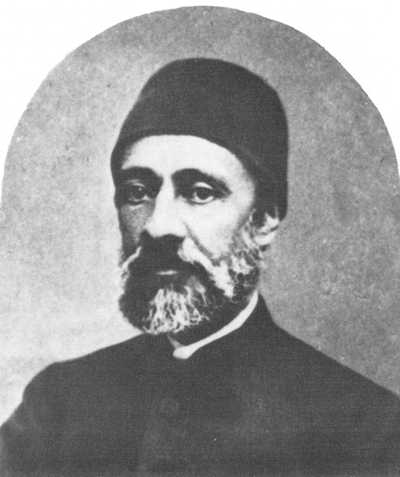
Bahá’u’lláh Warns ‘Álí Páshá
Soon after His confinement in the prison barracks in 1868, Bahá’u’lláh addressed another Tablet of tremendous importance to ‘Álí Páshá, who had been an implacable enemy and the prime instigator of His banishment to the prison of ‘Akká, and who previously had been addressed by Him as Ra’ís (i.e. Chief).
In this second Tablet (Persian), known as the Lawḥ-i-Ra’ís, Bahá’u’lláh recounts with much tenderness and resignation the hardships and sufferings to which He and His companions had been subjected on their arrival in ‘Akká; describes very movingly the cruelties perpetrated by the guards in the prison; reminds the Grand Vizir that the Manifestations of God in every age had suffered at the hands of the ungodly; narrates a story for him of His own childhood, portraying in a dramatic way the instability and futility of this earthly life; counsels him not to rely on his pomp and glory as they would come to an end soon; reveals to him the greatness of this Revelation; points out his impotence to quench the fire of the Cause of God; admonishes him for the iniquities he had perpetrated; emphatically warns him that God’s chastisement would assail him from every direction and confusion overtake his peoples and government; and affirms that the wrath of God had so surrounded him that he would never be able to repent or make amends.
On this last point Mírzá Áqá Ján, Bahá’u’lláh’s amanuensis, asked Bahá’u’lláh what would happen if ‘Álí Páshá changed his attitude and truly repented. Bahá’u’lláh’s emphatic response was that whatever had been revealed in the Lawḥ-i-Ra’ís would inevitably be fulfilled, and if the whole world were to join together in order to change one word of that Tablet they would be impotent to do so.
A majestic contrast took place one hundred years later when passages from this very Tablet, depicting the rigours and hardships of the Most Great Prison, were chanted in the vicinity of Bahá’u’lláh’s Most Holy Tomb, in the presence of over two thousand of His followers gathered from every corner of the world to commemorate the centenary of the arrival in ‘Akká of the One Whom the world had wronged.

The Tablet of Fu’ád
Another Tablet of great significance, the The Tablet of Fu’ád, was revealed in 1869, soon after the premature death in Nice, France, of Fu’ád Pasha, the foreign minister of the Sultan and a faithful accomplice of the Prime Minister in bringing about the exile of Bahá’u’lláh to ‘Akká. It was revealed in honour of one of Bahá’u’lláh’s most devoted apostles, Shaykh Káẓim-i-Samandar (father of the late Hand of the Cause of God Ṭaráẓu’lláh Samandarí). The following passage from it contains the clear prediction of the downfall of ‘Álí Páshá and the Sultan himself: “Soon will We dismiss the one who was like unto him (i.e. ‘Álí Páshá), and will lay hold on their Chief (i.e. the Sultan) who ruleth the land, and l, verily, am the Almighty, the All-Compelling.” Soon after the revelation of the Tablet, ‘Álí Páshá: was dismissed from his post, and two years later he died.
In those days the believers in Persia often referred to Baha’u’llah’s newly revealed Tablets to the kings and rulers of the world, and many non-Bahá’ís made their acceptance of the Faith conditional upon the fulfilment of the warnings they contained.

A notable example is the case of Mírzá Abu’l-Faḍl, the greatest of Bahá’í scholars. He was renowned for his knowledge and learning among the divines of lslam, and was the head of the Theological College in Tihran. His first contact with the Faith was through meeting a blacksmith who was a Bahá’í at his shop in the outskirts of Tihran. Never before had Mírzá Abu’l-Faḍl been so humiliated as on this occasion, when, with all his knowledge, he was utterly confounded by the amazing force of the argument of this illiterate Bahá’í. The blacksmith immediately reported this whole episode to a Bahá’í friend, ‘Abdu’l-Karím, who, although he did not belong to the learned class, pursued Mírzá Abu’l-Faḍl and eventually succeeded in bringing him to his house to discuss the Faith.
At this meeting, and subsequent ones, Mírzá Abu’l-Faḍl, confronted with some simple Bahá’ís who were not of his calibre, found himself over and over again incapable of refuting the clear proofs and arguments put forward by his uneducated Bahá’í teachers. He marvelled at these men who answered his difficult and abstruse questions so simply and so brilliantly. From there on he visited more often the house of ‘Abdu’l-Karim. He read many of the Writings of Bahá’u’lláh and met many learned Bahá’ís, but his immense knowledge was a barrier and a veil.
One day in 1876 he met Ḥájí Muḥammad Ismá‘íl-i-Káshání, surnamed Anís. Mírzá Abu’l-Faḍl was handed the original copy of this Súrih in the very handwriting of Mírzá Áqá Ján, Bahá’u’lláh’s amanuensis; the Tablet wherein Baha’u’llah foretells that Adrianople will pass out of the Sultan’s hand and that confusion will overtake his kingdom. He was also given the Tablet of Fu’ád, in which the downfall of the Sultan is clearly prophesied. Upon seeing these two Tablets Mírzá Abu’l-Faḍl made his acceptance of the Faith conditional upon the fulfilment of these prophecies.
His Bahá’í friends pursued him no longer. A few months passed and the news of the assassination of Sulṭán ‘Abdu’l-‘Azíz reached Tihran. On hearing the news Abu’l-Faḍl became very agitated. His soul was yearning for confirmation of the truth of this Cause, and yet his heart was not touched by the light of faith. He sat the whole night, read some Tablets of Bahá’u’lláh, and prayed with absolute sincerity until his eyes were opened and he knew the truth of the Cause of God. At the hour of dawn he went to the house of that faithful friend ‘Abdu’l-Karím, and when the door was opened he kissed the threshold of that house and prostrated himself at the feet of the man who, through perseverance and love, had given him the gift of the Faith and led him to the truth.
It is no exaggeration to say that among the apostles of Baha’u’llah there was no one who surpassed Mírzá Abu’l-Faḍl in his knowledge, his humility and self-effacement. Ali-Kuli Khan, a well-known and learned Bahá’í who was commissioned by ‘Abdu’l-Bahá to serve Mírzá Abu’l-Faḍl in America and act as his interpreter, has described him so well in these few lines: “If I had never seen ‘Abdu’l-Bahá and Shoghi Effendi, I would consider Mírzá Abu’l-Faḍl the greatest being I ever laid eyes on.”
The Downfall of a Monarch and a Pope
Let us turn our thoughts again to Bahá’u’lláh. Though captive in the hands of His enemies and cut off from the outside world, the Supreme Pen wrote many more Tablets in the prison of ‘Akká. In the year 1869 two important Tablets were revealed and delivered; one addressed to Napoleon III, in which Bahá’u’lláh explicitly foretells his extinction; the other to Pope Pius IX. Within almost a year’s time Napoleon, the most powerful monarch of his time in Europe, was driven into exile and suffered an ignominious death, while in the same year the supreme Pontiff’s temporal powers which had existed for many centuries, were seized from him and his vast dominion was reduced to the tiny Vatican State.
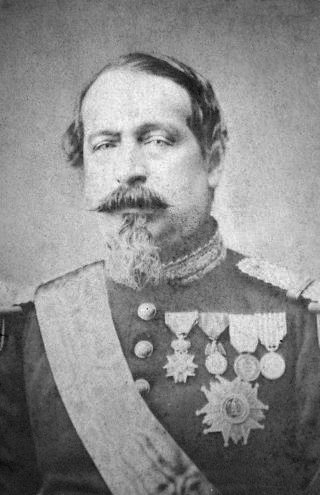
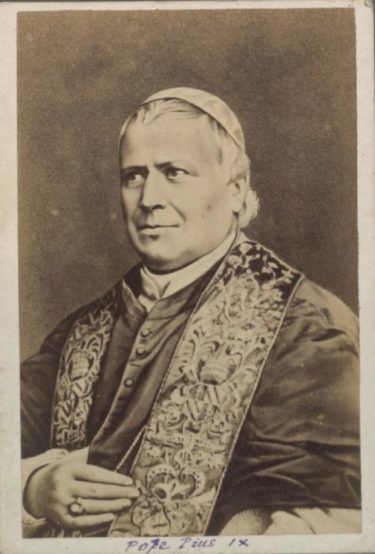
Parallel with these events and indeed, ever since Bahá’u’lláh had been sent to the prison of ‘Akká, the believers in Persia were desperately trying to establish contact with Him. Many travelled on foot all the way, but could not gain admittance to that city. The officials had taken many precautions in order to prevent the Bahá’ís from entering. The few Azalís, headed by the notorious Siyyid Muḥammad-i-Iṣfahání, who is described by the beloved Guardian as the “embodiment of wickedness”, were housed in a certain room overlooking the landgate. One of their functions was to watch for any Bahá’í who might wish to enter the city and to inform the guards. This they did with great zeal and enthusiasm. Many believers, even though they had disguised themselves, were recognized by these men and were not allowed to enter.
Every day a party consisting of a small number of Baha’u’llah’s companions, including ‘Abdu’l-Bahá, was allowed out of the barracks in order to purchase food and other necessities in the markets of ‘Akká. The first time that the people of ‘Akká took notice of ‘Abdu’l-Bahá was in a butcher’s shop. While waiting to be served He noticed that a Christian and a Muslim were discussing their faiths, but the Muslim was being defeated. Thereupon, ‘Abdu’l-Bahá simply and eloquently proved the authenticity and truth of Islam for the Christian. The news of this spread and warmed the hearts of many people of ‘Akká towards the Master; this was the beginning of His immense popularity among the inhabitants of that city.
During these daily visits, the people of ‘Akká came in touch with the person of ‘Abdu’l-Bahá. They felt His genuine love and compassion and were attracted to His magnetic personality. Gradually their fear and animosity towards Bahá’u’lláh and His followers were removed, and many became sympathetic to the Faith and its Founder. Some of these people who were attracted to the Faith tried, at times to help the believers, who were refused entry, by lowering ropes and pulling the believers up over the walls of the city—attempts which however were foiled by the guards.
The first two believers who managed to get into the city were Ḥájí Sháh Muḥammad and Ḥájí Abu’l-Ḥasan, both from the province of Yazd. The former was the first Trustee of Bahá’u’lláh, and was martyred. The latter, known also as Ḥájí Amín who succeeded him, lived to an old age and continued to be the Trustee of the Ḥuqúqu’lláh during the ministry of ‘Abdu’l-Bahá and part of that of the Guardian. The dominating factor in the lives of these two heroes of the Faith was a passionate love for Bahá’u’lláh. In order to enter the city they bought some camels and disguised themselves as Arabs. No one recognized them as Bahá’ís, and they were allowed in.
In the city they met ‘Abdu’l-Bahá, and the news of their arrival was conveyed to Baha’u’lláh. Arrangements were made for them to meet Bahá’u’lláh in the public bath, but with the strict instructions that they show no signs of recognition or emotion. However, on beholding the face of his Beloved, Ḥájí Amín was so overwhelmed that his body began to tremble. He fell to the ground and hit his head on a stone, was badly injured, and was hurriedly carried out by his friend.
The arrival in ‘Akká of these two souls, and a few others who managed to get in afterwards, established a vital link between the Community of the Most Great Name and its exalted Founder, from Whom they were so cruelly cut off. Letters from the believers began to pour in, and Tablets were sent out. This process, which called for acts of sacrifice and heroism on the part of the many believers who risked their lives in order to maintain a two-way communication channel, continued throughout Bahá’u’lláh’s life. Men like Shaykh Salmán, honoured by the appellation of “the Messenger of the Merciful”, who in previous years had carried Bahá’u’lláh’s Tablets from ‘Iráq and Adrianople, continued in this arduous task, travelling on foot between ‘Akká and Persia, and, in the utmost poverty, eating mostly bread and onions for sustenance. This great hero of the Cause, though illiterate, stands out among the disciples of Bahá’u’lláh as one of the spiritual giants of this Dispensation.
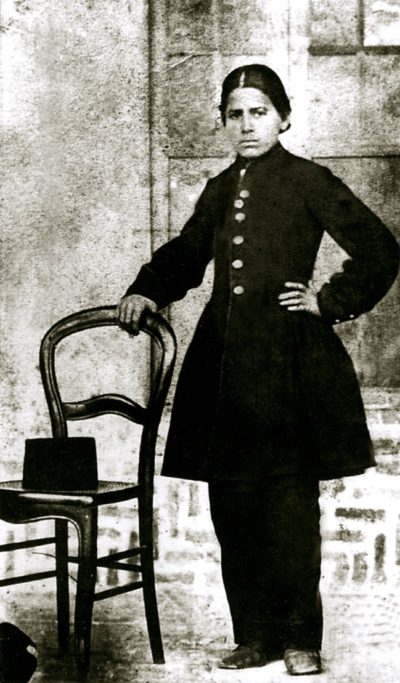
Badí—The Handful of Dust
About a year after Bahá’u’lláh’s arrival in ‘Akká, a young Persian, aged seventeen, by the name of Áqá Buzurg, disguised himself as an Arab and entered the city. Although his father, a survivor of the upheaval of Shaykh Ṭabarsí, had been a devoted Bahá’í, Áqá Buzurg had shown no interest in the Faith until he met Nabil in the city of Níshápúr, in northeast Persia, and was converted. He then decided to go and attain the presence of Bahá’u’lláh.
Upon his arrival in the city of ‘Akká in 1869 he began to roam around until he came to a mosque where he saw a few Persians and recognized the Master among them. He wrote a note, in which he declared his faith, and handed it to ‘Abdu’l-Bahá, Who greeted him warmly and took him along with the party straight to the barracks, where he was ushered into the presence of Bahá’u’lláh.
In a Tablet Mírzá Áqá Ján mentions that Áqá Buzurg was summoned twice to meet Bahá’u’lláh alone. It was in the course of these momentous audiences that the hands of Bahá’u’lláh created a new being and bestowed upon him the title of Badí‘ (i.e. wonderful). For more than two years Bahá’u’lláh had been waiting for a devoted soul to arise and deliver His Tablet to Náṣiri’d-Dín Sháh of Persia. While in Adrianople He had written some passages on the cover of the Tablet, anticipating that the Almighty would cause one of His servants to arise, detach himself from all earthly things, adorn his heart with the ornament of courage and strength, take the Tablet, walk all the way to the capital of Persia, hand it in the manner described by Him to the King, and in the end be prepared to give his life, if necessary, with great joy and thankfulness. “We took a handful of dust,” is Bahá’u’lláh’s own testimony referring to Badí‘, “mixed it with the waters of might and power and breathed into it the spirit of assurance.”
In a Tablet revealed in honour of the father of Badí‘, who was also martyred a few years later, the Pen of the Most High, in great detail, portrays the manner in which this new creation came into being. He describes that when the appointed time had arrived the Tongue of Grandeur uttered “one word” which caused his whole being to tremble, and that were it not for God’s protection he would have been dumbfounded. Then the Hand of Omnipotence began creating the new creation, and “breathed into him the spirit of might and power”. So great had been the infusion of this might, as attested by Bahá’u’lláh, that, single and alone, Badí‘ could have conquered all that is on earth and in heaven. Bahá’u’lláh mentions that when this new creation came into being, Badí‘ had smiled in His presence and manifested such steadfastness that the Concourse on high was deeply moved and uplifted.
In the same Tablet, referring to the loftiness of the station of Badí‘, He states that no Tablet can convey its significance nor any pen describe its glory. Badí‘ left the Most Great Prison and went to Haifa. Baha’u’llah entrusted Ḥájí Sháh Muḥammad Amín (His Trustee) with a small case and a Tablet to be delivered into the hands of Badí‘ at Haifa. The following is the story as recounted by this Trustee to an eminent Bahá’í historian.
I was given a small case and was instructed to hand it to Badi‘ at Haifa together with some money. I did not know anything about the contents of the case. I met him at Haifa and gave him the glad tidings that he had been honoured with a trust . . . we left the town and walked up Mount Carmel where I handed him the case. He took it into his hands, kissed it, and knelt with his forehead to the ground; he also took the sealed envelope, walked twenty to thirty paces away from me, sat down facing ‘Akká, read it, and again knelt with his forehead to the ground. The rays of ecstasy and the signs of gladness and joy appeared on his face.
I asked him if I could read the Tablet also. He replied, ‘There is no time’. I knew it was a confidential matter. But what it was I had no idea—l could not imagine such a mission.
I mentioned that we had better go to Haifa, in order that, as instructed, I might give him some money. He declined to go with me, but suggested that I could go alone and bring it to him.
When I returned, in spite of much searching, I could not find him. He had gone. . . We had no news of him until we heard of his martyrdom in Ṭihrán. Then I knew that the case contained the Tablet of Bahá’u’lláh to the Sháh, and the sealed envelope, a holy Tablet containing the glad tidings of the future martyrdom of the one who was the essence of steadfastness and strength.
The same chronicler has written the following account given by a certain believer who met Badí‘ on his way to Persia and travelled with him for some distance.
. . he was very happy and smiling, patient, thankful, gentle, and humble. All that we knew was that he had attained the presence of Bahá’u’lláh and was now returning to his home in Khurásán. Many a time he could be seen to have walked about a hundred steps, leaving the road in either direction, turning his face towards ‘Akká, kneeling with his forehead to the ground and could be heard saying, ‘O God! Do not take back, through Thy justice, what Thou hast vouchsafed unto me through Thy bounty, and grant me the strength for its protection.’
Thus Badí‘ travelled on foot all the way to Ṭihrán and did not meet with anyone there. On arrival he discovered that the King was staying at his summer residence. He made his way to that area and sat on the top of the hill overlooking the Sháh’s palace at Níyávarán. The King on successive days, looking through his binoculars, saw the same man dressed in white, sitting in the same position on the hill. He ordered his men to find out who he was and what he wanted.
Badí‘ told them that he had a letter from a very important personage for the Sháh and must hand it personally to him. After searching him they brought him to the King.
Only those who are well versed in the history of Persia in the nineteenth century can appreciate the immense dangers which faced an ordinary person like Badí‘ wishing to meet a palace official, let alone the King. For at that time the King enjoyed absolute power and was surrounded by ruthless officials who would put to the sword anyone who would dare to utter one word, or raise a finger, against the established institutions of that oppressive regime. The loud voice of the “herald” who announced to the public in the streets the approach of the King’s carriage, shouting, “Everyone die! Everyone go blind!” would strike terror into the hearts of the citizens who, with eyes cast to the ground, stood motionless and still as their King and his men passed by.
Being invested by Bahá’u’lláh with tremendous powers, this young man of seventeen, assured and confident, stood straight as an arrow, face to face with the King. Calmly and courteously he handed him the Tablet and in a loud voice called out the celebrated Arabic phrase: “O King! I have come to thee from Sheba with a weighty message.”
The King sent the Tablet to the divines of Ṭihrán and commanded them to write an answer to Bahá’u’lláh. Finding themselves incapable of doing so, they evaded the issue and put forward some excuses which displeased the King immensely.
Badí‘ was arrested, and brutally tortured. His endurance and fortitude amazed the executioner and other officials. They took a photograph of him as he sat in front of a brazier containing hot bars of iron with which he was branded. Eventually his head was beaten to a pulp and his body thrown into a pit. This was July 1870.
For three years after the martyrdom of Badí‘, Bahá’u’lláh referred in His Tablets to his steadfastness and sacrifice, extolled his station, and bestowed upon him the title “Pride of Martyrs”.

The Tablet to the Sháh
For over two decades the people of Persia had witnessed memorable acts of heroism performed by a small band of God-intoxicated heroes, whose devotion and self-sacrifice had lit a great conflagration throughout that country. The Message of the Báb, the accounts of His martyrdom, and the transforming power of His Cause had already reached to every corner of that land; and from there its reverberations had echoed to the Western world. And yet, as attested by Bahá’u’lláh, not until this momentous Tablet was delivered to the King had the nature of the Cause of God or the claims of its Founder, or its principles and teachings, been clearly enunciated to those who held the reins of power in their hands.
In the annals of the Faith, Badí‘ stands out among the first heroic souls to arise for the proclamation of the Cause of Bahá’u’lláh. He joyously sacrificed himself in His path.
This sacrifice was not in vain. The Cause of Bahá’u’lláh—which, from the time of its inception, had been suppressed; whose adherents in the land of its birth had been so cruelly persecuted and at times mowed down in thousands; whose very name, as anticipated by Náṣiri’d-Dín Sháh and the divines of Persia, was to have been obliterated from the pages of history—has, in spite of much opposition, tremendously expanded during the last hundred years. Its light has been systematically diffused to all the continents of the world. The army of its pioneers and teachers, recruited from every race, class and colour, proclaiming to mankind the advent of the Lord of Hosts, has encircled the globe. The rising institutions of its divinely guided Administrative Order have been established, and within its World Centre, in the vicinity of its Holy Shrines, the crowning Edifice of that same Order (The Universal House of Justice)—the only refuge for the world’s tottering civilization —has been majestically erected.
This glorious unfoldment of the Cause in the Formative Age and its future sovereignty in the Golden Age are the direct consequences, on the one hand, of the outpourings of Bahá’u’lláh’s Revelation and, on the other, of the mysterious power generated by the sacrifice of countless martyrs, whose precious blood has flowed in great profusion during the Heroic Age of the Faith.
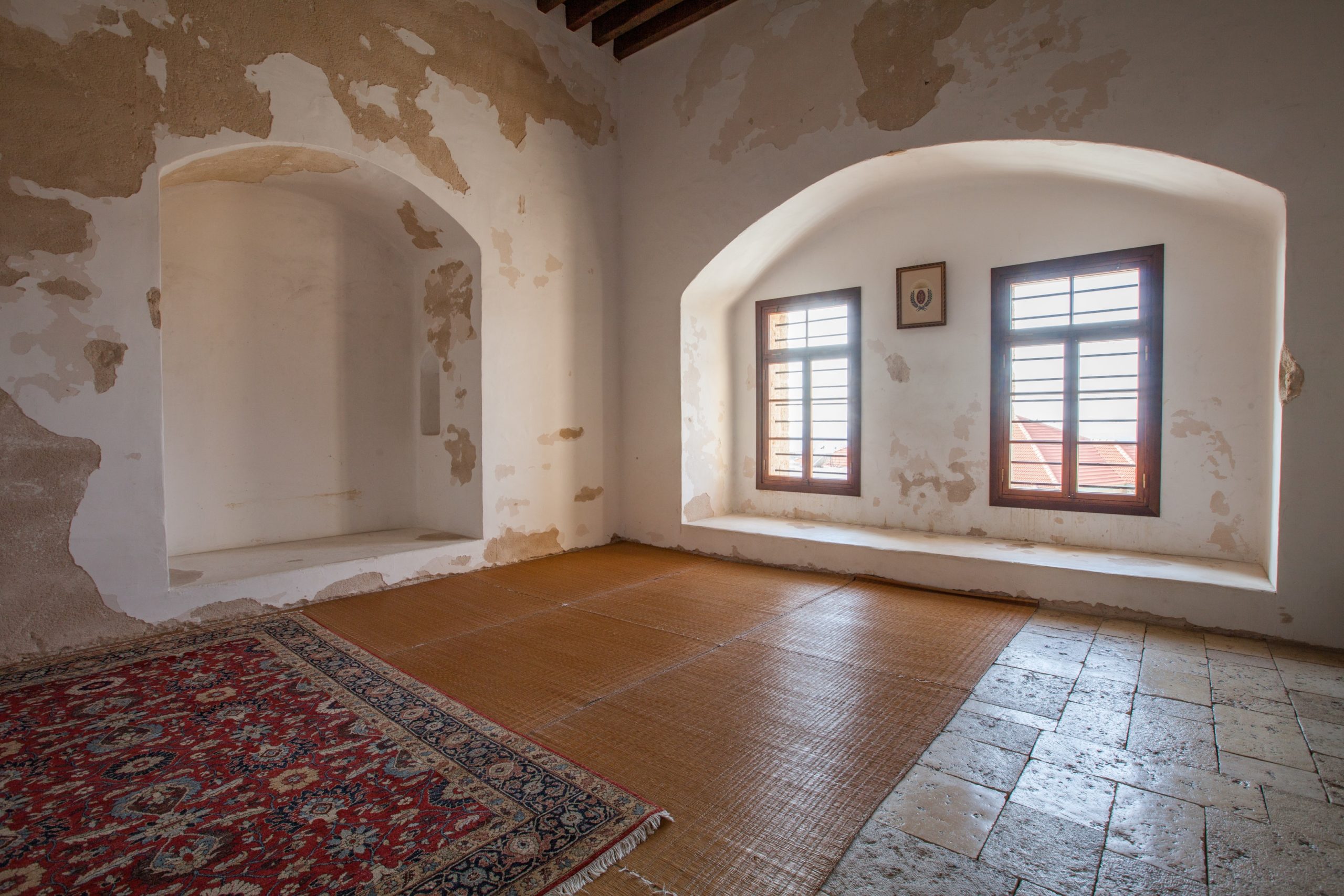
From the 1950-1954 volume of The Bahá’í World, this essay by Hand of the Cause of God William Sears, is a meditation on the sacred city of Akká.
We drove through the newer part of ‘Akká down to the great sweep of sandy beach where a stormy wind lashed the great breakers and drove them as far into the old city as possible. We turned left and wound our way over the hill down into the old city again. The wind blew everyone’s coat collar up around the neck. The day was still gray, misty and chill. The cold crashing of the surf punctuated the silent spots in our conversation as we stood, our backs to the sea wall, gazing across the way at the House of ‘Abbúd.
The sea, the wind, the swirling mist, none could cool down the ardor that stirred inside the pilgrim as he looked upon this gray shell of a house that once sheltered the Supreme Prophet of God. This was once the sanctuary of the Supreme Pen. Its walls had resounded to the words of the Most Great Book, the Mighty Aqdas. Here were formed the laws which would stand inviolate and unaltered for a thousand years. Here were fashioned the provisions which would lay the foundation for the greatest structure in the social history of mankind. Here, those ancient prophetic words had come true, “The Government shall be upon His shoulders.” Here, the Author of the Bahá’í Faith, protected by these blessed walls from the stinging winds of the sea, had poured out the fairest fruit of all His Revelation, the Aqdas—pre-eminent among all the writings which had streamed forth in a never-ending river from His holy pen.
What a plain, unimposing structure. Two stories in height with a small balcony around the second floor front, drab gray in color, bleak in appearance, beautiful to the believer.
We were all staring silently up at the balcony which surrounds the bedroom of Bahá’u’lláh. Many long hours He had paced this balcony, looking out over the sea and down upon the very earth where we were standing. This small balcony, which can be crossed in less than ten paces, furnished almost the only outside exercise for Bahá’u’lláh in seven long years of imprisonment within the walls of this house.

Before entering the House, we walked to the small public square in the rear. Our gracious host, Leroy Ioas, holding his hat and coat-collar against a wind that whirled tiny cyclones of ‘Akká dust across the courtyard, showed us the exact spot where the Master had stood and distributed alms and food to the poor.
Salah led us back between the houses and into the side door of the House of ‘Abbúd. We crossed an inner court and started up a flight of stairs, turning to the right twice and continuing to climb until we reached the living quarters of the Holy Family. We saw the small room that held thirteen believers the first night spent in this house. We saw the upper shelf which one of the friends had slept upon that first night and, rolling over too far to one side, had toppled down upon the Master.

We removed our shoes and walked across another room of soft carpets, through a small hallway and then turned left into Bahá’u’lláh’s bedroom. Against the wall on the sea-side of the room was a long cushioned bench. Upon the south end, toward Haifa, rested the táj of Baha’u’llah, marking the place where He often would sit. A few feet away, along the south wall, was a rocking chair which He used. Upon the floor, a carpet brought with them all the way from Adrianople.
As I write this now in Johannesburg, I am back there again. I can feel my pulse accelerate and my heart beat stronger. The atmosphere of these holy places never leaves you. It comes rushing back whenever you turn to ‘Akká and Haifa. Hour after hour, month after month, year upon year, Bahá’u’lláh had moved back and forth in this room. At times He would turn left in the doorway and go out on the balcony which runs across the front of the house. After Salah chanted a prayer, we followed Bahá’u’lláh’s path to the balcony and looked out upon the turbulent sea. The wind, it seemed to us, was still whipping up the indifferent Mediterranean and driving it toward the shore, where in mighty rollers it bowed and prostrated itself before the throne of Majesty.
The room of revelation (where Baha’u’llah revealed the Aqdas) is quite different from the others. This was also ‘Abdu’l-Bahá’s bedroom. It is paneled in wood which is to be found in other places associated with Him. This bedroom is in the back corner of the House. We could look down into the back courtyard. … We saw many of the books of ‘Abdu’l-Bahá, His writing equipment, papers, the simple iron bed—many things that were much loved by Him and are revered by all who look upon them.
Above all else, the mind tries to take in the truth that here in this room, a room that is simplicity itself, was revealed the Book of Laws, the Most Great Book, the mightiest written testimony since the beginning of our recorded times. Its Author would cast His Shadow of guidance for five hundred thousand years!
It is too much to understand. The mind willingly surrenders and turns to examine the surroundings, the little things it can comprehend. ‘Abdu’l-Bahá sat here, He walked here, He knelt here, He looked out this window. But irresistibly your thoughts keep coming back to that one inescapable fact—it was here that Bahá’u’lláh revealed the Aqdas.
Emptying yourself of every single thing to which the mind can cling, you ask Almighty God to pour into your heart a true appreciation of this experience you are undergoing. … The presence and significance of these holy places are like hammer-blows to those of us who have lived in a world so remote from the spirit.
Those veritably spiritual thunderbolts the Shrine of Bahá’u’lláh, of the Báb, and of ‘Abdu’l-Bahá, the room at Bahjí where Bahá’u’lláh passed away, the mansion of Mazra‘ih, the Garden of Riḍván—all had numbed the senses until the cup could not contain the flood.
Each of us said a prayer before departing from this cradle of future civilization. When we made our way downstairs, there was additional conversation, but none of it registers. The hearing was working, but the comprehension and recording instruments were unable to function. This was a mercy of God. The body must be much like an electrical system. It can successfully carry its normal “load” of power, but when subjected suddenly to an incredibly strong current, it “blows out” the fuse at its point of protection. A similar phenomenon happens to the pilgrim, several times, in fact. Something breaks the connection and permits no more impulses to register. The system cannot bear them. (Bahá’u’lláh has written of this spirit, saying of the wine of revelation that it is so inebriating to the Prophet, Himself, that the pen is stilled and can move no more.)

The sun came out gaily for a brief moment, for the first time, as we strolled through the picturesque streets of “Old ‘Akká.” It splashed against the drab earth-colored walls and transformed them into a happy tan. We traced our way along many of the favorite walks of the Master.
We paused and took photographs in the doorway of the house of the former Mufti of ‘Akká. He had been a bitter enemy of Bahá’u’lláh. Salah, caretaker at Bahjí, told us the story of the two attempts on the life of Bahá’u’lláh made by this Mufti while Bahá’u’lláh was still in prison. Once with a hidden dagger, but Baha’u’llah before admitting him to His presence said, “Let him first cleanse his hands.” A second time, the Mufti planned to strangle the Blessed Beauty, and Bahá’u’lláh said before admitting him, “First let him cleanse his heart.” The Mufti became an ardent believer and collected all the “traditions” to be found in the Faith about ‘Akká.
What a delightful city “Old ‘Akká” is to visit. Salah, who was born within its walls, greeted almost everyone. He told us many intriguing stories about its non-Bahá’í history as well. We entered a small door built in one of the lower walls of the prison, walked to the center of a cellar-like cavern. Below us excavation had been started. How strange to know that beneath the prison lies this famous church built by Richard, the Lion-hearted. The packed earth on which we stood was high up toward the top of the Gothic arches. The pillars were buried many, many feet in the solid earth below us.
Salah pointed out the house to which Bahá’u’lláh had been taken in custody when some of His followers had disobeyed His commands, quarreled with three enemies of the Faith and slew them. Bahá’u’lláh was dictating Tablets to His secretary when troops surrounded His house. Crowds gathered quickly. They shouted at Bahá’u’lláh as the Governor, sword in hand, led Him away for questioning. His innocence was established and Bahá’u’lláh was freed; the Governor apologized for his own bad behavior.
We began our approach to the prison itself. The steps up which Bahá’u’lláh had walked to enter the fortress that first time have been taken down. They have left their scar across the body of the prison wall. We all stopped and gazed up at the marks of that old stairway. This was as far as we could retrace the steps of banishment. In order to enter the prison, we had to drive around the city to the front by the sea wall.
We parked by the gate, passed the guards, and walked about three hundred yards up to the prison entrance. As you cross the small bridge over the moat, you can see the cannon balls of Napoleon embedded in the walls. They are splashed with red paint to make them easily visible. Passing through a small arched entrance, we approached the courtyard.
The prison is now a hospital for the insane and feeble-minded. You can see them exercising in the very courtyard where the believers were herded together that first day. There was a sound of heavy keys rattling in a metal door, the door swung open, and you entered the prison barracks. Passing through an ante-room of poor, unfortunate sick ones, you enter the cell-block. In the far left-hand corner is a plaque which reads: Bahá’í Holy Place. . . . This is the cell of Baha’u’llah. The plaque is written in both English and Hebrew.
We removed our shoes outside the great door, and then entered the prison cell where for over two years Bahá’u’lláh had been shut away from the world. This was the heart of the “Most Great Prison.” Even that Black Pit in Ṭihrán, the Siyáh-Chál, a place foul beyond comparison, a dungeon wrapped in thick darkness, so dreadful that no tongue could describe its loathsome smell, had not been called by such a name.

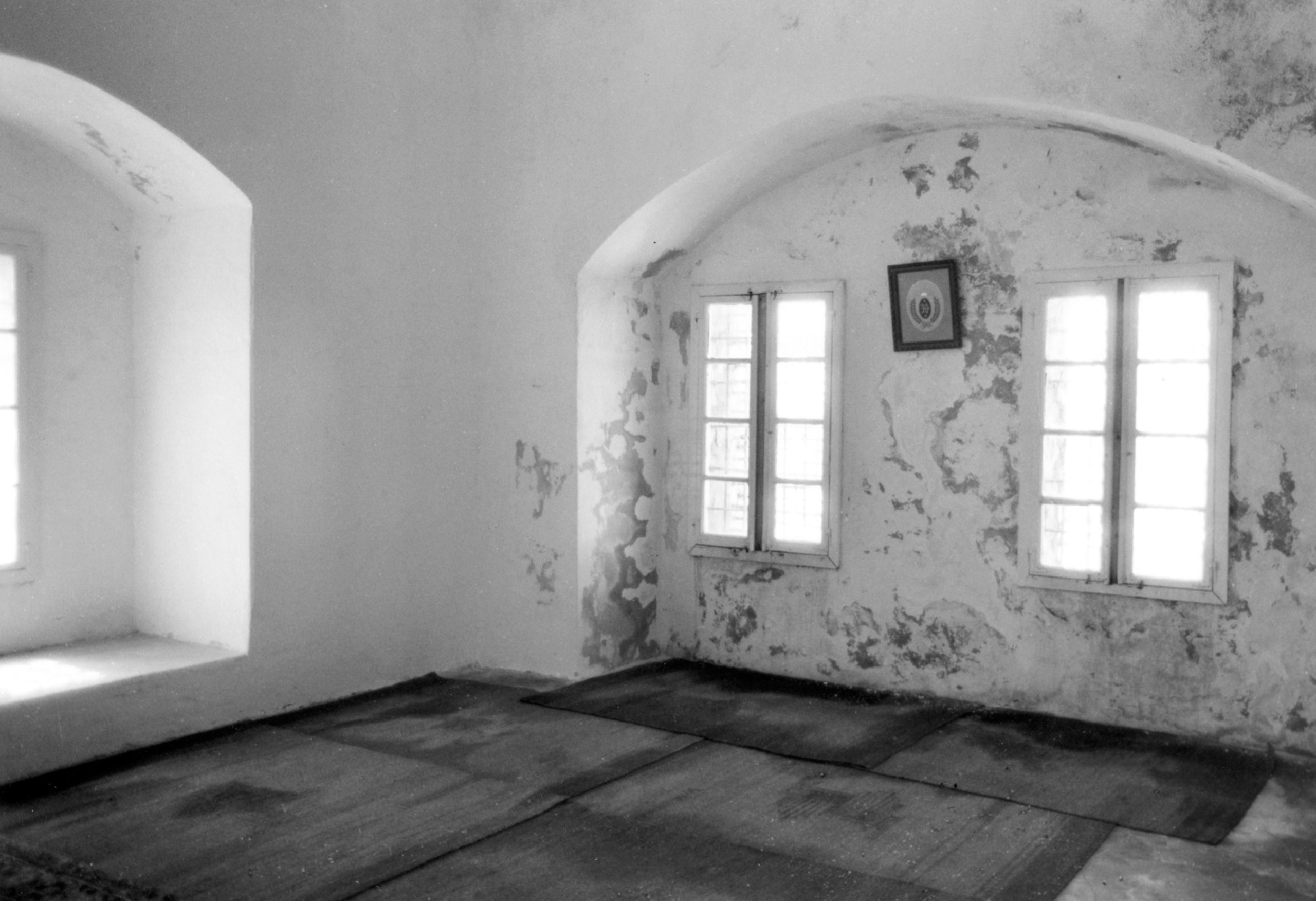
The cell was barren and desolate in Bahá’u’lláh’s day. Now there is a Persian carpet in the corner where He used to sit. There are five straight-backed chairs upon which the pilgrims sit. One window looks out upon the old ‘Akká. The other two windows look out upon the sea. These are the windows shown in most of the photographs.
From here Bahá’u’lláh would look out toward that spot beyond the moat where His followers would stand hoping for a glimpse of His hand waving from the window. We all stood and peered out at that same spot and to the white-capped sea beyond it. Later we walked out to that place of bliss and sorrow and looked up at these two forlorn windows. The face of the prison is bruised and scarred from shell-fire.

Inside the prison-cell itself, the heart is touched and saddened by the sight of that bleak, unfragrant room. True, it has been cleaned and restored, but here and there upon the floor were small fragments of paint and plaster which had fallen from the ceiling and walls. These are a grim reminder of the chilling dampness of this dismal place.
Here in this cell, where but a few paces carry you from end to end, Bahá’u’lláh spent over two years of His precious life. Here it was that Baha’u’llah, Himself, said that His sufferings had reached their culmination.
Our eyes bestowed loving prayers upon each of these places of anguish. After all these years, and even with the reformations, it is still unsanitary and foul in these barracks. The mind refuses to try to picture the misery and abomination that must have surrounded Bahá’u’lláh upon His arrival here. We know that they were herded together, deprived of food and drink, that malaria, dysentery, and the sickening heat added to their sorrows. All were ill but two.
It was here that the two brothers died the same night locked in each other’s arms. Bahá’u’lláh sold His carpet to provide for their winding sheets and burial, but the guards had kept the money and cast them into a pit unwashed and unshrouded.
This is where Bahá’u’lláh’s young son, Mírzá Mihdí, the Purest Branch, was killed. He was pacing the roof at twilight reciting his prayers. He fell through an unguarded skylight on a wooden crate below which pierced his ribs and took his life in less than a day. It was here that this sweet son pleaded with his Father, Bahá’u’lláh, that his life be not saved, but that it be offered as a ransom so that the pilgrims, who so longed for His healing Presence, might be permitted to attain their hearts’ desire. At his tomb in the Monument gardens, we repeated the words of Baha’u’llah written about him:
“Thou art the trust of God and His treasure in this land. Erelong will God reveal through thee that which He hath desired.”
From here Bahá’u’lláh wrote many of His tablets to the kings of the earth, proclaiming that the only remedy for the ills of the world was the union of all its peoples in one common faith, and that only a divine, inspired Physician could bring this to pass.
Many were the wholesome truths that flowed from that Supreme Pen within this prison cell. Each of these tablets and writings took on a new force since we had come to the scene of their origin.
The doors that did not open for Bahá’u’lláh for two years, swing wide for you, then grind closed upon their hinges. We put on our shoes, everyone silent, lost in the weight of thoughts which held words down, unformed.
This was the last stop in ‘Akká. We were grateful. We wanted no conversation; no invasion of that place the mind had set aside for reflecting upon this unequaled experience.
There was no receptiveness left to truly appreciate the stories told as we descended the stairs; the room below where the rest of the pilgrims had been quartered, the place where the Master had made broth for all—made broth with little more than air for ingredients. His words spoken in London sent another sliver of pain into the body. He had made so much broth in those days, He said, that He could make a very good broth with a very little. How the Master loved His wonderful Father. He told of this loathsome prison. How Bahá’u’lláh would call the pilgrims together, would make them laugh at their troubles, until they forgot their stone beds, the lack of food and water. He banished the pain of their illness and the ravages of their fever. He would tell them stories and lift their hearts. He would start them to laughing so loudly that they must be cautioned for fear the sentinels would believe they were mad if they could laugh and enjoy themselves in these conditions of utter dreadfulness.
What tenderness must have been in the Master’s eyes as He placed His graceful hand upon the luxurious furniture of the Western world and said, “We had no chairs such as this in the prison of ‘Akká; no soft beds to lie upon; no delicious food to nourish us. But I would not exchange all of these days for one moment of the sweetness of those hours in the presence of the Blessed Beauty.”

Seeing these poor, unfortunate inmates of the asylum for the last time, one thinks: How like the entire world is this prison barracks. These pitiful wretches, unbalanced, living in another dead world (like all humanity) are within but a few paces of the Holy Place of Bahá’u’lláh‘ Healer of all ills.
We crossed the moat and walked out into the open air. The clouds were gone. The sun was out ruling the blue sky all by itself. The sea, a deeper blue, was still charging up to the old sea wall and plunging against its rocks. There was a queer, mingled feeling in possession of me. It was half of joy and half of sadness, gladness and heavy-heartedness, happiness and sorrow. Perhaps it was the accumulation of the day’s emotions, unsettled and unabsorbed within me. Each experience taking charge of my being at alternate intervals, just as the sea sent alternate breakers against the wall.
I did not look back. It was all locked forever in my heart.
I am happy to speak to you this evening about one of the greatest young women in the world, one of the most spiritual, one of the greatest poets of Írán, and the first woman of her time in Central Asia to lay aside the veil and work for the equal education of the girl and the boy. She was the first suffrage martyr in Central Asia. The woman suffrage movement did not begin with Mrs. Pankhurst in the West, but with Ṭáhirih, also often called Qurratu’l-‘Ayn of Írán. She was born in Qazvín, Persia, in 1817.
Picture to your mind one of the most beautiful young women of Írán, a genius, a poet, the most learned scholar of the Qur’an and the traditions, for she was born in a Muhammadan country; think of her as the daughter of a jurist family of letters, daughter of the greatest high priest of her province and very rich, enjoying high rank, living in an artistic palace, and distinguished among her young friends for her boundless, immeasurable courage. Picture what it must mean for a young woman like this, still in her twenties, to arise for the equality of men and women, in a country where, at that time, the girl was not allowed to learn to read and write!
The Journal Asiatic of 1866 presents a most graphic view of Ṭáhirih, the English translation of which is this: “How a woman, a creature so weak in Írán, and above all in a city like Qazvín where the clergy possess such a powerful influence, where the ‘Ulamás, the priests, because of their number and importance and power hold the attention of the government officials and of the people, how can it be that in such a country and district and under such unfavourable conditions a woman could have organized such a powerful party of heretics? It is unparalleled in past history.”
As I said, in her day girls were not permitted to learn to read and write, but Ṭáhirih had such a brilliant mind, and as a child was so eager for knowledge that her father, one of the most learned mullás of Írán, taught her himself and later had a teacher for her. This was most unusual, for in her day girls had no educational opportunities. She outdistanced her brothers in her progress and passed high in all examinations. Because she was a woman they would not give her a degree. Her father often said what a pity she had not been born a son, for then she could have followed in his career as a great mullá of the Empire.
Ṭáhirih was married when she was thirteen years old to her cousin, the son of the Imám-Juma, a great mullá who leads the prayers at the mosque on Fridays. She had three children, two sons and one daughter. She became a very great poet and was deeply spiritual, she was always studying religion, always seeking for truth. She became profoundly interested in the teachings of Shaykh Aḥsá’í and Siyyid Káẓím Rashti, who were liberalists and said great spiritual reforms would come. Her father was very angry with her because she read their books and her father-in-law was too. But she continued to study their books and she heard about the Báb and Bahá’u’lláh, and their teachings for universal peace and the equal education of the girl and the boy. She believed in these principles whole-heartedly and declared herself a believer.
This great young woman of Qazvín laid aside the veil which Muhammadan women wear; she didn’t put it aside altogether, but she many times let it slip from her face when she lectured. But she declared that women should not wear the veil, should not be isolated, but should have equal rights and opportunities. She quoted her great teacher, Bahá’u’lláh, that man and woman are as the two wings of the bird of humanity, and this bird of humanity cannot attain its highest, most perfect flight until the two wings are equally poised, equally balanced. She was too far ahead of her time, and like other pioneers of great progressive movements, she was imprisoned. Instead of putting her into jail, they made her a prisoner in the home of the Kalantar, that means the Mayor of Ṭihrán. Here several poets and some of the greatest women of the capital came to call, and every one was charmed by her presence. The Sháh-in-Sháh of Persia sent for her to be brought to his palace, and when he saw her he said: “I like her looks, leave her and let her be.”
Náṣiri’d-Dín-Sháh, the ruler, sent her a letter asking her to give up her very advanced ideas and telling her if she did, he would make her his bride, the greatest lady in the land. On the back of his letter she wrote her reply in verse declining his magnificently royal offer. Her words were:
“Kingdom, wealth and ruling be for thee,
Wandering, becoming a poor dervish and calamity be for me.
If that station is good, let it be for thee.
And if this station is bad, I long for it, let it be for me!”
She was a prisoner in the Mayor’s home for more than three years and during all this time the women of Írán came to love her more and more, and all people were enchanted with her poetry, and many came to believe as she did, that this is the dawn of a great new universal epoch when we must work for the oneness of mankind, for the independent investigation of truth, for the unity of religions and for the education of the girl equally with that of the boy. The orthodox clergy were afraid of these new progressive ideals and as they were the power behind the government, it was decided to put Ṭáhirih to death. They had to do it secretly because they knew how many hundreds of the most important people in Ṭihrán loved her.
They decided upon September 15, 1852, for her death. With her prophetic soul she must have divined it for she wrote in one of her poems: “At the gates of my heart I behold the feet and the tents of hosts of calamity.” That morning she took an elaborate bath, used rosewater, dressed herself in her best white dress. She said good-bye to everyone in the house, telling them that in the evening she was leaving to go on a long journey. After that she said she would like to be alone, and she spent the day, as they said, talking softly to herself, but we know she was praying. They came for her at night and she said to them, “I am ready!” The Mayor had them throw his own cloak about her so that no one would recognize her, and they put her upon his own horse. In a roundabout way through smaller streets they took her to a garden and had her wait in a servant’s room on the ground floor. The official called a servant and ordered him to go and kill the woman downstairs. He went but when Ṭáhirih spoke to him he was so touched by her sweetness and holiness, that he refused to strangle her, and carried the handkerchief again upstairs. The official dismissed him, called a very evil servant, gave him liquor to drink, then handed him a bag of gold as a present, put the handkerchief into his hands and said, “Go down and kill that woman below and do not let her speak to you.” The servant rushed in, brutally strangled her with the handkerchief, kicked her and while she was still living threw her into a dry well and filled it up with stones.
But they could not bury her there! Her influence had gone around the whole world. Ṭáhirih, Qurratu’l-‘Ayn, has become immortal in the minds of millions of men and women, and her spirit of love and heroism will be transmitted to millions yet unborn.
I should like to explain to you what her names mean. One of her teachers, Káẓím Rashti gave her the name of Qurratu’l-‘Ayn, which means “Consolation of the Eyes,” because she was so young, so beautiful, so spiritual. Bahá’u’lláh gave her the name Ṭáhirih, which means “The Pure One.” While still in the twenties she began to preach the equal rights of men and women, she was martyred at the age of thirty-six years, and yet today, eighty-seven years after her cruel martyrdom, the women of Írán and of many other countries of the Islámic world no longer are allowed to wear the veil, and girls are receiving education. She did not die in vain. Ṭáhirih’s courageous deathless personality forever will stand out against the background of eternity, for she gave her life for her sister women. The sweet perfume of her heroic selflessness is diffused in the whole five continents. People of all religions and of none, all races, all classes, all humanity, cherish the memory of Ṭáhirih and weep tears of love and longing when her great poems are chanted.
When I was in Vienna, Austria, a few years ago, I had an interview with the mother of the President of Austria, Mrs. Marinna Hainisch, the woman who has done most for woman’s education in Austria, that nation of great culture. Mrs. Hainisch established the first high schools for girls in her land. She told me that the inspiration of all her lifework had been Ṭáhirih of Írán. Mrs. Hainisch said: “I was a young girl, only seventeen years old when I heard of the martyrdom of Ṭáhirih, and I said, ‘I shall try to do for the girls of Austria what Ṭáhirih tried to do and gave her life to do, for the girls of Írán.’” She told me: “I was married, and my husband too, was only seventeen; everybody was against education for girls, but my young husband said: ‘If you wish to work for the education of girls, you can.’” I mentioned this interview over in Aligrah, India, a short time ago when I spoke to the university students at the home of Professor Ḥabíb, and at the close of my talk another guest of honor arose, a woman professor of Calcutta University, and asked if she could speak a few words. She said, “I am Viennese, I was born in Vienna and I wish to say that Mrs. Marinna Hainisch established the first college for the higher education of girls in Austria and I was graduated from the college.” This is a proof of the influence of Ṭáhirih. Mrs. Hainisch had said to me, “It is so easy for you, Miss Root, to go all around the world and be given the opportunity to speak on the equal education of the girl and the boy. It was so hard for me to interest people in this new idea in my day, but I remembered Ṭáhirih and I tried. Poor Ṭáhirih had to die for these very ideals which today the world accepts!”
When I was in Cawnpore, India, and spoke in a girls’ college on Ṭáhirih’s life the founder and the donor of that great college arose and said: “It is my hope that every girl in this school will become a Ṭáhirih of India.”
Sir Rai Bahadur Sapru of Allahabad, one of India’s greatest lawyers, said to me: “I love Ṭáhirih’s poems so much that I have named my favorite little granddaughter Ṭáhirih. I have tried for years to get her poems, and now today you give them to me.” When I was in the Pemberton Club in London one evening, a well known publisher said to me: “I shall get Ṭáhirih’s poems collected and publish them at a great price.” But he could never get them. I should like to tell you, dear listeners on the air, that the day after the martyrdom of Ṭáhirih, the authorities burned her clothing, her books, her poems, her birth certificate; they tried to wipe out every trace of her life; but other people had some of her poems, and a friend of mine worked for years to gather them together, copied them in longhand and gave them to me as a present when I was in Írán in 1930. Another friend in India, Mr. Isfandiar K. B. Bakhtiari of Karachi, has twice published one thousand copies of these poems for people in India. In my book Ṭáhirih the Pure, Írán’s Greatest Woman, published July, 1938, I included her poems and published three thousand copies. Two of these poems are translated into English, but the original poems are all in the Persian language. They would be very beautiful sung in the Persian language over your radio.
Professor Edward G. Browne of Cambridge University, in his book A Traveller’s Narrative, wrote: “The appearance of such a woman as Ṭáhirih, Qurratu’l-‘Ayn, is in any country and in any age a rare phenomenon, but in such a country as Persia it is a prodigy, nay, almost a miracle. Alike in virtue of her marvelous beauty, her rare intellectual gifts, her fervid eloquence, her fearless devotion and her glorious martyrdom, she stands forth incomparable amidst her countrywomen. Had the Bábí religion no other claim to greatness, this were sufficient, that it produced a heroine like Qurratu’l-‘Ayn.”
And now dear listeners, that we have heard of Ṭáhirih, Qurratu’l-‘Ayn, this first woman suffrage martyr, this first woman in Central Asia to work for the education of girls, what will our own endeavors show forth in this twentieth century?
Today you have equal education for girls and boys in Australia, and you have suffrage for women; but you in Australia and we in the United States and in all other parts of the globe are born into this world to work for universal peace, disarmament, a world court and a strong international police force to ensure arbitration. We are born into this world to work for universal education, a universal auxiliary language, for unity in religion and for the oneness of mankind. Our lives, our world, need strong spiritual foundations, and one of the finest traits of Ṭáhirih, and one that helped the world most, was her fidelity in searching for truth! She began as a little girl and continued until the very day of her passing from this world.
O Ṭáhirih, you have not passed out, you have only passed on! Your spiritual, courageous life will forever inspire, ennoble and refine humanity; your songs of the spirit will be treasured in innumerable hearts. You are to this day our living, thrilling teacher!
